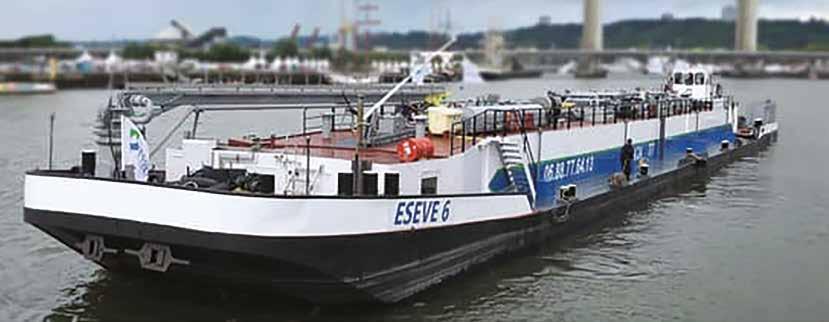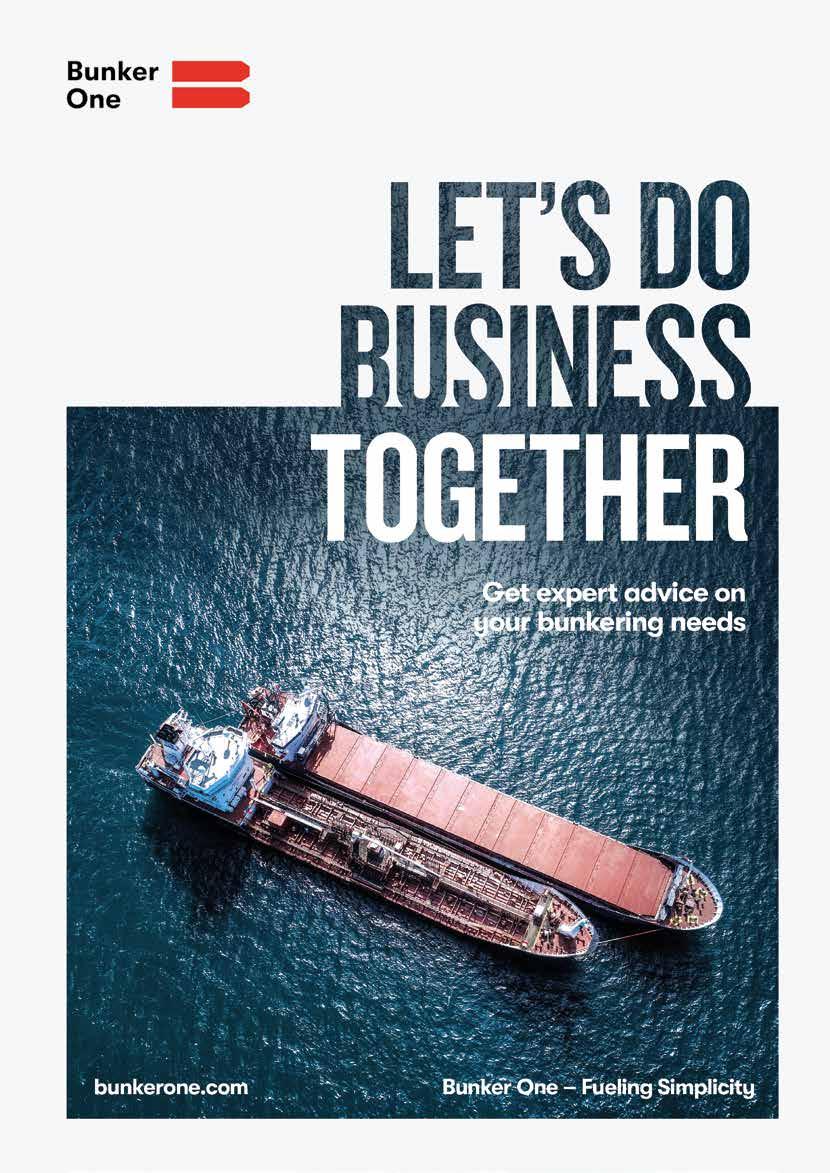DECARBONISATION TIMELINE AGREED

NOW FOR THE HARD BIT
INSIDE THIS ISSUE:
WHITE HYDROGEN - A GAME CHANGER?
BLENDED FUELS AND PATENT LAW

THE COST OF ETS




NOW FOR THE HARD BIT
WHITE HYDROGEN - A GAME CHANGER?
BLENDED FUELS AND PATENT LAW

THE COST OF ETS


You may well have thought that choosing to have a photo of IMO's Marine Environment Protection Committee (MEPC) on this issue's front cover would have been a no-brainer. It shows the joy and relief of all present that IMO was, in the end, able to agree a much-strengthened decarbonisation strategy.
Well, yes, you would be right. Once that decision had been taken there was no doubt what the big story for this issue would have to be.
However, what could be a very big story indeed in the long term has started to emerge. Our Environmental News pages report that the US Geological Survey (USGS) says that a “previously overlooked, potential geologic source of energy”, geological or 'white' hydrogen could be a primary source of energy for “hundreds of years”. It appears that deposits exist at many locations around the world and companies are already rushing to find them.
If the USGS's optimism proves well founded the implications would be obvious and profound and would inevitably impact on the way we move to net zero.
However, to go back to those celebrations at IMO, in the weeks before she left for new challenges, IBIA Director and IMO representative Unni Einemo was hard at work making sure the bunker industry had an input on several very important issues. We carry two reports from Unni, one on the newly agreed IMO decarbonisation strategy and the second on the range of other important MEPC decisions that affect the bunkering industry.
Just as we are taking this issue to press, IBIA has announced who will take over Unni's role at IMO. So, as you can read in a special IBIA announcement on page 36, Dr Edmund Hughes will be reporting on IMO in the next issue of World Bunkering

With IMO committed to a timetable for moving to net zero, the development of new fuels and technologies to cut greenhouse gas (GHG) emissions becomes even more important and as usual we look at what is new. What is not new, but is intensifying, is the competition between proponents of the various alternatives. SEA-LNG, the LNG lobby group, has issued a detailed assessment of why using LNG should be the cheapest option.
Time will tell, of course, but in the meantime significant numbers of shipowners are going instead for ammonia or methanol. There is also the option that environmental groups love to hate, carbon capture. So, they may not be thrilled to read about a new UK-EU project to develop retrofit carbon capture systems that has just got underway.
That there may be a way to carry on using fossil fuels and still achieve net zero has parallels with the use of scrubbers to meet the IMO 2020 sulphur in fuel regulation. That remains a controversial issue, as reflected in a report from Sweden's Chalmers University that argues strongly against the use of scrubbers. However, for balance, Exhaust Gas Cleaning Systems Association (EGCSA) director Donald Gregory provides a comprehensive response to the criticisms levelled at scrubbers.
Ships that are not fitted with scrubbers will typically use blends meeting requirements for VLSFO or ULSFO. Those blends are likely to be patented. In our Legal section IBIA Board member Steve Simms explores how increasing use of these fuels could lead to patent infringement claims and damages.
Our geographical features cover the Middle East and the Indian sub-continent. Appropriately this year's IBIA Convention is being held at Dubai and our reports should provide good backgrounders for delegates.
Whether you will be at Dubai or not, I trust you will find plenty of interest in this issue of World Bunkering
Best wishes
David Hughes Editor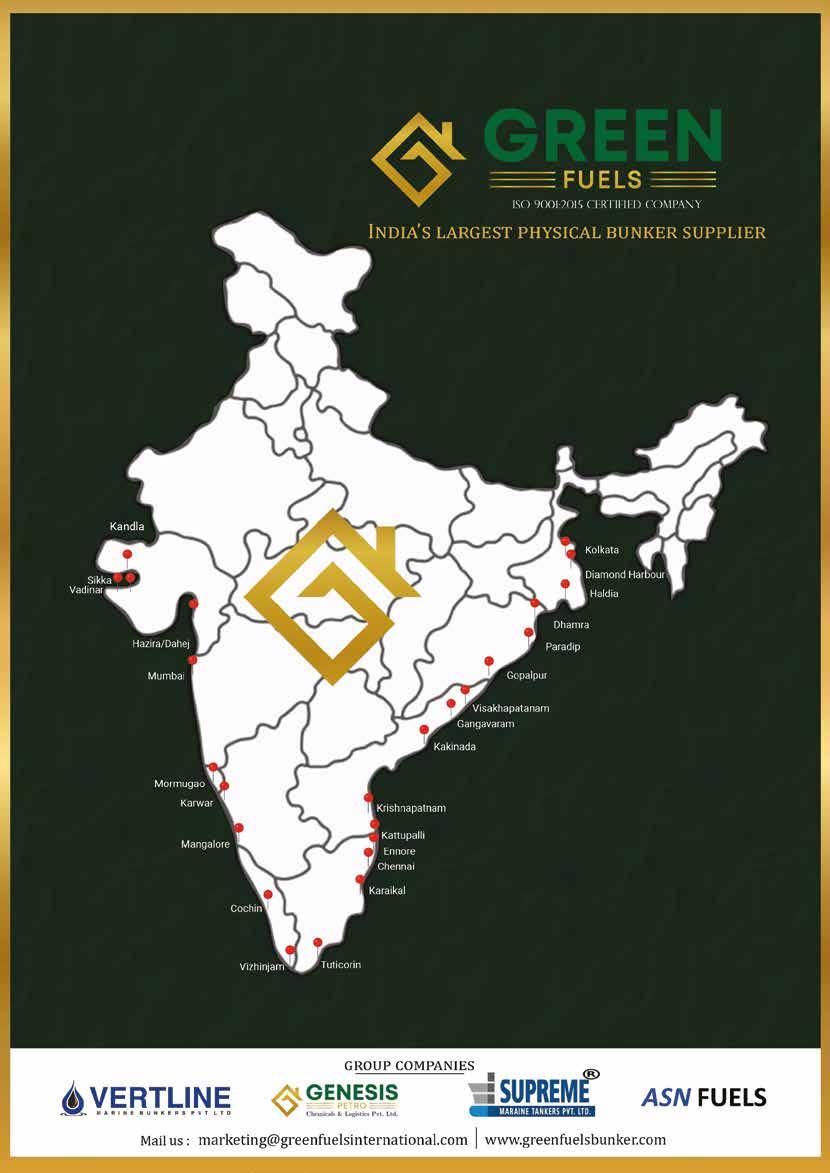
The views expressed in World Bunkering are not necessarily those of IBIA, or the publishers unless expressly stated to be such. IBIA disclaims any responsibility for advertisements contained in this magazine and has no legal responsibility to deal with them.
The responsibility for advertisements rests solely with the publisher.
World Bunkering is published by Constructive Media on behalf of IBIA and is supplied to members as part of their annual membership package.


When I reflect on the past few months, I can only be thankful and proud of the great effort carried out by the Global and Regional Boards, the Working Groups and the Secretariat, all motivated by the same goal of improving the marine energy industry. In a shipping world that is undergoing constant change, we are proud to be here to support our members as they navigate new challenges.
Furthermore, I personally want to thank our IBIA director Unni Einemo who, after seven years with the association, will be leaving IBIA to pursue new professional challenges. Unni has been a key member of our team and her representation of the bunker industry within the IMO contributed to strengthening the Association’s position as a major voice in the sector. We are grateful for her work and look forward to a new chapter for IBIA with exciting news about new hirings and a laser-like focus on our priorities: IMO representation, training, and membership growth/diversity.
The recent Marine Environment Protection Committee (MEPC 80) marked an important step towards decarbonisation by adopting a revised GHG Strategy and life cycle GHG assessment guidelines. It also highlighted how important our consultative status at the IMO is. There is a lot of vital work to be done and our industry needs to be professionally and knowledgeably represented.
Arsenio Antonio Dominguez was elected as the IMO's new Secretary-General and will begin his term in that position in January 2024. We look forward to continuing to work closely with him and the organisation he will oversee.
Leveraging the expertise acquired in 30 years of IBIA, we will continue to set the bar high for the industry, guiding our members through challenging and exciting times. Undoubtedly, the Secretariat has done a fantastic job
organising a vast range of events and networking opportunities in different areas of the world this year. Numerous events and masterclasses have been hosted and more will be during 2023.
These provide our members with excellent opportunities to connect, make new friends, and exchange ideas. We had a fantastic time at the (sold out!) 2023 Asia Gala Dinner in Singapore, as well as the LNG Masterclass that took place in July. Meanwhile, the Africa Conference, the Dubai Annual Convention and the IBIA Annual Dinner in London are already showing strong traction!
Let me conclude by reminding you that this is a member-led organisation whose strength lies in its members! For this reason, I cannot stress enough the
importance of new members joining and becoming part of our working groups, and our Global and Regional Boards. Once again, thank you to our Director, the Secretariat, the Global and Regional Boards, our events' sponsors, and the working groups for their tirelessly hard work and participation.
We're confident that - working together - we can continue to enhance ethical business conduct in our sector as we move forward and continue to lead the marine energy industry!
Ciao Timothy Cosulich, Chair

Usually, when I write this column, I look back on what’s happened since the previous issue or focus on a particular subject. As I write my final Director’s report for IBIA’s magazine World Bunkering, where do I start? So much has happened in the seven years I’ve worked for IBIA, and there is such a rich tapestry of memories.

I joined IBIA in April 2016 in a newly created role combining representing the Association at the International Maritime Organization with managing media and communications. Prior to this, I had been serving as an IBIA board member for two years, and I had been writing about the bunker industry for nearly two decades, giving me solid knowledge and insights into the issues facing the marine fuels sector. In 2018, I was promoted to Director, which made me the most senior member of the IBIA secretariat while retaining existing responsibilities. An incredible honour and privilege!
Throughout my time with the Association, serving IBIA’s members has been at the heart of my efforts, including striving for improvements and recognition of the value of our industry. I could not have done it without the invaluable support of a dedicated and talented team, including my colleagues in the IBIA Secretariat and IBIA Board members who put in so much effort and hard work for the benefit of IBIA and its members. Equally important has been the cooperation with you, our members.
You give IBIA the insights, expertise and understanding of the challenges facing the marine fuels sector, and the impetus to tackle them. You are the lifeblood of IBIA, and I am proud of everything we have achieved together.
During my first four years at IBIA, dealing with the incoming IMO 2020 sulphur limit was the industry’s main focus area. The same was true for IBIA. It was a period of particularly intense work to help guide the industry and the IMO in order to implement the 2020 sulphur limit as effectively and smoothly as possible. IBIA was at the forefront of providing information and assisting in formulating IMO guidelines and regulatory amendments. Personally, I spoke at 25 conferences during 2019, both at IBIA events and others, to help inform and educate stakeholders about IMO 2020. I take geeky pleasure in knowing that wording in some of the amendments to MARPOL Annex VI and IMO guidelines came from documents submitted by IBIA. At his speech at the close of MEPC 80, when the Secretary General, Kitack Lim thanked those who were attending IMO in their currently role for a final time, he gave a spontaneous mention of his appreciation of IBIA’s “special contribution,” at the IMO, and particularly prior to the entry into force of IMO 2020. It was such a lovely surprise which, along with the fact that MEPC 80 succeeded in adopting a revised GHG strategy, meant I was going out on a high
as the IMO community celebrated another historic milestone. IBIA has made its views known about what our industry needs from the IMO to make the energy transition happen. We now have the first clear signals of intent.
Another subject that has taken up a lot of my time with IBIA is fuel oil quality; one of the key causes of the bunker industry’s poor reputation. We have been dealing with it on many levels, striving to guide the industry on how to improve quality control and also educate an often ill-informed audience on this complex subject. An early outcome was IBIA’s Best practice guidance for suppliers for assuring the quality of bunkers delivered to ships in early 2018,
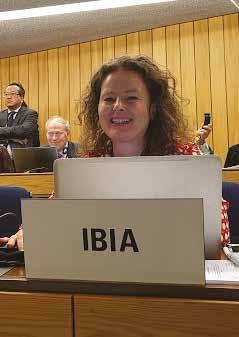

which became the base document for one of the IMO’s three best practice guidance document targeted at, respectively, bunker buyers, bunker suppliers and member states as part of improving compliance with MARPOL Annex VI. IBIA also helped write the Joint Industry Guidance on the supply and use of 0.50%-sulphur marine fuel, published in August 2019 and we worked with BIMCO on explaining fuel quality and the importance of good fuel management as part of our collaboration on the BIMCO and IBIA on the Shipmaster’s Bunkering Manual published in 2022. IBIA has put in an enormous amount of work into making sense of a subject on the agenda at the IMO’s Maritime Safety Committee since 2018, namely “Development of further measures to enhance the safety of ships relating to the use of fuel oil”, which finally concluded at MSC 107 in June 2023.
In all of the above efforts, I’d like to extend a special thanks to the IBIA Technical Working Group. IBIA is incredibly privileged to have this fantastic group of worldrenowned experts on fuel technical matters to lean on. My heartfelt thanks also go to everyone who has been sharing their expertise so freely in all of IBIA’s various efforts, be it in working groups, speaking at our conferences, input to our IMO submissions and taking time to educate us through conversations and email exchanges.
Recently, IBIA took part in an International Group of Experts (IEG) set up by the Maritime and Port Authority of Singapore and the Singapore Shipping Association to make recommendations on additional measures to strengthen quality assurance of bunkers delivered in Singapore in the wake of the serious incident of fuels contamination in Singapore in 2022. That work was completed not so long ago, and a report should come out shortly. This will hopefully assist the industry further in figuring out how to improve supply chain quality control and reduce instances of ships running into unexpected fuel-related operational problems.
In the last couple of years, IBIA has put a particular a focus on encouraging bunker licensing and the uptake of mass flow

meter (MFM) systems in the interest of improving market conditions. For MFMs, support is coming from ISO standards. Already, we have ISO 22192:2021 which encompasses both the process leading to approval of an MFM system installed on a bunker tanker and subsequent system verification. It covers the procedures for bunker deliveries using MFMs, and dispute resolution. Two further ISO standards are under development. One is for MFM meter verification using a ‘master meter’, which will become ISO 6996, hopefully simplifying the verification of MFMs. The other is for bunker cargo delivery from oil terminals to bunker tankers using MFMs, which will become ISO 6963, giving the same accuracy when loading bunker tankers as during bunker deliveries using MFMs. All going well, these new standards should be published during 2024.
The urgent need to reduce global greenhouse gas emissions will be transformative for our sector. Much work lies ahead in this area, and getting to grips with it must remain at the forefront of our efforts. I am leaving IBIA to work for CORE POWER, a company developing nuclear solutions for true zero-emissions shipping, as well as floating nuclear plants which can provide the clean energy needed to produce the alternative fuels that IBIA’s members are increasingly looking to supply or use. Our paths may well cross again as we strive to cut GHG emissions from shipping. I certainly hope so!
I wish all of you the very best, and may you fare well on your journeys.
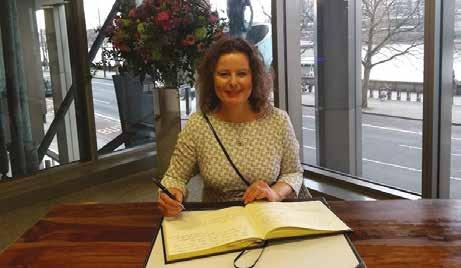 Unni Einemo Director, IBIA www.linkedin.com/in/unnieinemo/
Unni Einemo Director, IBIA www.linkedin.com/in/unnieinemo/
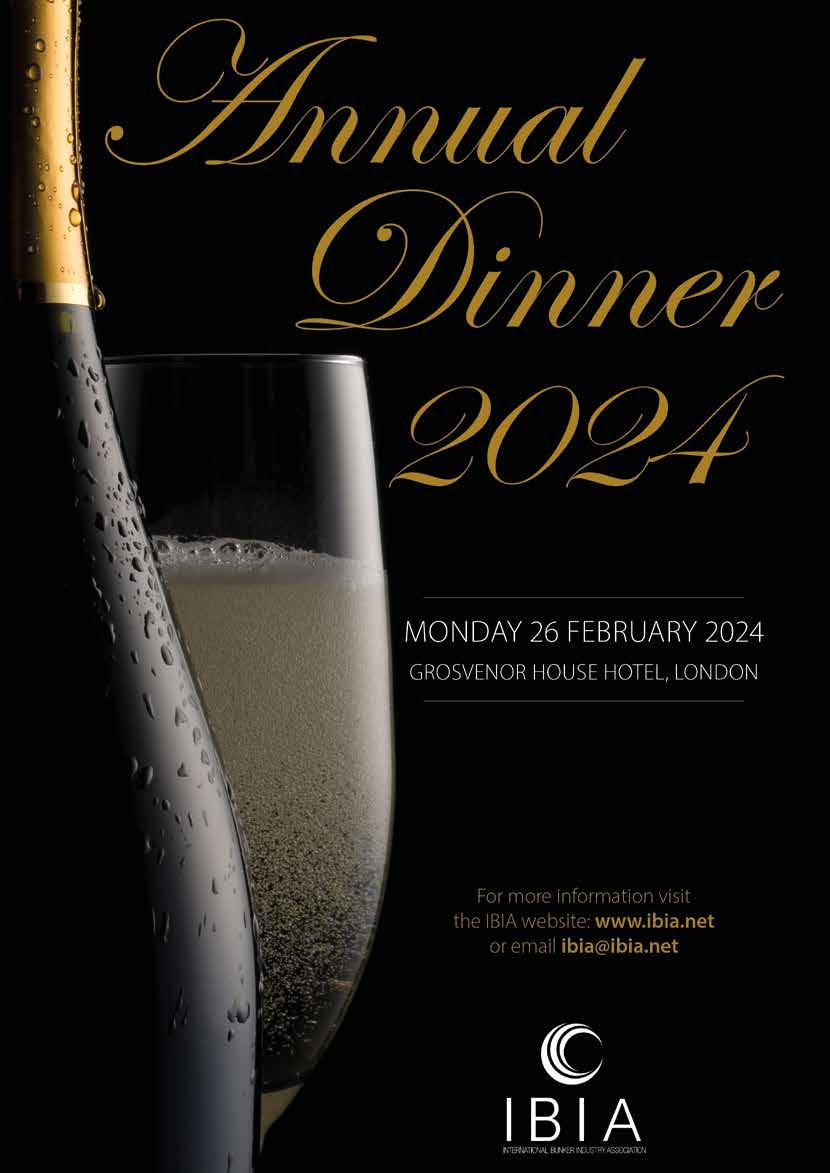
Explore recent members meetings and upcoming events by IBIA, as the global bunker industry shapes a sustainable and collaborative future, focused on transparency and strategic priorities
Iam excited to share the latest updates on our recent events and upcoming gatherings that highlight our commitment to shaping the future of the global bunker industry.
Recently, we held two highly engaging and well-attended members meetings. The first meeting covered IBIA's upcoming stance on the IMO’s Maritime Safety Committee (MSC 107) meeting and provided a comprehensive review of the measures to enhance fuel oil safety. IBIA Director and IMO Representative Unni Einemo, in one of her last duties prior to leaving IBIA, chaired this meeting and offered a preview of the upcoming ISWGGHG 15 and MEPC 80 meetings. The insights provided during this meeting were crucial in driving our commitment to safety and environmental protection in the industry. The recording of this meeting has been made available to our members on our website.
The second members' meeting was dedicated to the Digitalisation Working Group presentation led by Kenneth Juhls, Managing Director of ZeroNorth Bunker. This working group's contributions will be instrumental in providing actionable recommendations for the deployment of digital solutions along the bunker value chain. Their structured approach in mapping the bunker value chain sets a clear path towards our digitalisation objectives, encouraging innovative and creative thinking across industry players.
As you read this article, we are currently in Ghana for the much-anticipated IBIA Africa Bunker and Shipping Conference. This remarkable event brings together key leaders and government insights, including Honourable Matthew Opoku Prempeh, Minister of Energy of Ghana, and Dr. Harry T. Conway, Chair of the Marine Environment Protection Committee (MEPC) amongst many other esteemed speakers. Together, we are shaping a sustainable future for Africa's maritime industry, paving the way for transformative growth in the region.
As we embark on a new era in the bunker and shipping industry, the IBIA Annual Convention 2023 promises to be an event of immense significance, set to take place in Dubai. Under the theme "Steering the industry towards transparency: Navigating
the future of energy," this Convention will be a pivotal moment in addressing the critical issues facing the global bunker and shipping industry.
The convention will feature a comprehensive programme that dives deep into crucial topics shaping the industry's trajectory. Participants can expect insightful discussions on the changing landscape of maritime regulations, exploring the latest updates and potential impacts on the industry. Moreover, the role of the Middle East in global bunkering will be analysed, shedding light on the region's growing influence in the market.
The IBIA Annual Convention 2023 in Dubai will include the evolution of bunker quality, sustainability in shipping, carbon indexing and offsetting, pricing and financial challenges, digital transformation, and navigating geopolitical tensions in the industry. Discussions will focus on the latest advancements and standards in ensuring bunker fuel quality, innovative approaches for greener practices in shipping, strategies to address carbon emissions, optimizing financial strategies amid uncertainties, cutting-edge technologies for enhanced operational efficiency, and understanding the impact of geopolitical dynamics on the industry. The convention promises to be an insightful and transformative event shaping the future of the global bunker and shipping industry.
We are thrilled to announce the highly anticipated IBIA Annual Dinner 2024, taking place at the luxurious Grosvenor House Hotel in Mayfair, London. This prestigious black-tie affair promises unforgettable networking opportunities and memorable experiences. Connect, engage, and celebrate with influential professionals, thought leaders, and key decision-makers within the industry at this exclusive event.
I must express my sincere appreciation for the unwavering work of the dedicated Events Working Group, of which I have the honour of chairing alongside esteemed IBIA Board Members, namely Adrian Tolson (Owner 2050 Marine Energy), Eugenia Benavides (Marine Fuels Director Terpel S.A.), Steve Simms (Principal, Simms Showers LLP), Anna Stefanou (Finance and Credit
Manager, PMG Holding), and Claudia Beumar (Global Account Manager, VT Group). This group of industry leaders plays a pivotal role in ensuring that IBIA delivers conferences and events of the highest quality, aligned with our strategic priorities of transparency, education, membership engagement, and effective representation at IMO and policy-making levels. Their time, expertise, and unwavering dedication ensure that our events continue to elevate the global bunker industry, fostering collaboration and driving meaningful progress.
There are myriad opportunities to get involved with IBIA, and we invite you, as IBIA Members to encourage industry colleagues to join IBIA as we strive to be the true voice of the global bunker industry. Together, we can create a sustainable and prosperous future for the maritime sector.
As we continue to make strides in shaping the industry's future, we remain dedicated to driving positive change and fostering collaboration among industry players. We eagerly anticipate the success of our ongoing events and look forward to welcoming you to our future gatherings.
Don’t miss out on the exciting opportunity to be an integral part of our conferences and engagements, should you be interested in speaking or sponsoring you may reach out to me directly.
Prepare to be part of a transformative journey as we pave the way for the global bunker industry's future.
Follow our social media: https://linkedin.com/ company/ibia.net
InternationalBunker IndustryAssociation/ ibiabunkers
Tahra Sergeant Regional Manager: Africa; Global Marketing and Events Mobile +27 (0)79 990 7544
E: tahra.sergeant@ibia.net
S: sergeant.tahra W ibia.net
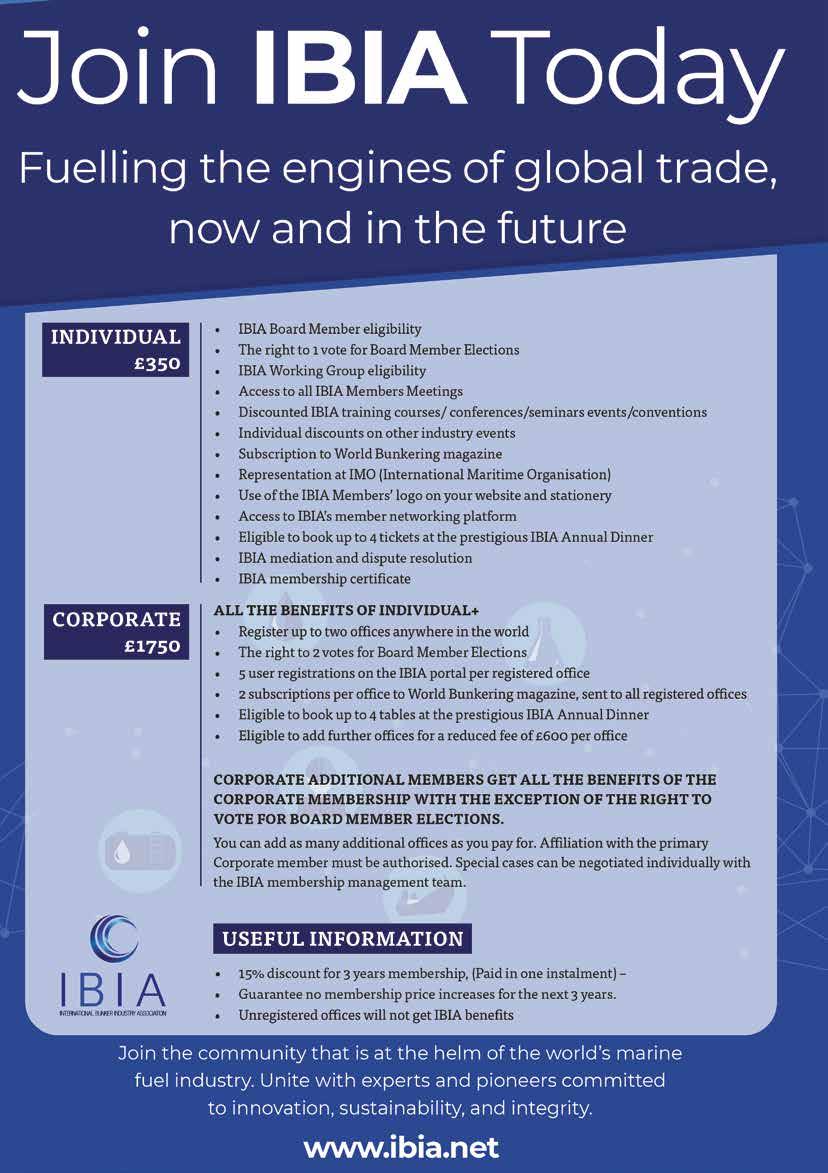


ONLINE BUNKER TRAINING COURSE
MODULE 1 TO PURCHASE Bunker Market Regulations and Enforcement

MODULE 2 TO PURCHASE Understanding ISO 8217 and ISO 4259
MODULE 3 TO PURCHASE Best practice for suppliers with VLSFO
MODULE 4 TO PURCHASE Best practices for users with VLSFO
MODULE 5 TO PURCHASE Adapting to a changing market

MODULE 6 TO PURCHASE Compatibility and stability – Issues with VLSFO fuels and the measurement of Stability
MODULE 7 TO PURCHASE Sales terms and conditions – The purpose, structure and application of Sales terms
MODULE 8 TO PURCHASE Quantity measurement – The principles of quantity measurement including Mass Flow
MODULE 9 TO PURCHASE Sampling – The basics of sampling, sampling methods and sample handling
www.ibia.net MODULE
quality – Impact on storage, treatment and use in the engine
*All dates were correct at time of going to print but may be subject to change, please refer to IBIA's website (https://ibia.net/events/) for any updates


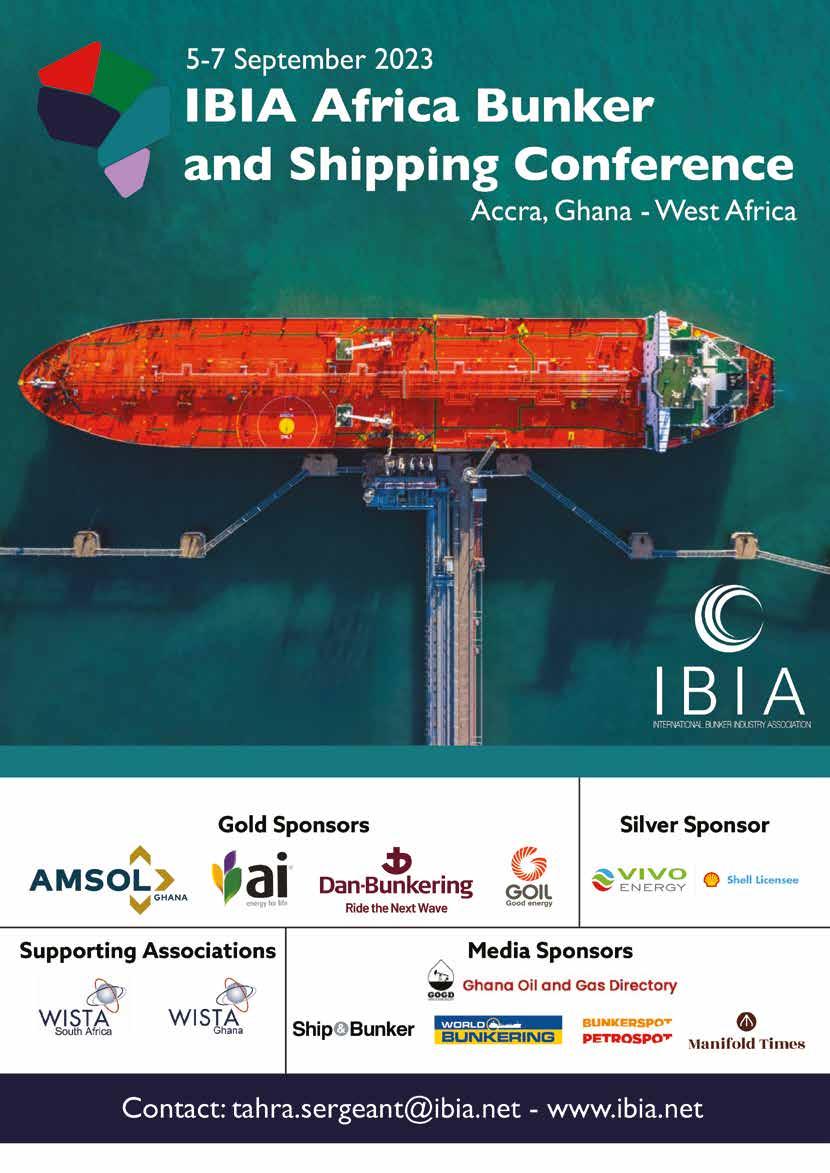

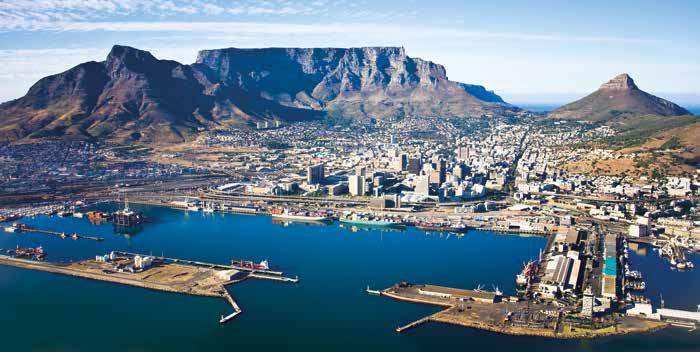
IBIA Africa Bunker and Shipping Conference in Accra brings together key leaders and delivers government insights, with speakers including Honourable Matthew Opoku Prempeh and Dr Harry T Conway, addressing the theme of shaping a sustainable future for Africa's maritime industry
As you read this article, we will be in Accra, Ghana. The IBIA Africa Bunker and Shipping Conference is in full swing, uniting key leaders and stakeholders in Africa's maritime industry. The conference, being held from 5 - 7 September 2023, is a milestone event that showcases the immense growth potential of Africa's maritime sector.
We are truly grateful for the unwavering support of our gold sponsors, AMSOL Ghana, Ghana Oil (GOIL), Dan Bunkering, and AI Energy Group, whose commitment to sustainability aligns perfectly with IBIA and our conference's vision. Their invaluable contribution plays a crucial role in driving growth and promoting sustainable practices in Africa's bunkering space.
The presence of Honourable Matthew Opoku Prempeh, Minister of Energy of Ghana, as our keynote speaker brings immense honour to the conference.
As we navigate the dynamic landscape of the energy and shipping sectors, the minister's insights will undoubtedly shape a sustainable future for Africa's maritime industry.
Joining us as our esteemed guest speaker, Dr Harry T Conway, Chair of the Marine Environment Protection Committee (MEPC) at the International Maritime Organization (IMO), brings his expertise to the forefront. His recent involvement in chairing the MEPC 80 Committee meeting, where the IMO's Revised GHG Strategy was adopted, sets a momentous tone for our conference.
With an ambitious goal to achieve netzero GHG emissions from international shipping by or around 2050, Dr Conway's insights will be invaluable in addressing sustainability challenges and driving Africa's bunkering and shipping sectors towards a greener future.
Throughout the conference, participants are delving into a diverse array of discussions, exploring specialised topics such as the physical supply chain, financing the marine industry, future fuels in bunkering, bunker quality and quantity, and regulatory issues. This platform fosters interaction with industry experts, expands professional networks, and offers deeper insights into the latest developments and challenges in the bunker and shipping sectors.
The IBIA Africa Bunker and Shipping Conference embrace the insights and collaboration from government and international maritime organisations. Together, we are paving the way for sustainable growth and development in Africa's maritime industry. Africa's pivotal role in the global maritime landscape is a defining factor, and this conference will be instrumental in shaping the future of the bunker and shipping industries on the continent.
As the Regional Manager of Africa, I take immense pride in being part of this transformative event. We extend a warm invitation to all stakeholders in the bunker, energy, and shipping sectors for supporting the IBIA Africa Bunker and Shipping Conference in Accra. Together, we can build a sustainable and prosperous future for Africa's maritime industry.

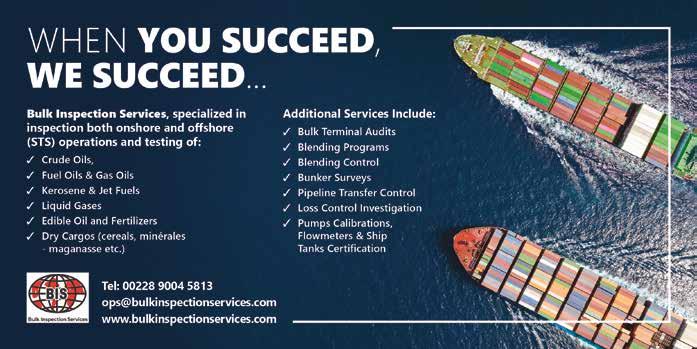
Should any of our members wish to engage further regarding the above, you are encouraged to contact me directly.
If you would like to engage with the IBIA Africa team, or become a member of IBIA, explore opportunities to be a speaker, sponsor or find out more about our local activities, engagements and events, please contact me.
Tahra Sergeant Regional Manager: Africa; Global Marketing and Events Mobile +27 (0)79 990 7544
E: tahra.sergeant@ibia.net
S: sergeant.tahra W ibia.net



In July, I’ve had the opportunity to be at the Ocean Expo Ningbo where I had meaningful conversations with industry leaders, exchanging ideas, and gaining valuable insights into the latest trends and opportunities in China

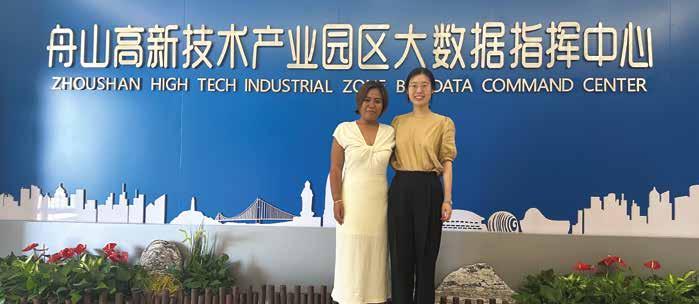
Ialso took the opportunity to meet with the Zhoushan port authority and some of the bunker suppliers in Zhoushan during this trip.
It’s amazing to note while we have a common goal towards decarbonisation and sustainability, the challenges faced differ from one port to another. This trip once again highlighted the importance of collaboration across the whole supply chain. The purpose of this trip was to introduce IBIA to the bunkering community in China and explain what we do. II look forward to further deepening our relationships and playing a role in China’s vibrant bunkering community.
As shared in the previous quarter, one of our top priorities is training. IBIA is committed to equipping our members with the necessary knowledge and skills as we move towards a greener and more sustainable future.
In this regard, I am pleased that IBIA, with the support of Methanol Institute, has signed a cooperation agreement with GREEN MARINE to deliver methanol bunkering training specifically for cargo officers and bunker surveyors. The plan is to commence the training in Singapore first and expanding globally in 2024.
I am also happy to note that as a start, we have worked together with the crew from the supplying tanker and the bunker surveyors involved in the methanol bunkering pilot in Singapore on 27 July 2023 by identifying and plugging the training gaps and competency needs prior to the successful pilot.
 Siti Noraini Zaini Regional Manager, IBIA Asia
Siti Noraini Zaini Regional Manager, IBIA Asia

T: +65 6472 0916
E: Siti@ibia.net
W: www.ibia.net

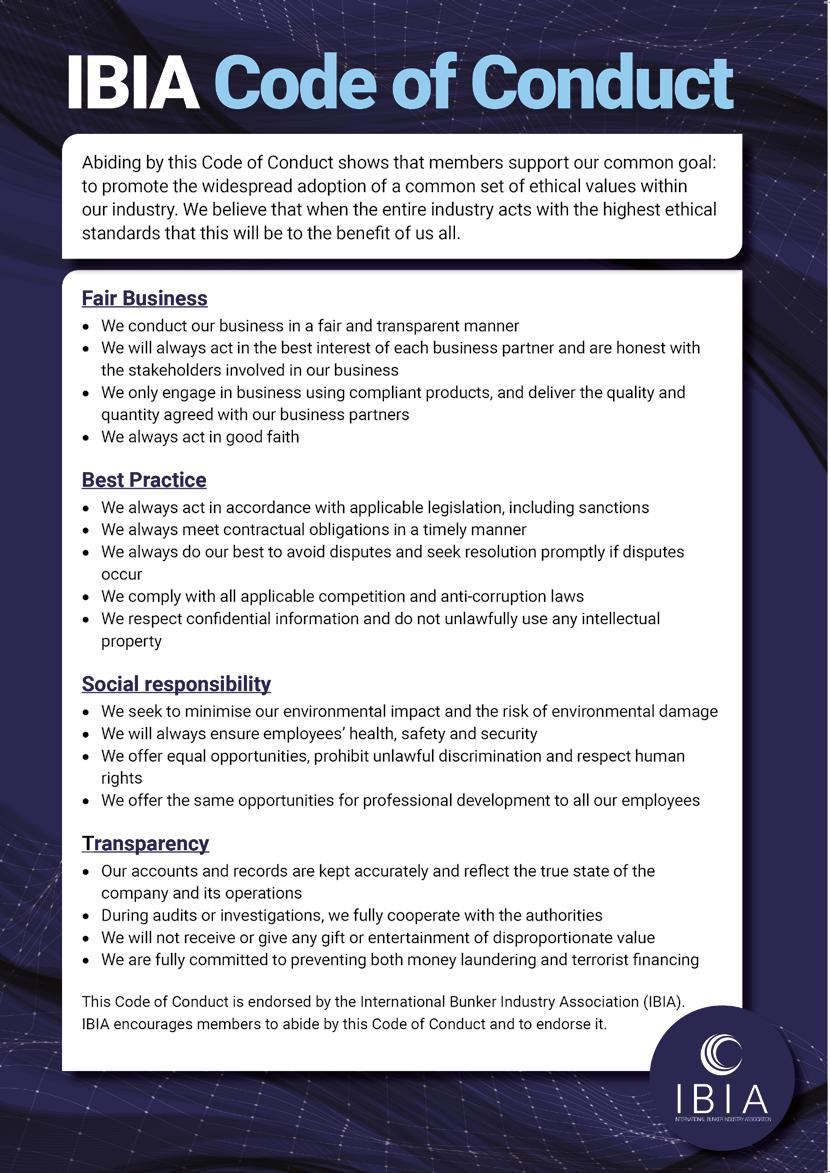
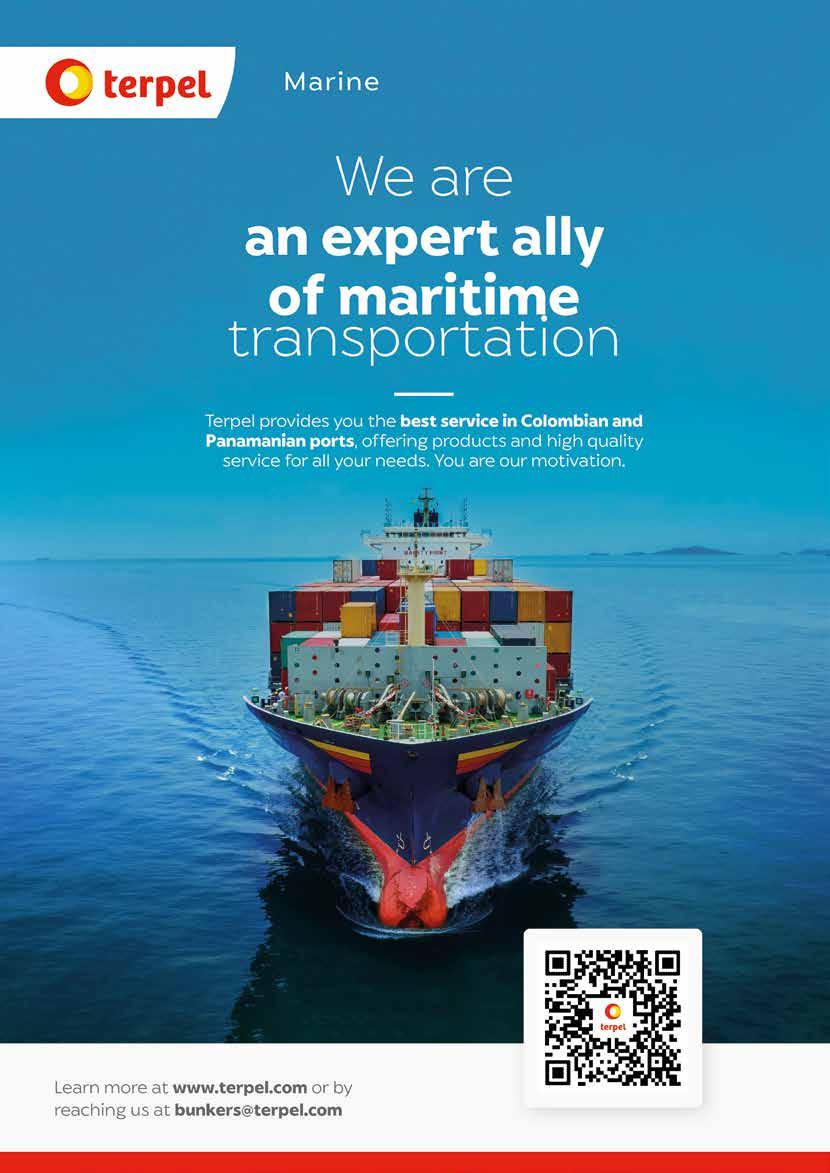
The IMO has made a clear statement of intent to speed up the energy transition in the maritime sector. We have a new roadmap; now new regulatory measures need to be developed, adopted and implemented to realise the vision and ambitions in the strategy says IBIA’s Unni Einemo
There was standing ovation celebrating a historic moment at the IMO on July 7, 2023 as the 80th session of Marine Environment Protection Committee (MEPC 80) adopted the revised greenhouse gas (GHG) strategy. The hard-fought-for agreement was a compromise, meaning nobody got exactly what they wanted. Many complained it didn’t go far enough, especially on short-term GHG reduction targets, but nobody can deny that the 2023 strategy is significantly more ambitious than the IMO’s initial GHG Strategy adopted in 2018.

The strategy will be up for review again in five years which will undoubtedly be another difficult debate. But before that, there’s an enormous amount of work, debate and choices to make to put in place the regulations that are needed to push the industry in the right direction, as well as reviewing and potentially amending the Carbon Intensity Indicator (CII) regulations that are already in place.
The CII was among the measures adopted to meet the previously stated 2030 target to reduce carbon intensity (CO2 emissions per transport work) by at least 40% compared to a 2008 baseline.
That target, which was part of the 2018 GHG Strategy, remains in place, but other targets have been strengthened or added.
The headline figure from the 2023 strategy is the change form a 50% overall GHG reduction target for 2050 to the ambition for GHG emissions from international shipping to reach net-zero emissions by or around 2050.
Within the levels of ambition there are several new elements. One of the key elements, which IBIA spoke in favour of during the two weeks of negotiations leading up the revision, was a target for the uptake of zero or near-zero GHG emission technologies, fuels and/or energy sources to represent at least 5%, striving for 10%, of the energy used by international shipping by 2030.
The revised strategy also sets out indicative checkpoints to reduce the total annual GHG emissions from international shipping by at least 20%, striving for 30%, by 2030, compared to 2008; and to reduce the total annual GHG emissions from international shipping by at least 70%, striving for 80%, by 2040, compared to 2008.
The revised GHG Strategy makes it clear that the IMO intends to take full lifecycle emissions for marine fuels into account. MEPC 80 also adopted Guidelines on life cycle GHG intensity of marine fuels (LCA guidelines).
The LCA guidelines allow for a Well-toWake calculation, including Well-to-Tank and Tank-to-Wake emission factors, of total GHG emissions related to the production and use of marine fuels. They also define a Fuel Lifecycle Label that specify the information required to assess lifecycle GHG emissions.
This was an important step and signal of intent, but the regulatory framework for actually using them still needs to be defined, and the guidelines need further development. MEPC 80 agreed to multiple strands of follow-up work on the LCA framework. Some will be done by IMO delegates in a correspondence group, and the IMO Secretariat has been asked to conduct a review of existing practices on sustainability aspects/certification and third-party verification issues to be considered further by an expert workshop.
One of the major tasks still left after MEPC 80 is to finalise and adopt, as soon as possible, the so-called mid-term basket of measures. These should be agreed at MEPC 81, approved at MEPC 83 in the spring of 2025 and adopted later that year at an extraordinary MEPC session, allowing entry into force in 2027.
There are multiple proposals in the mix, with many common features but the exact nature of the policy tools has yet to be narrowed down. All we know at this stage is that they will include the phasing in of a marine fuel GHG intensity standard, and some form of a GHG emission pricing mechanism.
Development of candidate midterm measure(s) will be top priority at the 16th session of the Intersessional Working Group on the Reduction of GHG Emissions from Ships (ISWG-GHG 16), which is set to meet in April 2024 the week before MEPC 81.

The second item on the agenda for ISWG-GHG 16 is to further develop the LCA framework, using the outcome of the planned expert workshop, and the report of the Correspondence Group established by MEPC 80.
The IMO’s revised GHG strategy calls for zero or near-zero GHG emission technologies, fuels and/or energy sources to represent at least 5% of the energy used by international shipping by 2030.
A GHG intensity standard will be a way to make this 2030 target mandatory and enforceable, and to phase in increasingly ambitious targets in the following years. The anticipated regulations will be closely linked to the LCA Guidelines to ensure overall lifecycle emissions are taken into account.
What remains to be clarified is how a marine fuel GHG intensity regulation will be applied: will it be required and enforced on an individual ship basis, or will it allow for a pooling mechanism like the one adopted in the European Union under the FuelEU Maritime initiative? This decision will have a major impact on which type of fuels will be needed. Individual ship compliance would be difficult for much of the existing fleet if there is insufficient supply of sustainable biofuels and synthetic diesel, as most other types of fuels require new types of engines and fuel systems.
The FuelEU Maritime regulation looks set to require ships to reduce GHG intensity –measured in grams of CO2/megaJoule of energy – by 2% from the start of 2025, 6% by 2030, 14.5% by 2035, 31% by 2040, 62% by 2045 and 80% by 2050.
Ideally, the IMO will adopt a global regulation to phase in requirements for lower GHG intensity that could supersede or be aligned with the EU regulations. The EU would consider “the need to avoid duplicating regulation of GHG emissions from maritime transport at Union as well
as international level” if the IMO adopts measures that would meet ambitions in light of the objectives of the Paris Agreement.
Reaching agreement on the exact nature an economic measure, putting a price on maritime GHG emissions, will be far more complex. There are multiple proposals with many elements in common, but also significant differences.
The key principle is to narrow the price gap between fossil fuels and low-GHG alternatives, i.e. to penalise GHG pollution and encourage uptake of low-GHG alternatives. There is also a need to raise funds for research and supportive measures “to ensure a just and equitable transition that leaves no country behind” as stated in the revised GHG strategy.
While many would like a levy that puts a specific price on CO2 or CO2 equivalents, several countries oppose it. Their arguments against it are mainly fears that it will put up the cost of freight for countries that can ill afford it, and that it is unfair for them to pay the price for a pollution problem that they historically didn’t contribute to.
Many have expressed that they are flexible and might accept proposals for a “feebate” or a funding and reward mechanism that would raise funds from GHG emissions, while rewarding ships for cutting GHG emissions.

Economic measures should consider the WtW GHG emissions of marine fuels as addressed in the LCA Guidelines. A pricing mechanism could potentially be linked directly to the GHG intensity fuel standard.
MARPOL Annex VI states that a review of the short-term GHG reduction measures shall be conducted by 1 January 2026. The review plan covers scope, timeline and data sources.
Within the scope are many important elements, including evaluation of how effective these measures have been in reducing the carbon intensity of international shipping, further amendments to the correction factors and voyage adjustments (CII Guidelines G5); and application of the LCA Guidelines. This work may lead to amendments to existing instruments.

Data will come from the mandatory ship fuel oil consumption data collection system (IMO DCS), but other data may also be used. The data gathering stage will run from MEPC 80 to MEPC 82 (autumn 2024); to be analysed by a working group at MEPC 82 and continued by a correspondence group. The plan to review the short-term GHG reduction measures includes holding an intersessional working group between MEPC 82 and MEPC 83 (spring 2025) as well as a working group at MEPC 83.
Resolution MEPC.352(78) containing CII Guidelines (G1) opens for the possibility for a CO2 emission conversion factor (Cf) to be provided by the fuel oil supplier, supported by documentary evidence. MEPC approved Interim guidance on the use of biofuels under regulations 26, 27 and 28 of MARPOL Annex VI which clarifies how certified sustainable biofuels can be used to improve a ship’s CII rating already from October 2023. These guidelines were developed pending development of policy instruments for the use of IMO’s LCA guidelines.
IMO member states recognise the potential of onboard carbon capture and storage (CCS) to help reduce GHG emissions for international shipping, but when and how such technology may be included in the regulatory framework is not yet clear.
During discussions at MEPC 80, many spoke favourably about the potential role of onboard CCS technology, and want work to start as soon as possible to identify how such technology can be incorporated in the mid-term measures in the IMO’s GHG Strategy. Others, however, felt that given the early stages of development of onboard CCS technology, other items are more urgent.
Several documents on how to move forward were submitted to MEPC 80, including one from IBIA, MEPC 80/7/10, providing some technical information on shipboard carbon capture and an indication of its merits as a transition solution towards a net zero GHG goal for shipping.
In the end, MEPC 80 agreed that all the proposals related to onboard CCS should be forwarded as a low-priority item to ISWG-GHG 16, which is set to meet in April 2024, ahead of MEPC 81.
Development of candidate midterm measure(s), i.e. a fuel GHG intensity standard and some form of GHG emission pricing mechanism, will be top priority at ISWG-GHG 16. The second item on the agenda for ISWG-GHG 16 is to further develop the LCA framework. If time permits, ISWG-GHG 16 will consider the proposals related to onboard carbon capture and advise MEPC 81 on a way forward.
Spotlight on alternative fuels
IBIA brought the perspectives of alternative fuel producers to the IMO during ISWGGHG 15, the week-long meeting prior to MEPC 80 that was part of the crucial negotiations to finalise the IMO’s revised GHG Strategy.

We held a presentation to elaborate on points made in ISWG-GHG 15/3/5 – a paper we developed in cooperation with the Ammonia Energy Association (AEA), the Methanol Institute (MI) and the European Biodiesel Board (EBB). IBIA members are increasingly involved in the supply of alternative fuels, or are preparing to do so, so we emphasised the need for regulatory
demand signals that will guarantee steady growth in the uptake of low and zero GHG emission fuels and technologies, thereby encouraging the necessary investments in their production and distribution.
We also stressed that GHG emission reductions must be on a Well-to-Wake basis to be truly sustainable; production of low-GHG fuels should not cause overall lifecycle emissions to increase. We called for default Well-to-Tank emission values to form a baseline, and be sufficiently conservative to encourage producers to demonstrate better performance through relevant certification and verification schemes
During our presentation, Conor Fürstenberg Stott showed the potential for producing low-carbon ammonia and the work AEA is doing on developing a certification scheme for ammonia to account for the GHG emissions associated with production. Matthías Ólafsson (MI) shared forecasts for the growth in biomethanol and e-methanol production, highlighting also the growth in newbuilds that are ready to use methanol as fuel. Cailean Macleod (EBB) highlighted facts regarding both the prospects and challenges for using sustainable biofuels in the maritime sector. To round up the session, Ed Glossop, Head of Sustainable Operations at Bunker Holding Group
shared observations on the energy transition as seen from a world-leading marine fuel re-seller.
The submission and presentation at ISWG-GHG 15 was a great example of IBIA bringing industry stakeholders with shared interests together to bring a strong message to the IMO about the policy tools we need to get the transition to sustainable marine energy well and truly underway.
Speaking at ISWG-GHG 15 during the discussion about setting specific GHG reduction targets prior to 2050, IBIA drew a parallel to the work done under MARPOL Annex VI to reduce sulphur emissions: “First, we saw the establishments of ECAs with an initial 1.5% sulphur limit, dropping to 1% and eventually to 0.10% in 2015. Then, we had IMO 2020 introducing a 0.50% sulphur limit outside ECAs. At every stage, there were doubts about supply, but in all cases, sufficient low-sulphur fuels and technology solutions to cut sulphur emission were made available. The task we have ahead of us now is much greater, and this energy transition cannot happen overnight. Therefore, we have to ensure the phasing in of low and zero emission solutions long before 2050.”

Besides the milestone revision of the IMO’s revised GHG Strategy, MEPC 80 gave us crucial biofuels guidance, acceptance of electronic BDNs, plans for new ECAs, discussed EGCS discharge water and ‘dark fleet’ STS transfers, as IBIA’s Unni Einemo reports
Tension was mounting ahead of the 80th session of the IMO’s Marine Environment Protection Committee (MEPC 80) amid signs that negotiations on the revised greenhouse gas (GHG) strategy might fail. Would it be possible to deliver the IMO’s 2023 GHG Strategy when parties were so far apart? It came together in the end, and that was an historic achievement, covered in a separate article in this issue of World Bunkering
Away from this intense spotlight, MEPC 80 had plenty of other items to deal with. For IBIA, our attention focused not just on GHG, but on various other agenda items that has an impact on the marine fuels sector.
Biofuels and CII
MEPC 80 approved interim guidelines that clarifies how certified sustainable biofuels can help ships to prove that these fuels contribute to reducing their carbon intensity, providing much-needed clarity on the subject.
It was a hard-fought for outcome in a debate with diverging views. IBIA strongly advocated finding a way forward on the subject, which we knew was important to our members.
A proposal submitted by India and cosponsors, MEPC 80/7/9, called for IMO to agree that biofuels which would be certified to conform with the sustainability aspects in the IMO’s Marine Fuel Life Cycle Assessment (LCA) guidelines to be assigned a CO2 emission conversion factor (Cf) as zero for use in IMO fuel oil consumption data collection system (DCS) and the carbon intensity indicator (CII) regulations. The proposal, while broadly supported, raised too many objections to be accepted as it was.

Many feared it would open the door to unsustainable biofuels and preferred to wait for this to be fully addressed under the LCA guidelines, which are still under development. IBIA and others pointed out that we urgently needed clarity on biofuels as they are already used by many shipping companies to reduce their GHG emissions. Moreover, some countries and flag administrations allow and recognise biofuels as having a reduced carbon factor compared to fossil fuels, while others do not, meaning any benefits from a regulatory perspective are not uniformly applied.
“It was made clear that this is an interim measure to help provide uniform guidance that will ensure a level playing field,” IBIA told the working group set up during MEPC 80 to address the issue. We added: “These fuels typically cost more than fossil fuels, so if there is no benefit in using them other than ‘doing the right thing’ we risk that the growing market for using certified sustainable biofuels to achieve GHG reductions on a well-to-wake basis will falter.”
Thankfully, an acceptable compromise was found. A circular providing Interim guidance on the use of biofuels under regulations 26, 27 and 28 of MARPOL Annex VI will be issued as MEPC.1/Circ.905, and will come into effect on 1 October, 2023.
This is interim guidance, pending development of policy instruments for the use of IMO’s LCA guidelines, means that biofuels meeting specific criteria can use a CO2 conversion factor equal to the well-towake GHG emissions factor.
The guidelines say biofuels must be certified by a relevant international certification scheme, meeting its sustainability criteria. Reference is made to ICAO’s Approved Sustainability Certification Schemes and the CORSIA Sustainability Criteria. Currently, this includes the International Sustainability and Carbon Certification (ISCC) and the Roundtable on Sustainable Biomaterials (RSB).

Moreover, the biofuels must provide a well-to-wake GHG emissions reduction of at least 65% compared to the well-to-wake emissions of fossil MGO of 94 gCO2e/MJ (i.e., achieving an emissions intensity not exceeding 33 gCO2e/MJ) according to that certification. For blends, the Cf should be based on the weighted average of the Cf for the respective quantity of fuels by energy.
Suppliers will need to provide Proof of Sustainability or similar documentation from a recognised scheme along with the Bunker Delivery Note to facilitate the verification of the reported biofuel consumption.
IBIA is happy to report that MEPC 80 formally confirmed that bunker delivery notes (BDNs) are acceptable in either hard copy or digital form providing they meet the relevant requirements of MARPOL Annex VI.
It follows a proposal for a unified interpretation made to the 10th session of the Sub-Committee on Pollution Prevention and Response by the UK, IACS and IBIA. PPR 10 discussed the proposal at length before agreeing to the exact text of unified interpretation to regulations 18.5 and 18.6 of MARPOL Annex VI concerning electronic bunker delivery notes. IBIA was deeply involved in the process. In the annex to circular MEPC.1/Circ.795/ Rev.7, a proposed new interpretation after paragraph 12.1 was added as follows:
“The Bunker Delivery Note (BDN) required by regulation 18.5 is acceptable in either hard copy or electronic format provided it contains at least the information specified in appendix V to MARPOL Annex VI and is retained and made available on board in accordance with regulation 18.6.
In addition, an electronic BDN should be protected from edits, modifications or revisions and authentication be possible by a verification method such as a tracking number, watermark, date and time stamp, QR code, GPS coordinates or other verification methods.”
MEPC 80 approved these unified interpretations and instructed the IMO Secretariat to revise MEPC.1/Circ.795/Rev.7 accordingly, for dissemination as MEPC.1/ Circ.795/Rev.8 – Unified interpretations to Regulations 18.5 and 18.6 of MARPOL Annex VI.
The IMO will soon receive formal applications for three new Emission Control Areas (ECAs) which could, if all goes to plan, take effect in 2027. They would encompass the Canadian Arctic, the NorthEast Atlantic Ocean and the remaining Norwegian coast not already covered by existing ECAs.
Papers submitted to MEPC 80 outlined plans by Canada to submit a formal ECA proposal to MEPC 81, and on work underway on a North-East Atlantic Ocean ECA proposal which may also be ready for MEPC 81. In addition, Norway announced its intentions to submit an ECA proposal to MEPC 81.
If these proposals are approved at MEPC 81, scheduled for April 2024, Canada said in its document that “adoption could occur by spring 2025”.
There is a 16-month period between MARPOL amendments being adopted and entry into force. For ECAs, there is a further year between entry into force and actually taking effect, meaning the ECA requirements could apply from early in 2027. Ships operating in ECAs are required to use fuels with no more than 0.10% sulphur or achieve equivalent emission reductions using approved technology.
All delegations who spoke at MEPC 80 welcomed and expressed support for these initiatives, and some urged other countries to follow suit.
A potential future ECA in the North-East Atlantic Ocean would link the existing ECAs in the Baltic Sea, North Sea and English Channel with the upcoming Mediterranean Sea ECA. It would also link up with the new ECA in Norway and thereby “ensure consistent and uniform regulation across sea areas with high density traffic with a geographical scope covering parts of the North-East Atlantic Ocean,” according to papers submitted to MEPC 80.
The Mediterranean ECA, adopted at MEPC 79 in December 2022, will take effect on 1 May, 2025.
While the incoming Mediterranean ECA covers only SOx, Norway indicated that it intended to expand the existing ECA for both NOx and SOx currently established in the North Sea to cover the remaining Norwegian coast.
The new North-East Atlantic ECA may also include the NOx element, meaning ships constructed on or after the date of adoption (or a later specified date) would also have to comply with NOx Tier III limits as specified in MARPOL Annex VI.
The intended Canadian Arctic ECA designation includes Canada's Arctic waters and Arctic waters under Canada's jurisdiction. The proposed Canadian Arctic ECA boundary begins near the Mackenzie River Delta in the Yukon and stretches to the northern tip of Newfoundland and Labrador. The eastern boundary meets the boundary of the existing North American ECA.
The proposal under development would cover both SOx and NOx and aims to reduce air pollution, including Black Carbon (BC) which is a particulate matter that has received particular attention in the Artic region due to its role in accelerating ice and snow melt.
Canda’s paper to MEPC 80 said the number of ships moving through Canada's Arctic has increased significantly over time, and that the fuel consumed by all international and domestic ships transiting the Arctic increased by 116% between 2010 and 2019. Growth in Arctic shipping activity is expected to continue, exacerbated by longer summers with ice-free shipping routes.
The paper noted the HFO ban for Arctic waters, which will prohibit usage and carriage for usage of HFO from July 2024, though exemptions will allow some ships to use HFO until 2029.
“Canada views the proposed Canadian Arctic ECA as an essential measure to protect air quality despite the upcoming HFO ban,” it said, adding: “Fuels that are permitted for use under the HFO ban may not reduce air pollution to the same extent as Canadian Arctic ECA-compliant fuels.”
Picture caption: Canada’s Arctic ECA could take effect in 2027 ©iStock https://www. istockphoto.com/photo/cargo-ship-sailingthrough-cold-ocean-water-with-brokenice-gm1367906553-438032452

Draft MARPOL amendments
MEPC 80 also approved draft amendments to MARPOL Annex VI to clarify the requirements for different fuel types with regards to sampling and information provided by suppliers.
The key outcome is that it will be made clear that low-flashpoint fuels and those defined as ‘gas fuels’ are not subject to the same requirements for sampling as residual and distillate marine fuel blends.
These changes have been made to reflect the fact that it is unsafe to obtain MARPOL samples – whether it is delivered, in-use
or onboard samples - of low-flashpoint fuels (e.g. methanol) and fuels that may be defined as gas, such as ammonia. These fuels are typically very low in sulphur, well below any current MARPOL limits. Hence, MARPOL samples are not really needed, but that is not clear in current regulations.
The amendments that were approved by MEPC 80 include an amendment of the definition of fuel oil in Regulation 2 of MARPOL Annex VI to read: “Fuel oil means any fuel delivered to and intended for use on board a ship. “ A new paragraph is added for the definition of gas fuel, aligned with the definition of ‘gas’ in IGF Code. This definition of gas fuel would cover ammonia.
A revision of Paragraph 12 in Regulation 14 makes it clear that the requirements to have sampling points is not required in any oil service system used for a low-flashpoint fuel or a gas.
Furthermore, Regulation 18 is amended to clarify the requirements for what needs to be included in the bunker delivery note when providing gas or low-flashpoint fuels to ships. This includes the density as determined by a test method appropriate to the fuel type together with the associated temperature.
“In addition the sulphur content of a low-flashpoint fuel or a gas fuel delivered to a ship specifically for use on board that ship shall be documented on the bunker delivery note by the supplier in terms of either the actual value as determined by a test method appropriate to the fuel type or, with the agreement of the appropriate authority at the port of supply, a statement that the sulphur content, when tested by such a method, is less than 0.001% m/m,” the draft amendment states.
It is expected that these amendments to MARPOL Annex VI will be adopted at MEPC 81 (April 2024), meaning they could enter into force from September 2025.
IBIA made a statement stressing the need for decisions to be made on sound science during a truncated discussion on Exhaust Gas Cleaning Systems (EGCS) discharges at MEPC 80.
Three documents were submitted to MEPC 80 on the subject: MEPC 80/5/5 (Austria et al.) proposing draft amendments to MARPOL Annex VI for regulating "discharge water" from EGCS; MEPC 80/5/6 (Japan) expressing concerns that the proposed amendments may be interpreted as regulating "discharge water" without carrying out appropriate risk and impact assessments, and MEPC 80/5/7 (Japan), providing legal comments on document MEPC 80/5/5 and proposing alternative draft amendments to MARPOL Annex VI.
After a brief introduction of the documents, the MEPC Chair immediately suggested that – given the very technical nature of these documents - they should be sent to the next meeting of the Sub-Committee on Pollution Prevention and Response, PPR 11, which is scheduled to meet in February 2024.
Nevertheless, several delegations made comments on the three proposals.
Several delegations expressed concerns about the proposed amendments to MARPOL Annex VI, feeling they were premature given the remaining uncertainty regarding the impact of discharge water
from EGCS on the marine environment, and stressed that experience should be built first on the implementation of the 2022 Guidelines for risk and impact assessments of the discharge water from exhaust gas cleaning systems (MEPC.1/ Circ.899).
IBIA thanked the submitters of the three documents, and said:
“We support the concerns raised by Japan regarding document MEPC 80/5/5 and would like to reiterate some of the key points;
Under normal circumstance countries are not required to specifically regulate discharge water beyond the controls already defined in the EGCS Guidelines.
• Any restrictions on exhaust gas discharge water should be preceded by an impact assessment based on sound science and IMO recognised methods, modelling, analysis and be driven by the evidence.
We concur with Paragraph 15 in MEPC 80/5/6 by Japan that we do not intend to deny the need for regulation of EGCS discharges, if the results of assessment show unacceptable risks or impacts but it must be based on sound science and take into account background seaarea conditions and current on-going contributions of pollutants from other sources.”
MEPC 80 agreed to refer documents MEPC 80/5/5, MEPC 80/5/6 and MEPC 80/5/7 to PPR 11, and instructed the Sub-Committee to consider them in conjunction with other documents on the subject previously submitted to MEPC 78 and MEPC 79.
PPR 11 will be invited to have a thorough discussion on all these documents on the subject of EGCS discharge water, with a view to advising MEPC. Further documents may also be submitted to PPR 11.
Multiple concerns have been raised at IMO meetings regarding risks associated with an increase in ship-to-ship (STS)
transfers at sea, in particular instances of ships using "dark operations" to hide their whereabouts. The subject was discussed at the IMO’s Legal Committee (LEG 110) in March, and again at MEPC 80 in July.
Such practices may be used to circumvent sanctions and high insurance costs. From an environmental perspective, if there is a spill, there will be no pollution prevention and the responsible parties may evade liability under relevant liability and compensation regimes. LEG 110 was informed that a fleet of between 300 and 600 tankers, primarily comprised of older ships with poor maintenance, unclear ownership and a severe lack of insurance, was currently operated as a 'dark fleet' or 'shadow fleet' to circumvent sanctions and high insurance costs.
A document submitted to MEPC 80, MEPC 80/16/4, raised awareness of these issues and proposed a draft Assembly resolution urging Member States and all relevant stakeholders to promote actions to prevent illicit operations of "dark shipping" in the maritime sector.
There was a long discussion on the subject at MEPC 80, during which shipping organisations pointed out that while there should be no furtive STS operations, distinctions need to be made between legitimate and illicit STS operations. Also, care should be taken about the term "going dark" and “dark fleet” as there can be legitimate operational reasons for AIS not working properly, or being switched off due to security concerns. AIS signals have been used by pirates to target tankers.
Following discussion, MEPC 80 agreed to forward the draft Assembly resolution set out in MEPC 80/16/4 to the 33rd session of Assembly (A 33), together with the comments and views expressed, for further consideration with a view to finalisation and adoption. A 33 meets in late November 2023.
Member States or international organisations that have further comments or proposals in connection to this matter can submit documents to A 33 accordingly.
Edmund Hughes takes up key role in ensuring industry's voice is heard

The International Bunker Industry Association (IBIA) is delighted to announce the appointment of Dr Edmund Hughes as its International Maritime Organisation (IMO) Representative, effective from 1 September 2023. Edmund will be succeeding Unni Einemo, marking a new chapter for IBIA as it develops its increasingly important advocacy in the maritime sector.

A prominent figure in the maritime community, many will recognise Edmund for his pivotal role as the Head of Air Pollution and Energy Efficiency in the Marine Environment Division at the IMO. His tenure there played a significant part in developing MARPOL Annex VI, including transformative regulations such as IMO 2020 and initiatives geared towards amplifying ships' energy efficiency. Additionally, his dedication was evident in his role as Secretary for the IMO working group responsible for the Initial IMO Strategy on reducing GHG emissions from ships in 2018.
For the last few years Edmund has acted as a consultant to the shipping industry. He brings to IBIA his exceptional knowledge in maritime policy, primarily focused on controlling ship emissions. His innovative collaborations with the International Chamber of Shipping (ICS) have introduced strategies to address GHG emissions, particularly the groundbreaking 'Fund and Reward' mechanism. His advisory role with the UK Parliament's Environmental Audit Committee on 'Net zero aviation and shipping' further attests to his deep expertise in the field.
"Edmund joining the IBIA team embodies our aspirations of leadership within the fuel and shipping industries as we embrace decarbonisation," expressed Timothy Cosulich, Chair of IBIA. "With his unparalleled background and expertise, we are optimistic about IBIA’s future role at the IMO, enhanced activity within our working groups, and vital engagements with industry stakeholders."
Bunker Trader, Storage
Ahsan Malik
M/S MJM
Middle East
Oil Industry Major, Storage
Lovemore Mughandra
Erongo Petroleum (Nam)
Africa
Other
Martin Wold
DNV
Europe Service
Donnie Bagang
Green Marine Bunkering Pte Ltd Asia
Bunker Trader, Storage
Haris Zakir
Waterlink Shipping LLC
Middle East Service
Morten Jacobsen
Green Marine Copenhagen Europe
IBIA invites its members, the maritime community, and stakeholders to join in welcoming Edmund. We are enthusiastic to explore the new perspectives, dedication, and proficiency he will bring to the association and the broader maritime industry
Oil Industry Major, Storage
Lovemore Mughandira
Erongo Petroleum (Nam)
Africa
Bunker Supplier, Ship Manager
Jorge Calvillo Hernandez
ATH Trading S.L.
Europe
Surveyor
Nicolas Bialystocki
Antares Maritime Services Ltd.
Middle East
Service, Supplier (Physical)
Henry Hamann
Sample Logistics Ltd
Europe



The Shipmaster’s Bunkering Manual 2022 is the first practical industry guide for both owners and suppliers, seeking to create a common understanding of best practices when bunkering to facilitate a smoother process and safe bunkering globally
The manual is a unique result of cooperation between IBIA and BIMCO to create insight and practical understanding of bunkering across the shipping sectors.
Bunkering operations are routine, critical and high-risk operations which require accurate planning from both the owner and supplier to ensure a safe and successful operation. The publication consists of background information as well as checklists and key notes for the entire process for shipowners, masters and crew on how to prepare, execute and follow up on bunkering, including what to do when it goes wrong.
Totalling 4 chapters and phases of the bunkering process, the manual covers the following topics:
Everything you need know from fuel oil types, safety, and environmental regulations to ISO standards and contractual issues related to bunkering.

An overview of bunker blends before the ship arrives for bunkering followed by a detailed description of the ship’s preparation and planning prior to bunkering. Advice is also given on how to handle a situation if compliant fuel is unavailable in a specific port. Paperwork including the bunker delivery note and certificates of quality are described and recommendations are given that aim to help to use them correctly.
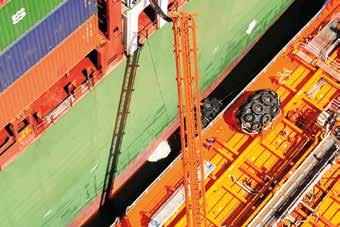

Bunker sampling is one of the most important aspects of bunkering. This chapter covers preparations, practical issues and what to do if something goes wrong. Details of the role each stakeholder ashore and on board undertakes during the process including actions required before, during and after the bunkering.
Details on how to create a solid background for calculating the bunker quantity and determine if the ordered bunker stem has been delivered. For ships carrying equipment to undertake onboard testing of marine fuels, testing procedures are referred to and detailed description of how to interpret test results provided. Keeping an accurate and up to date oil record book is, together with the bunker delivery note, important as records for internal and external use for example during port state control.
The book is available to buy from Witherbys on this link: https://shop.witherbys.com/shipmaster-s-bunkering-manual-2022/ IBIA members receive a 20% discount on all publications. Please enter “IBIA” in the “Coupon/Gift Certificate” box to receive your 20% IBIA member discount.

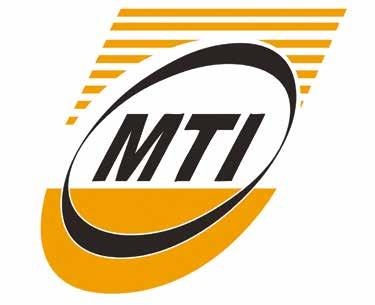
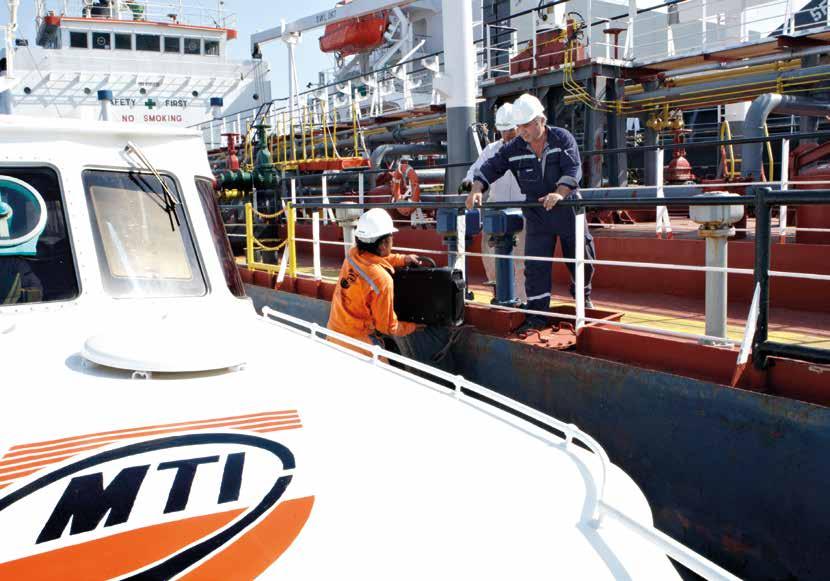
While many of the Gulf states have been weathering financial headwinds, it’s perhaps been Oman looking most towards expansion of late. While it has a long way to go to catch up with its rivals, additional bunkering services in several of its ports and steady performance for centrepiece, Sohar Port have allowed the Sultanate to push itself as a genuine contender in recent months, and continued tensions around the Strait of Hormuz with Iran can only help it entice vessels looking for fuel.
Relative newcomer O Bunkering has been particularly busy of late. In May it announced an agreement with Marsa Al Duqm Investments, a subsidiary of Fisheries Development Oman, to provide bunker services and build and operate a bunkering station in Duqm to supply fuel at Duqm Fishing Port. Ali Amur Al-Shaibani, CEO of O Bunkering, said that this agreement represented a significant success and a big step for the company.
In July, the company announced it was expanding operations into the Port of Khasab in agreement with Hutchison Ports Sohar, which manages the port. Khasab handles ferry traffic and cruise vessels as well as freight.
Al-Shibani said: “O Bunkering’s appointment as an official bunker supplier at the Port of Khasab reflects our commitment to the growth and diversification of Oman’s maritime industry. This strategic move not only strengthens
our footprint in the region but also enhances the port’s competitiveness.”
O Bunkering isn’t the only company expanding into Khasab, with Hormuz Marine, which has been steadily increasing the number of ports it serves across the country, signing a similar deal with Hutchison in June. India’s Shiny Shipping Group announced in June that it was expanding to cover Oman as well, offering physical supply in Sultan Qaboos, Shinas, Al Suqayq and Sohar. Bunkering in Oman has previously been dominated by the marine arm of Oman Oil Marketing Company, so having private enterprise adding to the mix can only be welcome.
Sohar remains the country’s main hub, and the port enjoyed a strong year in 2022. Annual figures released at the end of the fiscal year show port throughput was up 11% to 77 million tonnes, primarily due to increases in dry and liquid bulk cargo volumes, though vessel calls remained broadly steady. Ship to ship transfer volumes - presumably mostly bunkering - was likewise steady in terms of volume, nudging barely ahead of 2021 at 3.2 million tonnes. Very respectable, but still less than half Fujairah’s figure for the same year, and while the port doesn’t provide a breakdown of figures further, it would seem to suggest that while visiting vessel size has increased, the volume of bunkers taken on hasn’t.
Emile Hoogsteden, CEO of Sohar Port and Freezone, said: “Progress in key areas throughout Sohar Port and Freezone is extremely positive and proof that the initiatives we have put in place are delivering results. Our long-term goal is for Sohar to become an integrated industrial, logistics and port complex that hosts complete value chains in manufacturing, food production and energy. By exploring investment and attracting key anchor tenants in diverse and new sectors, including green and renewable energy as well as a recycling cluster, we will make the Port and Freezone more efficient and environmentally fit-for-the-future as well as a regional hub for many of Oman’s major national industries.”
Like Sohar, Fujairah saw a middling year in 2022, as did many of the main hubs, with fuel sales dropping 1.5% to 7.7m tonnes as financial crises hit world trade. LSFO and MGO sales were particularly down, but with greater scrubber usage, HSFO volumes rose 12% on 2021 to take a larger slice of the market. That pattern has continued into this year, with monthly year-on-year sales down around 10% across most of the first half of 2023, despite relative HSFO demand continuing to climb. It’s still by far the largest regional hub, of course, and the port continues to see a steady churn of upgrades, expansions and development, but the relative lack of investment in alternative fuels is beginning to become marked compared to its rivals.


Biofuel blends have made slow inroads into the UAE market, with Monjasa making its first delivery off Dubai last year and taking on something of a trailblazer role for the fuel type locally. The company’s Middle East and Africa commercial director Moustapha El Maghlouk said: “By promoting new partnerships with Uniper and Neutral Fuels, Monjasa is present at the production site and throughout the supply chain to understand the full spectrum of logistics needed to make this project a success. With our combined synergies across fuel sourcing, production and logistics, we are confident of building a scalable biofuel option and we are already receiving interest for biofuel blends from several shipping companies operating in the Middle East.”
The company added a new tanker to its Middle East fleet this summer, the Monjasa Shipper, which the company noted specifically “is able to carry and segregate several different fuel grades, which fits well with Monjasa’s emerging biofuel activities in the UAE”.

Biofuels are currently very much a niche though, and the bulk of the Middle East Gulf market and fresh developments within it continue to be dominated by traditional hydrocarbons. Kuwait’s Al Azour refinery, whose first stage came online at the turn of the year, the second in March, and third should follow by the end of 2023, is set to produce up to 7m tonnes per year of VLSFO for export - in turn, likely to push down prices at Fujairah. The new refinery has had a couple of teething problems, but having an extra source of locally refined product is still likely to help shore up Fujairah’s sales.
The port won’t be benefitting from fresh LNG export trade though, with UAE state energy firm ADNOC deciding to base its latest LNG project in Al Ruwais instead of Fujairah, citing in a statement the location’s proximity to existing ADNOC operations, supplier base and plans for future growth. The company has already signed multi-year, multi-billion-dollar export contracts with France’s TotalEnergies and Indian Oil Corp as the global gas supply market continues to adjust to the end of Russian gas supply to Europe following the invasion of Ukraine.
However, the UAE has put its weight behind mass green hydrogen production ahead of its hosting of the COP28 summit later this year. In July, the Ministry of Energy and Infrastructure updated its National Energy Strategy 2050, which had previously aimed for only 70% decarbonisation by 2050 (and an overall energy mix only 50% moved away from fossil fuels) to target net zero overall carbon by 2050, including the aim to be “among the leading countries” for hydrogen production by 2031. The aim is to establish two green hydrogen “oases” by 2031, five by 2050, to produce 1.4m tonnes per year and 15m tonnes per year respectively. This, the UAE hopes, will reduce carbon emissions in hard-to-abate sectors - including shipping - by 25% nationally come 2031 and entirely by 2050.
If successful, the UAE has the existing infrastructure to make meaningful hydrogen fuel supply viable comparatively readily. But with huge rival production projects already in the early stages in Saudi Arabia and Oman, the country can’t afford to drag its feet. Its first production projects are underway - a 200,000-tonne ammonia plant in KIZAD Industrial Area near Abu Dhabi, a Dubai Electricity and Water Authority pilot plant, and a variety of early-phase developments - but to meet its targets, it will need many more.
One of its other rivals is Egypt, which has been looking to develop hydrogen
projects for the past couple of years. The Red Sea port of Sokhna is now on track to become the country’s first source for green ammonia - and it seems as though there’ll be, initially at least, a split between hydrogen fuel availability across the Canal: methanol at the northern end, ammonia at the southern.
The turn of the year saw commissioning of the first phase of a green hydrogen plant in Sokhna by a consortium of Fertiglobe, Norway’s Scatec, Orascom Construction and the Egyptian Sovereign Fund. The plant, the first of its kind in the region, is still awaiting a final investment decision - though hydrogen tie-ins have already been installed at Fertiglobe’s existing Ain Sokhna plant so given the probable demand this seems likely to be only a matter of time - but should produce 15,000 tons of hydrogen per year from 100 MW of electrolysers to be converted into 90,000 tons of ammonia.
Ayman Soliman, CEO of Egypt’s Sovereign Fund, said: “This project is a showcase of transitioning from pledges to implementation, delivering on Egypt’s promise to the world to create a regional hub for green energy and transforming the Suez Canal into a green corridor. We are setting a precedent with our foreign and local partners from the private sector by establishing the first integrated green hydrogen plant in Africa and emerging
markets that caters to the growing demand for clean energy. It is a moment of pride that we will build on for future generations. Our pipeline of projects in the green energy field capitalises on Egypt’s ideal location with its unique renewables profile and proximity to markets with renewables deficits to realise our shared goal of emissions reduction.”
Scatec is also a key player in the planned methanol production at the other end of the Canal. The deal to build the new Damietta plant was inked only a couple of months ago at the time of writing but is expected to involve a US$450m investment to produce 40,000 tonnes per year of methanol initially, scalable up to 200,000 tonnes from a 60MW electrolyser.
Minister of Petroleum and Mineral Resources Tarek El Molla said the project would be another step in implementing the transition to low-emissions fuel in the country, while Scatec hopes to see Egypt become a green fuel production hubsomething its position on such a busy shipping route certainly makes possible.
The Egyptian government has also been pushing for some years to both increase its cargo infrastructure at both ends of Suez, and to make ports particularly at the southern end of the Canal a bunkering hub capitalising on traffic waiting for transit.
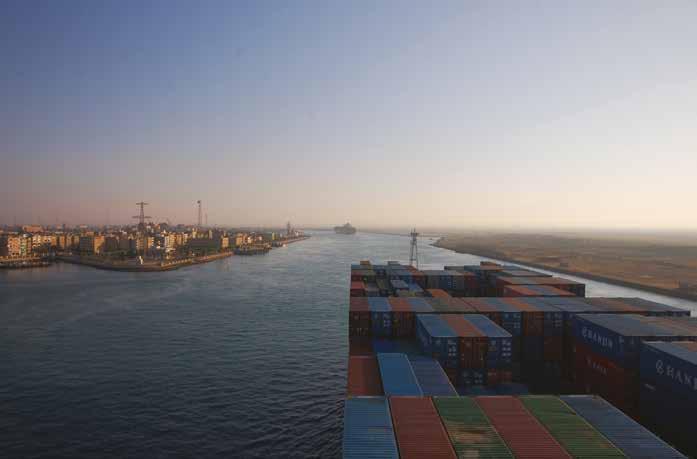
Sokhna again is in line for some sizeable upgrades on both counts. Earlier this year, Hutchison Ports announced a deal to develop a new container terminal there with a capacity of 1.7m TEU. The concession is part of a combined US$700m development along with a similar terminal build in Alexandria and more than doubles the company’s investment in Egypt.
And Mercuria Energy Group’s international bunkering arm Minerva Bunkering has this summer launched physical supply operations including at Sokhna to service Canal traffic, becoming Egypt’s first international bunkering operator to be licensed. The company has five bunker tankers serving ports and waiting anchorages - where its first deliveries were all made - as well as a 150,000 dwt floating storage unit.
“With more than 23,000 vessels transiting the Suez Canal each year and significant additional vessel traffic calling domestic ports, Egypt represents one of the world’s most strategic maritime markets. Bringing Minerva’s industry-leading physical supply chain, fuel quality performance, and operational excellence will add significant value to the international shipping community and their vessels operating in Egyptian ports and waters,” said Minerva CEO Tyler Baron.
The company says its existing footprint in the Med and expanding presence in Saudi Arabia’s Red Sea ports gives it an advantage and will allow Minerva to offer multi-port deliveries. Minerva began bunkering operations in Yanbu and Jeddah at the end of 2021, citing the Red Sea as a previously under-served market. Fellow international operator Peninsula has also been licensed to supply bunkers to Suez Canal traffic but is only operating at the Mediterranean end.
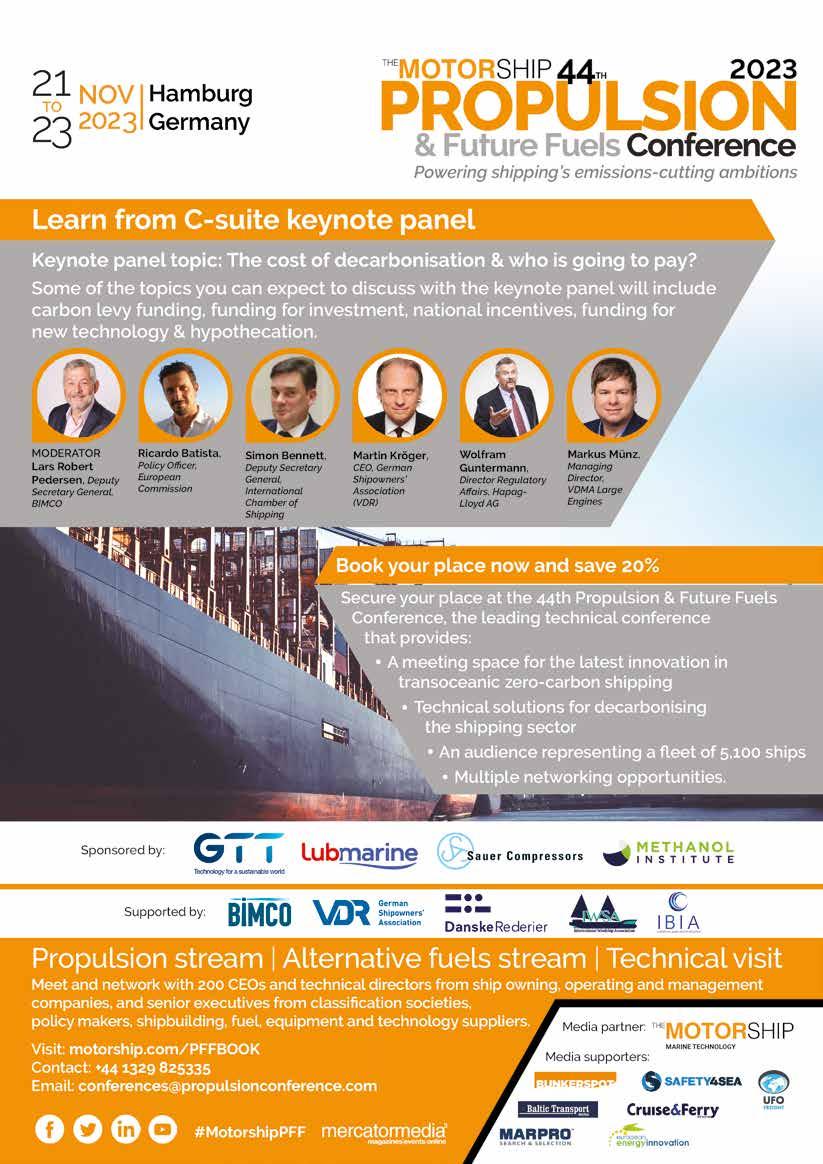

In today's ever-changing world, environmental challenges have become increasingly paramount. One company that is at the forefront of this mission is Bunker One, a worldwide physical bunker supplier, which is part of the world's largest bunkering group, Bunker Holding Group.
Entirely dedicated to customer satisfaction and its environmental responsibilities, Bunker One is empowered to tackle companies' increasing demand for greener solutions. Hence, Bunker One is committed to facilitating more sustainable solutions to help clients reduce climate impact.
Recently, Bunker One has amplified its focus on the United Kingdom and the North Sea region, propelled by the appointment of Grant Foulger as the Director of Bunker One UK. On a mission to fortify the bunker supplier’s operations in this area, Grant is working towards implementing initiatives in collaboration with Bunker One’s other North European operations to provide clients with a streamlined bunkering supply.
Bunker One’s commitment to the green transition resonates with the increasing demand for low-carbon fuel solutions:
"We are experiencing an increased demand for low-carbon solutions. This is inevitably incentivised by newly implemented regulations and guidelines, pushing companies within various industries to strive for a reduced scope of emissions. Nonetheless, more than anything, this underpins the significance and relevance of our work with sustainable fuels, embracing customer demands by enabling them to meet their environmental goals of reducing greenhouse gas emissions,” states Grant Foulger.
This aligns with the global shift towards sustainable practices. Striving to be at the forefront of the green transition, Bunker One’s aspirations extends beyond offering new and greener solutions; with a specified target, the ambition is to facilitate substantial change:
"We aim to achieve an immense increase in our sales, simultaneously ensuring that at least half of this growth stems from environmentally sustainable sources,” says Grant Foulger, emphasising the critical role of the maritime sector in steering shipping clients toward alternative solutions for reduced climate impacts.
Collaborating synergies among Bunker One’s North European locations, counting Denmark, Sweden, Germany and the United Kingdom, are central to fortifying Bunker One UK's mission.
In its pursuit of environmental excellence, Grant Foulger envisions shuttle tankers serving all of Bunker One’s North European operations. This vision is set to ensure a seamless supply of sustainable energy solutions across various ports in the North Sea region, which is one of the busiest sea traffic areas in the world:
"The idea is to assure customers of readily available green fuels across various ports, fostering a unified commitment to sustainability.
With a resolute focus on advancing the green agenda, Bunker One UK is upscaling to progress toward a more sustainable future. The newly appointed Director, Grant Foulger, is at the helm of this ambitious journey
Despite being individual entities, we collaborate closely across our locations to ensure a streamlined bunkering supply," says Grant Foulger.
Establishing a new team of qualifications
While Grant Foulger was recently appointed as the Director of Bunker One UK, he’s been working within the Bunker Holding Group for approximately three years. He has more than 20 years of experience in the maritime sector, making him a highly experienced professional.

With the intensive focus on the UK entity, Grant is building a unique team of experienced professionals and aspiring juniors.
“At the moment, I am establishing a dynamic team of great competency to forward our aspirations. The idea is to become the UK's largest marine fuel supplier. And to achieve this, we must ensure a strong team of competent people to take on this important task.”
Grant believes in nurturing expertise, noting that the level of expertise in the industry is high. Moreover, that is exactly why it's important to pass on knowledge for the evolution of the industry across generations:
"Sharing knowledge is a personal passion, and it's also integral to our progression.”
Knowledge sharing is indeed what brings value to the table – not just within Grant’s team but also across Bunker One's operations.
Already sharing knowledge and amplifying one another, Bunker One UK is collaborating closely with Bunker One Denmark with regards to the implementation of sustainable fuels.
Kristian Korsgaard Pedersen, Sales & Business Developer Manager at Bunker
One, is a skilled expert in new fuels and carbon markets. Kristian, who has followed shipping’s green transition from the beginning, comments:
“As the push towards lower greenhouse gas emissions from new regulations presented by IMO and the EU intensifies, all Bunker One’s entities are gearing up to introduce more low-carbon fuel solutions.”

Hydrotreated Vegetable Oil (HVO), Biodiesel (FAME) and Gas to Liquids (GTL) are products already being supplied from Bunker One’s supply locations in Europe. However, the company is still waiting for the demand to reach a substantial scale, allowing Bunker One to optimise the logistics and infrastructure. The benefits from economies of scale will reduce client costs.
Customers are raising many relevant questions about the new fuel types, and Bunker One’s specialists are happy to assist any clients who want to know more. The Technical Department of Bunker One has recently staffed up to meet the increasing demand for technical advice.
Bunker One likewise finds itself committed to having the correct certifications to verify compliance with sustainable standards. Therefore, all shipping clients can rest assured that any delivery related to sustainable fuels will be accompanied by an ISCC certificate showing greenhouse gas emission information and the origin of the feedstock.
Grant Foulger, Director, Bunker One, UK.M: +44 79 2105 8322
E-mail: salesUK@bunkerone.com

Pakistan has suffered under the weight of the financial crisis of the past year, needing an IMF bailout in July to keep its economy afloat in the teeth of inflation and thin currency reserves on top of a sharp balance of payments imbalance. T he latter issues saw it turn to discount Russian oil blocked from trade to the West to feed state-run Pakistan Refinery Ltd plant in April, and then again in July, reportedly paying in Chinese currency to do so to preserve its dollar foreign reserves.
It’s not likely to be a popular move in many quarters, but the country’s had little room for manoeuvre recently. PRL itself is in turn looking now to buy, alongside a local communications company aiming to diversify, a 77% stake in Shell Pakistan, which is up for sale following Shell’s decision to pull out of the country in June (in order to “simplify Shell’s portfolio”, part of a set of decisions to prioritise investment returns which includes ditching much of its renewables strategy). The offer is so far, at time of writing, the only one. PRL is one of five refineries in Pakistan, which has historically been affected by varied availability of various fuel grades because of limited capacity and reliance on imported feedstock. VLSFO availability in particular has been a recurring issue over the last couple of years. PRL began planning for an overhaul of its current refinery last year which would double its capacity and greatly increase its ability to produce highly refined distillates, estimated at US$1.2bn.
Further temporary issues have dogged Pakistan’s bunkerers this year, most notably a change in the country’s customs software which caused considerable disruption and, in many cases, stopped sales altogether for some weeks.
Speaking to World Bunkering, however, the bunkering director at major local supplier Orion Bunkers, Zishan Arshad, remained confident for the future:
“Without a doubt [the global fuel] market has stabilised now, and we are aligning with the same,” he said. “Currently, business is going well, except for the month of April as it took approximately a month to settle down with the new customs software integration for bunkering.
“External factors [Pakistan’s current financial crisis] are disturbing because clients love to refuel in Karachi as they get the best product, competitive price, and exceptional services.
“Going forward, we are seeing great opportunities to supply more volume, as we are hoping that another refinery will start VLSFO production in the coming months.”
Sri Lanka has also had to weather a crippling financial crisis, with the country nearly running out of foreign currency reserves, and consequently many vital imports, last year. An IMF bailout and rounds of debt restructuring, as well
as support from India and China, have seen soaring inflation brought sharply downwards, though the economy is still badly hit and a freeze on outward capital transactions was renewed in June until at least September (one upshot of which is a renewed deal with Iran that will see Sri Lank pay off $250m owed for oil shipments through tea exports, enabling state-run oil companies at both ends to trade tea for local currency).
And it’s in the ports, fuel, and energy sectors that Sri Lanka seems set to either draw fresh investment from both India and China, or where the country will have to trade debts owed for holdings in its infrastructure. At the time of writing, President Ranil Wickremesinghe is conducting an official visit to India where he’ll hold discussions with Prime Minister Narendra Modi “on a range of issues of mutual interest”. These are widely reported to include possible Indian investment to turn Trincomalee into an energy hub along with fresh port developments, and potentially a new oil refinery, alongside renewable energy projects and other power infrastructure, much of it long mooted but never set in stone.
Speaking back in April at an event in Colombo North Port, Wickremesinghe re-emphasised that he wanted the country to become a sea and air trade hub, built in large part on links with India, China and Pakistan:
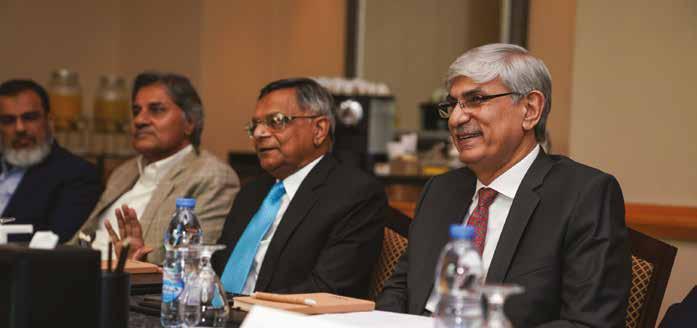
"So, in addition to Colombo, we have the Galle Port, which has great potential for tourism, the Hambantota Port, and the Trincomalee Port. We are discussing the development of the Trincomalee Port with India on the basis that in the next 25 years there will be vast development in the Bay of Bengal, both on the Indian side, the Bangladeshi side, Malaysia and even Myanmar.
"So, we have to look at the Trincomalee Port and also its capacity to be a point for cruise tourism in the Bay of Bengal. Hambantota, now, is not functioning at its full capacity, but development of the port in the next 10 – 15 years will see about 4000 acres set aside just for manufacturing not considering the development of agriculture and fisheries. This, and the fact that there’s going to be at least one refinery indicates that activities there will increase…
"So, we will have the development in India. Then what is the connectivity between India and Sri Lanka? Our closest point is in the north. Are we going to have a role on role of ferries? Are we going to have more permanent structures? These are issues that we must resolve and that will also determine the viability of our ports, especially the port of Colombo.
In looking at the port there’s only two issues which come to mind. Firstly, the environment, especially the impact on fishing, this we must take seriously. Because before you start building you must get the support of the people in the area.
“Secondly, we are also in discussion with India. Projections show that development will be fast and there’ll be a need for more, certainly a larger capacity for containers. Then we may have to make adjustments, we know we’ll be going into India and having talks with them so, we will have an idea of what is the low growth scenario and what is the high growth scenario and where it will take place. Because India also must develop its port, but Sri Lanka’s advantage is the port we have.”
In line with those ambitions, the country is weighing up an offer from China’s Sinopec to fully fund and build a new refinery at Hambantota with a minimum capacity of 100,000 barrels per day. Sinopec has handled bunkering at the port since 2019, and having a refinery on hand would almost certainly make fuel cheaper - and consequently improve traffic and volumes. While Hambantota has been slowly but steadily finding a niche for itself largely in the ro-ro sector under the management of Hong Kong-based CMPort, which also operates Colombo International Container Terminal, it still has a long way to go to match the original grand mega port plans that saw it become a notorious white elephant on first launch. Indeed, a refinery there was first announced in 2019 as a joint venture with a Singaporean company, but the project collapsed amid confusion as to who was involved in it and whether financing was ever in place. Sinopec certainly doesn’t have those issues, and a new refinery to end Sri Lanka’s reliance on its old, and small, Kelaniya refinery and imported products would reduce future pressure on its foreign reserves, making it an attractive proposition to the government - but given the time involved in construction and commissioning, the deal will likely have to offer something tangible now.
India meanwhile is very much looking to the future. The government announced in May that it wants green hydrogen bunkering available at its 12 major ports by 2035. In a report by Reuters, Shipping Minister Sarbananda Sonowal said that the first three to offer hydrogen fuels would Paradip, Kandla and Tuticorin, and that financing was under consideration. The country launched its National Green Hydrogen Mission last year, with ambitious targets to produce hydrogen fuels for both domestic use and export, backed by billions in financial incentives, with an aim to produce at least 10% of expected global demand, about 5m tonnes, by 2030. India is reportedly already in discussions with the EU and Singapore for long-term export contracts.
At the same time, India’s Shipping Ministry set out its Harit Sagar (“Green Ocean” in Sanskrit) green port guidelines for cleaning up port operations and reducing emissions.
Minister Sonowal said: “Ports are undertaking green initiatives and actively contributing to the fulfilment of the ‘Panchamrit’ commitments announced by our Prime Minister Shri Narendra Modi. The ‘Harit Sagar’ Guidelines 2023 provide a comprehensive framework for our major ports, empowering them to create a comprehensive action plan aimed at
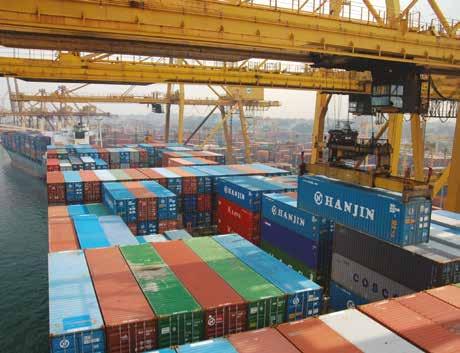
achieving quantifiable reductions in carbon emissions over defined timelines.”
According to the ministry, the objective of guidelines is: “To minimise waste through Reduce, Reuse, Repurpose and Recycle to attain zero waste discharge from port operations and promote monitoring, based on environmental performance indicators. This also covers aspects of the National Green Hydrogen Mission pertaining to ports, the development of green hydrogen facilities, LNG bunkering, offshore wind energy etc. and provides provision for adopting a global Green Reporting Initiative (GRI) standard.”
Minister for Ports, Shipping and Waterways
Shripad Naik added: “The launch of the Harit Sagar Green Port Guidelines is a significant step towards achieving our sustainability goals. These guidelines have been formulated with the aim of promoting environmentally friendly practices across all our ports.”
The Directorate General of Shipping has already made a ruling this year to ban most ships over 25 years old and either licensed for cabotage or domestic-flagged from handling cargo at Indian ports, with a three-year grace period for ships
already under charter. Oil tankers acquired second-hand over 20 years old will have their license withdrawn, as will all tankers over 25 years automatically - a ruling which applies to bunker barges too. Some vessel types such as gas carriers and some container vessels will be able to operate five years longer. The rule change is in line with the DGS’ stated need to modernise India’s domestic shipping.
“Quality tonnage is paramount for safe and secure expansion of the maritime sector and to achieve sustainability in ocean governance,“ the DGS said in its order. ”Whereas the average age of [the] world fleet is on the declining trend, the average age of Indian tonnage is on the increasing trend over the years. There is a need to modernise the Indian fleet, which requires extensive review of the requirements of the registration and operation of the ships, to ensure quality tonnage."
The DGS has also had to pointedly remind Indian port authorities that they shouldn’t ban ships from using scrubbers, requiring them to switch to VLSFO prior to berthing, as some ports had. In a circular laying out the rules, and emphasising MARPOL standards, the DGS said:
"Any port or local authority proposing to prohibit IMO (MARPOL) compliant ships (certified for alternate means of compliance to IMO 2020) from entering their port or imposing any additional requirements, including, changeover to low sulphur fuel oil, shall submit their request in this regard to the Director General of Shipping, Govt. of India, along with the risk and impact assessment duly undertaken by the respective authority in accordance with [IMO rules]. No port in India shall prohibit or impose additional measures on ships certified for alternate means of compliance to IMO 2020, unless authorised by the competent authority as above.
“The Directorate General of Shipping and its allied offices are conferred with powers to ensure compliance to IMO Conventions on all ships operating in the coast of India, under the ambit of Merchant Shipping Act and the Rules framed thereunder. It is therefore advised that any restriction placed on any ship by any port or local authorities in contravention of the above and thereby impede the smooth conduct of legitimate ship operations, may be undertaken only after due consultation with the Director General of Shipping.”
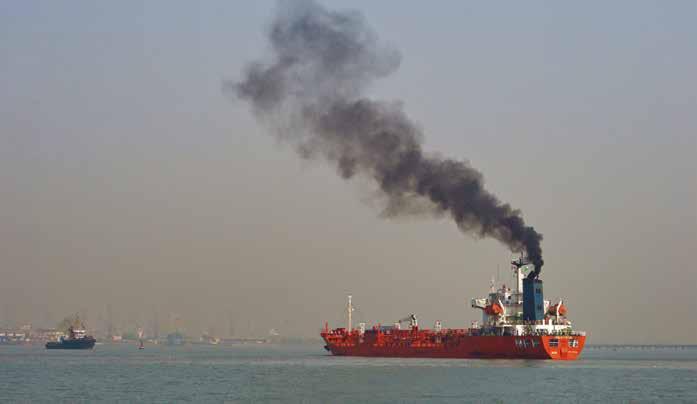
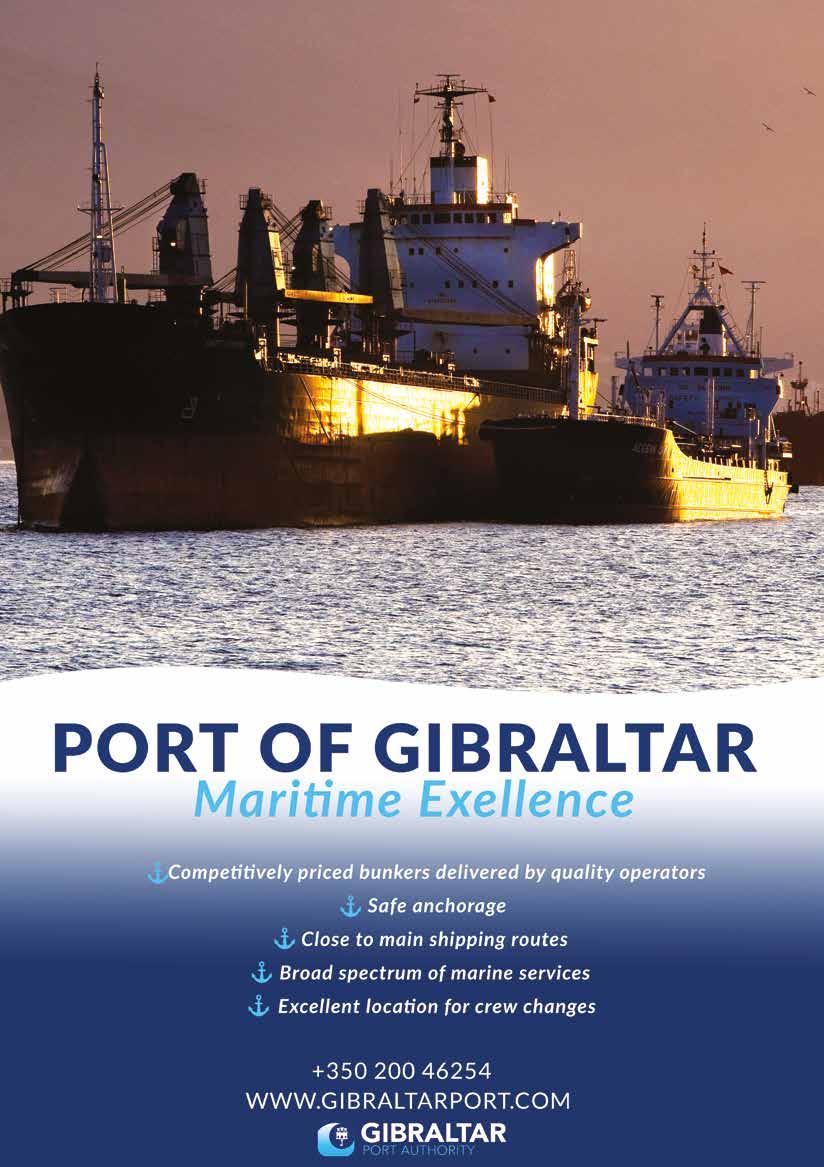
The combined emissions of metals and other environmentally hazardous substances from ships is putting the marine environment at risk according to a new study from Chalmers University of Technology, Sweden. When the researchers calculated the contaminant load from these emissions into the marine environment in four ports, it was found that water discharged from ships’ scrubbers, whose purpose is to clean their exhaust gases, accounts for more than 90 per cent of the contaminants. “The results speak for themselves. Stricter regulation of discharge water from scrubbers is crucial to reduce the deterioration of the marine environment,” says Anna Lunde Hermansson, a doctoral student at the Department of Mechanics and Maritime Sciences at Chalmers.
Traditionally, environmental risk assessments (ERA) of emissions from shipping are based on one source at a time. For example, the ERA might look at the risk from copper in antifouling paints. But as with all industries, shipping is an activity where there are multiple sources of emissions.
“A single ship is responsible for many different types of emissions. These include grey water and black water, meaning discharges from showers, toilets and drains, antifouling paint, and scrubber discharge water. That is why it’s important to look at the cumulative environmental risk in ports,” says Anna Lunde Hermansson who, with colleagues Ida-Maja Hassellöv and Erik Ytreberg, is behind the new study that looked at emissions from shipping from a cumulative perspective.
A scrubber can be described as a cleaning system for the exhaust gases arising from the combustion of heavy fuel oil, which has been the most common fuel used in ships since the 1970s. Seawater is pumped up and sprayed over the exhaust gases to prevent emissions of airborne sulphur reaching the air.
Scrubbers mean that ships can comply with the requirements introduced by the
International Maritime Organization (IMO) in 2020. The only problem is that the water not only takes up the sulphur from the exhaust gases, leading to acidification of the scrubber water, but also other contaminants such as heavy metals and toxic organic compounds.
The contaminated scrubber water is then often pumped directly into the sea.
Hundreds of cubic metres of contaminated water every hour
“There is no cleaning step in between –so up to several hundred cubic metres of heavily contaminated water can be pumped out every hour from a single ship. Although new guidelines for ERAs of scrubber discharges are in progress, the ERAs still only assess one source of emissions at a time, which means that the overall assessment of the environmental risk is inadequate,” says Lunde Hermansson.
In this new study, the researchers at Chalmers looked at four different types of port environments to determine contaminant concentrations from five different sources. Actual data from Copenhagen and Gdynia were used for two of the ports. They were selected due to high volumes of shipping traffic, and a substantial proportion of these ships having scrubbers.
The results showed that the cumulative risk levels in the ports were, respectively, five and thirteen times higher than the limit that defines acceptable risk. Port descriptions used internationally in ERAs were utilised for the other two port environments. One of these environments has characteristics typical of a Baltic Sea port, while the other represents a European port with efficient water exchange due to a large tidal range.
The researchers found that three out of the four port environments were prone to unacceptable risks according to the assessment model used. They also saw that it was emissions from antifouling paint and scrubber discharge water that accounted
for the highest levels of hazardous substances in the marine environment and had the highest contribution to the risk. More than 90 per cent of the environmentally hazardous metals and PAHs (polycyclic aromatic hydrocarbons) came from scrubber discharge water, while antifouling paints accounted for the biggest load of copper and zinc.
Total load is what causes the damage. “If you look at only one emissions source, the risk level for environmental damage may be low or acceptable. But if you combine multiple individual emissions sources, you get an unacceptable risk. The marine organisms that are exposed to contaminants and toxins don’t care about where the contaminants come from, it is the total load that causes the damage,” says Lunde Hermansson.
The only port environment that showed an acceptable risk in the researchers’ ERA was the model with the highest water exchange per tidal period, meaning that a high volume of water is exchanged in the port as the tide moves in and out.
“It’s important to remember that the contaminated water doesn’t just disappear – it is transported elsewhere. In the port environments studied, there might be a kind of acceptance of environmental damage – that in this particular environment we have decided that we will have an industry and that it will result in pollution. However, when the contaminated water is washed out to sea, it can end up in pristine sea areas and have even greater consequences. This is something we address in our research. We look at the total load, how much is actually discharged into the environment,” says Lunde Hermansson.
Having scrubbers on a ship is not a requirement. They are installed and used as an alternative to switching to a cleaner and more expensive fuels that emit lower volumes of metals and PAHs. Scrubbers allow ships to continue using the much cheaper and more polluting heavy fuel oil.
Heavy fuel oil is a residual product in the distillation of crude oil and is now used only in maritime transport.
Economical to install scrubbers.
Since the mid-2010s, the number of ships with scrubbers installed has increased. In a study conducted in 2018, it was found that there were 178 ships with scrubbers operating in the Baltic Sea. Today, the researchers estimate that there is triple that number. Globally, there are about 5,000 such ships, representing around five per cent of the total fleet.
“But it’s the large ships with high fuel consumption that install scrubbers, because it is more economical for them to do so. So, we anticipate that they would account for somewhere around 30 per cent of total fuel consumption in shipping,” says Lunde Hermansson.
She points out that the use of heavy fuel oil as a ship fuel also contradicts the commitments that the IMO has said it wants to make, such as reducing greenhouse gas emissions from shipping by 50 per cent by 2050. The Swedish Agency for Marine and Water Management and the Swedish Transport Agency have submitted a proposal to the Swedish Government to prohibit the discharge of scrubber water into internal waters, that is, waters that lie within the Swedish archipelago.
“It’s a step in the right direction, but we would have liked to see a stronger ban that extends across larger marine areas, while we also understand the challenge for individual countries to regulate international shipping,” says Erik Ytreberg, an associate professor at the Department of Mechanics and Maritime Sciences at Chalmers.
The article Cumulative environmental risk assessment of metals and polycyclic aromatic hydrocarbons from ship activities in ports has been published in the journal Marine Pollution Bulletin. The authors are Anna Lunde Hermansson, Ida-Maja Hassellöv and Erik Ytreberg – all working at the Department of Mechanics and Maritime Sciences at Chalmers – and Jukka-Pekka
Jalkanen of the Finnish Meteorological Institute. The research was partly funded by the EU project EMERGE within the framework of the Horizon 2020 funding programme.
The work to assess the environmental risk in the ports was carried out following a bottom-up approach (see the illustration).
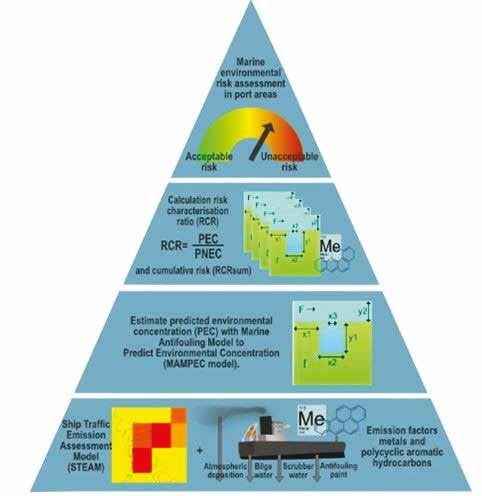
In Step1(at the bottom), the loads from various emission sources from shipping were calculated. The volumes were estimated using STEAM, a model that assesses emissions from ship traffic. The volumes were combined with specific concentrations of the substances within each emissions source to calculate the load of the different substances.
In Step 2, the daily load was used to estimate the resulting concentrations in the environment, called PEC or predicted environmental concentration, using the MAMPEC model. The model calculates PEC for a defined environment (in this case a port), using the properties of the
substances (in this case of nine metals and 16 polycyclic hydrocarbons) and the daily load of the substances (from Step 1). MAMPEC calculates PEC for one substance at a time at a constant load.
In Step 3, the results were then combined to enable the inclusion of more substances as well as loads from different emissions sources simultaneously. To calculate the environmental risk, the PEC is compared with the limit values that represent the concentration that can be considered safe, in other words, where no negative effect on the marine environment is found. This is also known as the PNEC (Predicted No Effect Concentration). If the PEC is higher than the PNEC, it is said that there is an unacceptable risk.
In Step 4, the risk characterisation ratios (RCRs) from multiple substances were added together, which means you can calculate the cumulative risk and present a more comprehensive environmental risk assessment within an area.
Illustration: Chalmers
| Anna Lunde HermanssonExhaust Gas Cleaning Systems Association (EGCSA) director Donald Gregory gives his organisation's response to the criticisms levelled at the use of scrubbers
The Exhaust Gas Cleaning Systems Association, (EGCSA), has been representing the small number of designers of marine diesel engine and marine boiler exhaust gas wet and dry scrubbers for over 15 years. In that time the industry has suffered a dearth of orders whilst maintaining the skills and engineering expertise to design bespoke installations and all the necessary auxiliary equipment. But there have been boom years where there were simply not enough engineers, special steels and docks to service demand. Nevertheless, the industry has delivered and provided solutions to lower emissions of sulphur dioxide at lower cost and with an overall lower CO2 footprint than by using alternative low sulphur fuels.
A simple measure of success can be illustrated by the statistics on bunker sales courtesy of Lloyds FOBAS fuel testing services. At the turn of 2020 the volumes of high sulphur fuel oil, (HSFO), represented 18% of global bunker sales. That figure was distorted by COVID 19 and the major slowdown in shipping trade, especially of liner markets and cruise sector. But today the sales of HSFO represents 26% of total bunker sales and contributes a lowering of overall well to wake CO2 emissions of at least 35Mt.
Despite achieving the objectives of the IMO Marine Environment Protection Committee, the EGCS industry faces two very vociferous groups that have consistently wished to ban the use of HSFO on ships. Their reasons are based on the off-made statement that HSFO is a “dirty fuel” and highly polluting. As a result of this belief by principally the Coalition for Clean Air, (CCA) and the EU DG Environment (DG ENV), the EGCSA members and for that matter ship owners have been bombarded with frequent and unverified criticism of EGCS discharge water.
Despite early environmental impact assessments by BP by Dr Brigitte Behrends in which she declared the impact was
negligible and many more recent samplings and assessments by authorities such as the Danish Hydraulic Institute that undertakes much of the Ballast Water Management Systems approvals, the negative claims have continued.
It is interesting to note that the EU DG Environment lead by Ms Rosa Antidormi and the NGO groups have been unwilling to set the desired discharge water conditions. It is as Ms Antidormi stated back in 2014 at one of the very early European Sustainable Shipping Forums (ESSF), that no matter how clean the discharges, the principle to be followed by DG ENV was to be opposed to the use of EGCS.
It is ironic that this opposition to EGCS creates a problem for the EU and for the NGOs pushing IMO to reduce CO2 emissions. I think we would all agree that any short-term measures that can reduce at least a significant percentage of CO2 now would be of great benefit to shipping but also to the world in what is a hard to abate sector. HSFO has up to 20% well to wake CO2 emission reduction for the same output power from a ship. But there is also a practical opportunity to capture around 40% of the CO2 from combustion on board ship and dispose of it ashore. To do that the Carbon Capture equipment needs a cool and clean exhaust gas. The only practical way to achieve that is by wet scrubbing of the exhaust gases.
It also seems that the EU and the NGOs have little concern of harm to human health from ships in high density ports such as Rotterdam where recent studies are showing serious consequences to human tissue from the exhaust gases of the port stay vessels burning highly processed distillates and other new marine fuels.
The EGCSA has tried to understand the basis for this opposition. It has concluded that the challenge is that science is succumbing to a belief system much like
we see with the polarisation of politics in the western world. However, there was a desire to confirm and verify if in fact beliefs are trumping, (excuse the pun) science. EGCSA asked a spokesperson for the EU who at IMO MEPC and the Pollution Prevention and Response Working Group, claimed that “there is increasing evidence of the harm caused by EGCS discharge water”. The spokesperson did state the statements were being pushed by the EU. We asked for the basis of the claims and were provided with some documents that were said to support the claim.
EGCSA decided to undertake two approaches to the claims and the referenced documents. Firstly, a purely objective assessment of the scientific nature of each of the documents. Secondly a more nuanced assessment of the content and conclusions/claims of each of the documents.
In this article EGCSA provides a précis of the first objective assessment of the documents. There are nearly 20 documents altogether. This number of some 20 documents comes from authors cross referring to other papers. Many of the papers are funded by EU Horizon projects and many other documents use some parts of those funded papers to draw more conclusions and claims.
The work was complex and detailed and took several 100s of man-hours. It is worth noting that some of the papers that are presented to the IMO draw on these papers which can be over 80 pages in length and full of cross references. One might conclude that given the lack of any sort of verification process for the acceptance of IMP papers it is probably unlikely that the papers have been properly scrutinised when being used to set policy, regulations, direction of travel etc.
The objective assessment subjects each paper to the categories of METHOD and FINDINGS. In each category assessments were undertaken of such things as “were
real world samples taken?” “was the sampling procedure recorded”, “was the sample transport and containment to the lab fully described”. In fact, several papers report no sample analysis but simply piggy back on other papers for data.
The lab methods were assessed to identify if they had used recognised methods or locally invented methods. A paper from Chalmers for example reported a locally invented test procedure with non-standard test organisms. They claimed that this was more important and relevant than the ISO standards. However, given the rigour needed to develop and have an ISO standard accepted, it would seem that in the case of Chalmers, the belief is that individuals in this institution know better than the experts who were involved in developing the ISO standards.
Another aspect of discharges is the fate of the compounds. It is well known that compounds don’t simply accumulate but instead may break down, disperse, evaporate, react and in some cases gradually accumulate. Without these mechanisms anything discharged whether into water or air would just remain which simply is not the real world and would mean sustainability would be impossible to achieve. The papers were ranked on the various sub categories of fate assessment or if it was simply ignored.
In the FINDINGS section a sub category is whether risk categorisation had been used. We know that every action carries a risk. But it is managing the risk that makes human advancement possible. A no risk approach would mean total stagnation and no progress. DG ENV has used the so called “precautionary approach” when it suits their beliefs but in many other cases, they have ignored it.
The assessment looked at whether a risk ratio had been applied.
The overall assessment of all the sub categories were marked and scored and the results totalled. Only the Japan Government study gave a positive score. That means the paper took samples, undertook recognised sample analysis, undertook fate assessment and risk ratio calculation etc.
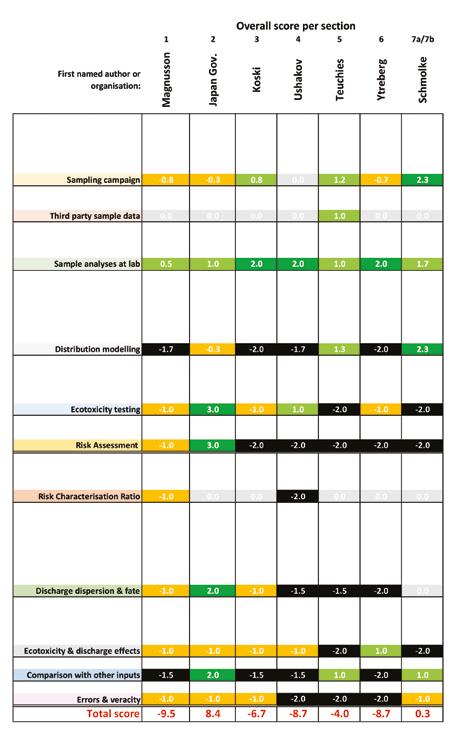
The table below is an extract of the METHOD category and the scoring weighting. One of the papers does no discharge water sampling. It was thus scored down as the paper is devalued by the lack of authors own data. Many papers don’t describe the sampling method used. This is important as without knowledge of the sampling method there is lack of transparency on its veracity.
The NGOs have also claimed that sampling undertaken by ship’s crew or by ship owners or EGCSA are invalid as they lack independence/impartiality. However, many of the papers they cite do not describe the sampling method.
The full report is awaiting the response of the representative that has made the statements at IMO, in order to be fair and provide a right to reply.

It is becoming increasingly necessary to call out the unfounded and unverified claims that presented in the media or to IMO.
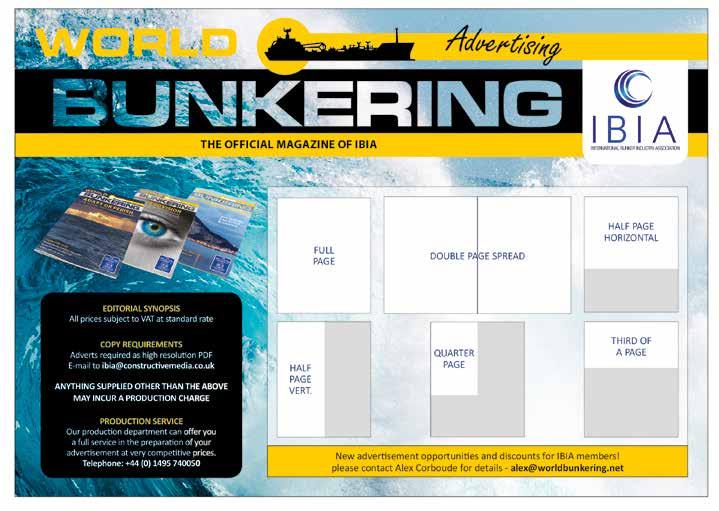
It is all too easy to create sensation from such claims of harm and danger. The consequences of false information are leading policy in many cases in the wrong direction. The consequences will be increased costs in a globe where costs for simply living are escalating beyond the means of many.
Despite the increased costs the goals of cleaner air and lowering CO2 emissions are not being achieved.
Global marine energy solutions provider KPI OceanConnect, multinational professional services network Deloitte, and payment services provider ZTLment have announced a new partnership to incorporate blockchain technology into marine energy trading through the AuctionConnect platform. They say this will “ensure greater traceability in the value chain and improve maritime sustainability”.
The organisations combined their “innovative approaches and expertise” at the sixth International Blockchain School hackathon in August with the aim of developing a “transparent, sustainable method for carbon offsetting transactions in the shipping industry”.
The three companies say that as the uptake of carbon credits will increase in both the voluntary and mandatory markets, they recognise the need for greater transparency in the value chain. They intend to “restore trust in carbon offsets” using blockchain technology to provide an unalterable record of carbon credit transactions and create a “reliable and effective picture of emissions reductions”. This, they assert, will “help to solve the long-standing challenge of the accuracy and reliability in carbon offsetting claims”.
Meanwhile GTT Group brand Ascenz Marorka1 has been granted Type Approval
for its Shaft Power Limitation (ShaPoLi) solution by the classification society DNV.
The company says that the solution helps shipowners and operators comply with the IMO regulations aimed at curbing greenhouse gas (GHG) emissions and carbon intensity by 40% before 2030.
This certification confirms that Ascenz Marorka ShaPoLi system complies with IMO resolution MEPC 335(76) and can be used on vessels subjected to EEXI2 overridable power limitation.
The solution monitors propeller shaft power and signals an alert in the wheelhouse if the shaft power exceeds the EEXI calculated maximum power. The system logs the periods where the limit was exceeded and enables crew to give comments.
The solution can also be connected to the Ascenz Marorka online platform and thus offer real-time monitoring and optimisation capabilities to users onboard and onshore.

In a separate development Miros Mocean, a joint venture between Miros Group, Copenhagen Commercial Platform, and BW Group, has launched the TrueView Platform. According to the JV the platform will deliver “unprecedented accuracy in ship performance measurements – enabling the verification of energy saving device (ESD)
benefits, and performance-linked charter party contracts”.
It claims that investments in ESDs will become essential in reducing a vessel’s energy demand in the face of rising fuel costs and carbon levies. “However,” the JV says in a statement, “…real savings have never been measured and verified in service.”
The statement notes: “Through the recently issued Recommended Practice for Technical Ship Performance and the Vessel Technical Index put on public hearing from DNV, the shipping industry finally has a standard methodology for measuring and evaluating vessel performance during operation. Miros Mocean is delivering the required technology and accuracy through its TrueView platform – making the benefits of ESDs measurable and verifiable, incentivising owners to invest more in ESDs and thereby benefiting the environment.”
In addition to validating investments in ESDs, True View is also intended to enable the establishment of the Efficient Charter Party (eCP), addressing the existing split incentives in commercial contracts (CP) between owners and charterers. Currently, vessels are operated based on warranties rather than optimal performance, leading to significant tolerances in CP warranties.
Italian classification society RINA has awarded Approval in Principle (AiP) for a green retrofit package solution designed by the innovative naval architecture designer, Aurelia, in partnership with Econowind, Wattlab and Vertom.
The partners say that, using a series of innovative solutions, the retrofit design meets CO2 reduction targets in compliance with CII and speeds the path to decarbonisation for the shipping industry.
According to RINA, the retrofit package can be applied to almost any kind of vessel, whatever their purpose or cargo. It does not interfere with operational aspects, such as loading and offloading cargo. The system incorporates rigid sails, solar panels, batteries, optimised weather-routing, and a smart decision support system developed by Hydrographic and Marine Consultants (HMC) to dramatically reduce emissions of an existing Newcastlemax bulk carrier.
RINA adds that, working with sails experts, Econowind, and leaders in PV technology, Wattlab, and Aurelia has shown that big steps towards decarbonisation can be achieved today with practical, viable solutions for the marine industry.
For the Newcastlemax bulk carrier, the challenge was to meet EEXI and the CII index for the reduction of CO2 emissions. The 203,000 DWT bulk carrier has a length of 300 m, a beam of 50 m and a range of 24,500 nautical miles. Aurelia developed a CII calculator used to assess the status of
the vessel and give an overview of what was needed to comply with the CII index based on five annual sailings between Brazil and China.
The resulting solution proposes two investment steps for shipowners looking to comply with the CII index. The first, to be done in 2023, involves the installation of Solar Flatrack technology, batteries, and the SafePlan software developed by HMC. The combination of such technologies will aim to reduce the hours in service of the auxiliary engines. Any surplus energy not consumed by the vessel is used to charge the battery bank. This first stage of the retrofit of the auxiliary engine reduces the total CO2 emissions by 6.1%, or 3305 tons, and MGO fuel of the auxiliary engine by 97.5%.

The second stage of investment, required by 2025, includes the installation of six rigid, 30 m high sails to provide supporting wind propulsion, along with switching from fossil to biofuels. The added wind propulsion provides power to the vessel and lowers the load of the main engine, thereby reducing fuel consumption and was shown to reach 1237 kW at 67% operation per day. With the use of biofuels to further lower emissions, this investment stage reduces CO2 emissions by 10.3% or 5560 tons of CO2 per year.
Meanwhile marine engineering consultancy, BAR Technologies, and maritime technology company, Yara Marine Technologies, have announced that the
‘first cut’ of the steelwork that will form the first production run of BAR's pioneering WindWings has been completed. During the first half of 2023, two WindWings will be installed on MC Shipping-owned vessel the Pyxis Ocean, and four WindWings will be installed on the Berge Olympus owned by Berge Bulk. Global commodities business, Cargill, which charters the Pyxis Ocean, will be the first operator to see fuel savings and lower carbon emissions from the WindWings installation.
According to BAR Technologies, WindWings allows operators to save c1.5 tonnes of fuel per WindWing per day on average global routes. This directly facilitates a significant contribution to CO2 reduction in the shipping industry – with c4.7 tonnes of CO2 saved per WindWing per day assuming the use of heavy fuel oil for main propulsion.
At present, production is focused on the main spar elements that give the WindWings their height, alongside the associated booms, towers, and slew bearings. Concurrently, manufacturing is also progressing with the tilt mechanism that provides vessel charterers with the versatility to stow the WindWings during dockside operations, when passing under structures, or in certain sea conditions. The composite parts of the wings are also well advanced with the assembly and testing to follow.
In July this year reports started to emerge of issues with fuel delivered in Houston, including engine breakdowns.
On 10 July fuel testing and consultancy specialist VPS announced it had identified a marine fuel contamination issue in Houston. It informed its customers and the wider market of the presence of dicyclopentadiene (DCPD) isomers at significantly high levels within VLSFO bunker fuel deliveries in Houston.
The specific contaminants were chemical CAS numbers 4488-57-7 and 6004-38-2 and were detected by VPS using in-house GC-MS (Gas Chromatography – Mass Spectrometer) analytical methodologies.
Initially, VPS reported that 11 vessels had suffered operational issues, such as loss of power and propulsion whilst at sea. These effects resulted from fuel leakage in the injection control units (ICU) and fuel pumps not being able to develop the required fuel pressure, affecting only the auxiliary engines and not main engines. The contaminated VLSFO had been delivered in Houston, by one single fuel supplier.
In mid-August VPS said that a total of 14 had received the contaminated fuel and
suffered some form of damage to their auxiliary engines and fuel delivery systems. Twelve of the vessels received their fuel in Houston, while a further two had taken it on in Singapore, with the fuel delivered by four suppliers.

DCPD’s are unsaturated chemical compounds which can polymerise and oxidise under certain conditions. However, the rate of this polymerisation process can be reduced by the presence of inhibitors that are typically found within fuel oil.
Should these compounds start polymerising, the fuel begins to exhibit a level of stickiness and become more viscous, making it difficult for moving components, such as fuel pump plungers and the fuel injector spindles to move freely. These effects cause damage to the fuel injection system. Over a period of time excessive sludge formation is likely to be experienced.
According to VPS, the DCPD compounds that were detected in this fuel ranged from 3,000 to 7,000 ppm (0.3-0.7%) per delivery.
VPS employed its own proprietary GCMS Vacuum distillation methodology to detect DCPD, in preference to the ASTM D7845, Standard Test Method for Determination of Chemical Species in Marine Fuel Oil by
GCMS. VPS explained that its methodology can detect and measure the DCPD and its isomers, whereas the ASTM D7845 methodology is limited to detecting only 29 chemical contaminants, which does not include DCPD species.
In addition to the 14 vessels suffering damages from burning this fuel, a further 18 vessels that received the contaminated fuel from 13 additional suppliers, either witnessed no adverse reactions, or simply did not provide any feedback regarding any damage.
In total, the volume of contaminated fuel delivered to the 32 vessels, was 61,494 tonnes.
Three vessels de-bunkered the contaminated fuel prior to burning, following a 'caution' result from the VPS Chemical Screening service. A further three vessels de-bunkered the fuel after suffering initial engine damage from burning the fuel. However, another two vessels burnt the fuel in their main engines without issue after switching it from their auxiliary engines, where it had caused operational damage.
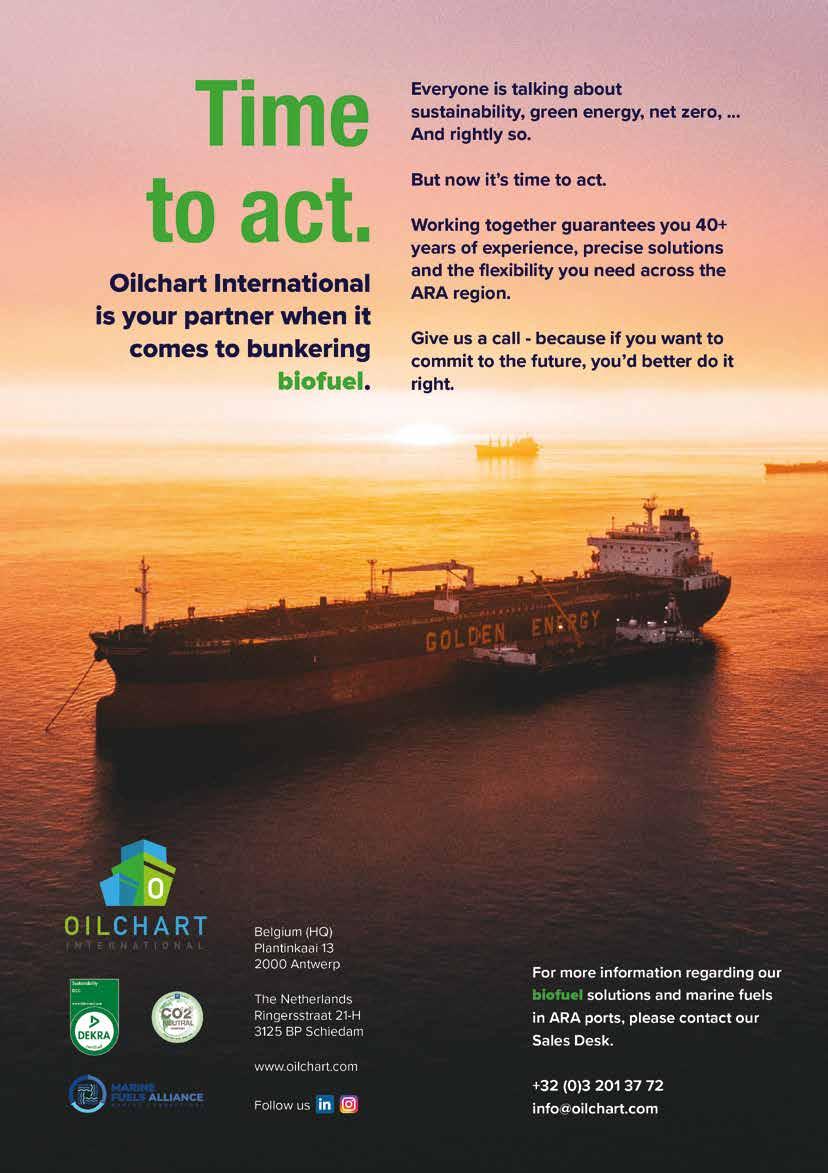
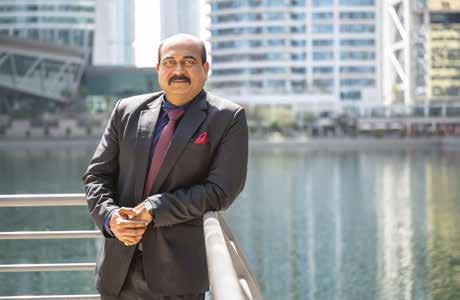
How is the regional bunker and shipping sector recovering from Covid? Have all restrictions been lifted and to what extent has the cargo traffic recovered?
The Indian government was highly proactive in tackling COVID. Apart from a few days in the initial stages, the Indian shipping industry was up and running at all the ports on the entire Indian shoreline in operation. Done with caution and all relevant measures in effect, especially pertaining to the safety of marine, port and pier workers, seafarers as well as healthcare workers. Different ports in the world operated differently at that time and had measures in place to enable the continuation of shipping works, with the expected delays.
Pre as well as post-COVID, India is one of the fastest growing economies in the world. This is also reflected in cargo handling across the west coast ports such as the Kandla and other major and minor ports in Gujarat that have performed extremely well. There is also Mumbai which is the industrial hub and is highly commercially effective. On the east coast, Visakhapatnam, Gangavaram, Kakinada in Andhra Pradesh and Haldia & Paradeep in West Bengal and Orissa respectively have shown good performances. Southern ports like Cochin and Chennai have been very receptive to support shipping and bunkering industry. Overall, the entire Indian shoreline has lifted all COVID restrictions, and it is business as usual.
How has the war in Ukraine affected the shipping and bunkering sector in the area?
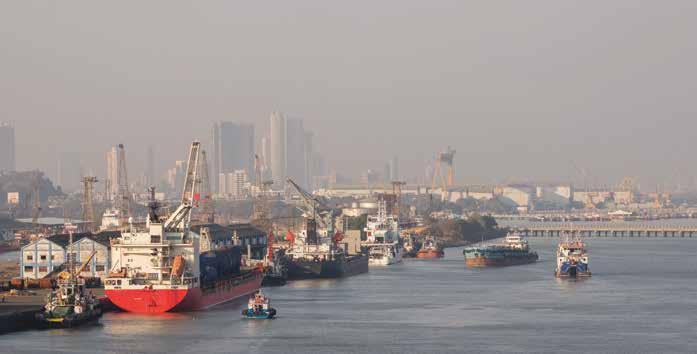
The sanctions that are put into place with the ongoing Russia and Ukraine conflict is something that is applicable to all countries. However, these sanctions do not have a great impact on the present Indian economy.
From Ukraine, the major export to India is sunflower oil, followed by inorganic chemicals, iron and steel, plastics, chemicals, etc. India is Ukraine's largest export destination in the Asia Pacific and the fifth largest overall export destination. Pharmaceuticals account for majority of Indian exports to Ukraine. And it is evident that normal trade relations continue between the two countries.
The increased demand allows all types of energy to co-exist in the region. In light of this is there any tendency among the local suppliers to offer more environmentally friendly fuels? On the shipping side, there is tremendous activity within the Indian government in terms of implementations that have been put into place as well the ones that are in progress. One of the recent implementations that is highly relevant is the e-BDN for all bunker supplies across all Indian ports. Here, the entire data collection is in progress and provides insights on a portal that highlight the different kinds of ships, their buying habits across different ports. It provides enormous transparency for both customers and suppliers.
The Indian government is now considering that coastal ships use ethanol, biofuels and methanol and is in the testing stages. As it does not include foreign ports, it is more likely to be a good alternative where biofuels can be used. This is dependent on the fuel availability in the concerned ports. This pilot project will determine which fuel usage will be implemented and is expected to come into place soon.
There is also the commercial marketing of other alternative fuels, which is then dependent on world trends, approved specifications at an international level and availability, especially for foreign ships taking a specific route. These trial projects will provide more insights into the techno commercial aspects. On reaching an equilibrium, this will then see the light of day.
What is the potential of the India to become a major player in zero/reduced carbon fuels in the future? Do local refineries have infrastructure to produce more environmentally friendly fuels?
India being one of the top five largest global economies, it consumes high amounts of fuel in the automobile sector. Currently, the priority for Indian refineries is to match the demand from road transport due to the large expanse of geographical connections. Additionally, it must service the defense, railways, and industrial requirements.
Another challenge is that some refineries are landlocked or old and can prove to be a problem in transporting fuels for shipping needs. However, there are modifications being made to address these challenges. While refineries are taking care of the need for upper end fuels like petrol, diesel, naphtha, kerosene, and jet fuel, bunker fuel which is a bottom product of the distillation column and therefore its supplies are impacted. However, Indian refiners have been proactive, and any shortfall is being met through imports.
There are a few refineries which are working towards meeting the zero/reduced carbon requirements and in different stages of construction and we will see them becoming operations in about 5 years.
Sketch out the main aspects of the Indian bunker market.
India has a coastline of 7516.6 kms and currently has 26 major and minor ports. As India is poised to be in the top five economies in the world; it is attracting huge traffic in terms of exports and imports. This translates into demand for bunkers. Oil companies and bunker suppliers in India are aware of the potential and geared up to tap the potential irrespective of infrastructural challenges at few ports.
The only factor which acts as a hindrance in achieving its full potential are firstly taxation, where currently 5% GST is being charged which as per current prices is equivalent to US$ 6.00 PMT. This makes the bunker prices costlier as compared to major bunkering hubs of Singapore and Fujairah. Secondly, inadequate bunker fuel storage at few ports leads to added logistics costs in terms of truck transportation from refinery / oil terminal.
Sri Lanka has its known bottleneck on infrastructure and import of bunker fuels which makes it costlier as compared to India, Singapore, and Fujairah. However, the Sri Lankan government is aware to these and are working to ensure that full potential of the island nation is tapped.
India as a nation is the most preferred trade nation in the world. With recent “Make in India” and Production-linked Incentive Scheme (PLI) scheme of Government of India, it is attracting huge FDI in several sectors and the country has already started to see the benefits of the same, which then translates into an increase in ship calls and increase in bunker volumes. With other countries also adopting the strategy of “China plus One”, India seems to be the biggest beneficiary of the same. These policy packages are attracting foreign investors who are willing to relocate or diversify their manufacturing activities in India, and by doing so improve Indian domestic manufacturing capability. All these measures will boost the Indian shipping and ports business and lead to increase in demand for bunker fuels.
In terms of meeting demand for an increasingly wide range of fuels, are LNG bunkering facilities available anywhere?
LNG facilities are available on west coast of India. LNG supplies by truck is currently possible at the ports of Cochin and Hazira.
How was your company coping with the new challenges in the market and what are your plans in the near future? Axiom Global team has over two decades experience working in the Indian space and have mastered the art despite the bottlenecks and challenges. The company works in close liaison with oil companies and logistics service providers at ground level and strives to offer the best and timely services to customers. As a result, it has emerged as market leaders. Axiom Global works closely working with oil companies to provide alternate bunker fuels like LNG, biodiesel, and methanol as soon as there is clarity on the regulatory framework.
Axiom Global works hand in hand with customers and track and analyzes their ships and other requirements. This leads to ties with refineries, especially the ones that specialize in catering to the LNG bunkers and the onward transportation via trucks and pipelines. It evaluates the commercial feasibility of supplying LNG as bunkers in India apart from other fuels. This is done for both the techno commercial as well as operations feasibility. If required, the company will strengthen its logistics to meet any demand.
Axiom Global has also received the Quality Management System standard ISO: 9001: 2015 Certification which covers Trading of Marine Fuel and related products. The process was managed and completed by DNV, the maritime industry and a world leading certification body. This achievement has helped the company build higher trust levels and demonstrates the commitment the company has to quality management policies. It also ensures that the organisation continues its efforts to stay up to speed with the changing industry trends and is focused on continuing to raise the customer service levels.
Abunker market requirement is that bunkers be as inexpensive as possible to power a ship safely and effectively. Residual petroleum-based fuels –essentially, the residue left after distilling –historically met this requirement well.
1997’s MARPOL Annex VI added the requirement that bunkers can’t just be affordable – they must be environmentally compliant. That wasn’t a great challenge for residuals until January 1, 2020’s requirement of worldwide bunker sulphur content (unless scrubbed) 0.5% outside of Emission Control Areas (ECAs, 0.1% required January 1, 2019).
The IMO July 2023 presents the industry with the further compliance challenge for fuel which used with new engine and related technologies leads reduction of overall greenhouse gas (GHG) international shipping admissions by at least 20% by 2030 and 70% by 2040 compared to 2008.
Fuels made by patented processes – first responding to 2020 0.5% sulphur content maximum, now, for lower GHG (principally, CO2) emissions – have emerged as one answer to the bunkering market’s requirement for relatively inexpensive, compliant fuels. There have been an increasing number of patents filed since 2018, when the IMO announced 2020’s 0.5% limit, and since, as the market must respond to lower GHG requirements, frequently these are met by some type of biofuel blend with petroleum-based fuels.
With more patents, though, there is the increasing possibility of claims of patent infringement, and damages. Fuel producers also face the challenge when they make a new petroleum-based, compliant fuel, to determine whether their production infringes a patent. If the fuel doesn’t infringe, producers must decide whether they should patent the fuel themselves, disclosing their production processes or attempt to protect the processes as a trade secret.
The question of whether a fuel infringes a patent is key considering the relative scarcity of 'green' blending components necessary to make lower GHG-emission fuels. The significantly larger nonmaritime market, where price arguably is of less consideration than in the maritime market, will continue demand more green blending components.
The response of bunker traders and suppliers, and their customers thus must be either to move to fuels requiring no green blends (to solely LNG, methanol or ammonia, for example) or to secure contracts with producers offering green blends at a market-acceptable price.
But, if production of that fuel turns out to be infringing a patent, the supply goes away. If the trader, supplier or customer has invested in the infringing production, they could face damages for patent infringement or – more likely – for contributory patent infringement. Under
United States law, for example (35 U.S. Code § 271 – “Infringement of patent”):
(a)
. . . Whoever without authority makes, uses, offers to sell, or sells any patented invention, within the United States or imports into the United States any patented invention during the term of the patent therefor, infringes the patent.
(b)
Whoever actively induces infringement of a patent shall be liable as an infringer.

(c)
Whoever offers to sell or sells within the United States or imports into the United States a component of a patented machine, manufacture, combination or composition, or a material or apparatus for use in practising a patented process, constituting a material part of the invention, knowing the same to be especially made or especially adapted for use in an infringement of such patent, and not a staple article or commodity of commerce suitable for substantial non-infringing use, shall be liable as a contributory infringer.
Along with this, many countries’ legal systems prohibit the importation of patent infringing products. For example, in the U.S., the United States International Trade Commission (19 U.S. Code § 1337 – “Unfair practices in import trade”) investigates patent-infringing imports and enters orders prohibiting them:
(a) Unlawful activities . . .
(1) . . . the following are unlawful, and when found by the Commission to exist shall be dealt with . . .
(B)
The importation into the United States, the sale for importation, or the sale within the United States after importation by the owner, importer, or consignee, of articles [which would include bunkers] that—
(i) infringe a valid and enforceable United States patent . . .
(ii) are made, produced, processed, or mined under, or by means of, a process covered by the claims of a valid and enforceable United States patent.
If there is no intent to load off the bunkers once they arrive in the US or elsewhere, even if they are infringing, there likely is not “importation” of bunkers. Also, under U.S. law (35 US Code § 272 – “Temporary presence in the United States”):
The use of any invention in any vessel . . . of any country which affords similar privileges to vessels . . . of the United States, entering the United States temporarily or accidentally, shall not constitute infringement of any patent if the invention is used exclusively for the needs of the vessel . . . and is not offered for sale or sold in or used for the manufacture of anything to be sold in or exported from the United States.
But there still might be “use” of the infringing bunkers - even if they are simply being held aboard an arriving ship with an entry that is not “temporary.” Of course, too, bunkers are also “used” for things “exported.”
It is not a too remote possibility that, a patent holder might attempt at least to threaten a bunker trader or supplier’s customer using supposedly infringing fuel, with infringement or contributory
infringement claims. A trader buying from a seller of such fuel could be held liable for contributory or direct infringement, as could a bunker seller. Whether the buyer, or seller, knows that the product is infringing isn’t a defence to liability, it only is a defence to the amount of damages ( that is, whether the infringement was intentional).
The first (and still, after three years, ongoing) bunker patent infringement case is Magema Technology LLC v. Phillips 66 –No. 4:20-cv-02444 - United States District Court, Southern District of Texas, Houston.
Around the IMO’s 2018 announcement of the 2020 .5% sulphur limitations, two US inventors applied for, and the U.S. Patent and Trademark Office issued to them, several patents for producing .5% sulphur content petroleum-based bunkers. The main patent was US Patent No. 10,308,884, which describes a process for reducing the sulphur content of ISO 8217-compliant feedstock heavy marine fuel oil. The patented process – to make .5% compliant fuel - involves mixing the feedstock oil with an activating gas mixture, contacting the mixture with a catalyst, and then separating the liquid components from the gaseous and by-product hydrocarbon components.
Once they obtained the patents, the inventors approached Philipps 66. Here the patent infringement suit begins. The inventors claim that Philipps 66 once learning about the patent (patents must be sufficiently detailed, for a reader with capability to duplicate the patented good or process) used the process to make 0.5% fuel. Philipps 66 insisted, among other things, that it never infringed the patents and that there was nothing novel or patentable about the processes it used to make the fuel.
The inventors filed suit in 20201 – and Phillips 66 denied the complaint and counterclaimed to, essentially, cancel the patent and extensive (and expensive ) litigation followed – with thousands of detailed exhibits and presentations and several industry experts on both sides.
Three years later, in July 2023, after a sevenday trial, the jury – 12 people, mostly with non-technical backgrounds – entered a verdict that Phillips 66 had not infringed the patents. The inventors, in the first part of August 2023, moved for a new trial arguing that:
At the start of trial, the question of whether the [Philipps 66] Bayway refinery infringed Claims 1 and 5 of the ’884 Patent rested almost entirely on the resolution of a single disputed claim limitation—the flash point prior to hydro processing. With the merits overwhelmingly stacked against them, Defendants Phillips 66 and Phillips 66 Company (collectively “Defendants” or “Phillips”) deployed a deliberate trial strategy to mislead, confuse, and distract the jury from the actual issue in dispute.
As of this writing, Phillips 66’s opposition, which surely will argue that the trial and decision was sound, is to be filed and the inventors’ reply to follow. Then after the judge’s decision its likely, that much of the case will continue to the appellate court ( the United States Court of Appeals for the Federal Circuit, a court, unlike the District Court, which has special jurisdiction to hear patent cases). The infringement case isn’t likely to be finally decided until late 2024, or later.
The case is significant because it is the first case to test the scope of patents for bunker refining, distilling and blending processes. The final case outcome, and those of others like it could have a significant impact on the bunker industry, and its customers, including, restricting the use of arguably patented bunker production, and facing bunker traders, suppliers and customers with infringement claims.
Specifically, one must ask, what if the inventors ultimately succeed? Will they enforce their patent against others buying or selling product arguably within their patent? And, if one is buying from Phillips 66 ( or another supplier who might be using a process arguably like the patent in litigation), if the product now – with the jury’s verdict – one to confidently buy? What if the appellate court reverses and there is an infringement finding?
To understand the range of patented bunkers, both for the purpose of meeting sulphur content requirements and the newer “green” GHG requirements, here are a few of the increasing number of current examples:
Korean Patent KR20210148398A (with U.S. and other related international patent applications): Process to cut crude oil feed into multiple pieces to make 0.5% compliant fuel, including so that vessels also can burn the fuel generate or sell electricity to the onshore grid, offsetting fuel costs.
US10443006B1 (assigned to ExxonMobil)
- Low sulphur marine fuel compositions. This patent describes a method for producing low sulphur marine fuel by blending a hydro treated heavy atmospheric gas oil with a distillate fuel oil. The resulting fuel has a sulphur content of 0.5 wt% or less.
US20150353851A1 (assigned to Sunoco)
- Low sulphur marine fuel. This patent describes a method for producing low sulphur marine fuel by blending a residual fuel oil with a distillate fuel oil.
European Patent EP2947135A1 (assigned to Shell)- Fuel compositions. This patent describes a method for producing low sulphur marine fuel by blending a hydroprocessed residual fuel oil with a distillate fuel oil. The resulting fuel has a sulphur content of 0.1 wt% or less.
US9758738B2 (assigned to Permanante Corp.) - Green renewable liquid fuel. This patent describes a method for producing a liquid biofuel from a variety of biomass feedstocks. The method involves converting the biomass feedstock into a liquid fuel using a process called pyrolysis.
US11390819B2 (assigned to ExxonMobil)
- Marine diesel fuel/fuel blending component compositions having high naphthenes to aromatics volume; reduced or minimised carbon intensity relative to fuels derived from conventional sources.
Significantly, the assignees of most of these patents, and many others for “green” bunker products, are well known producers and suppliers with significant resources including, to enforce their patents by infringement lawsuits. In the US there are also investors who invest in patent infringement suits where inventors cannot themselves fund the suits.
Consequently, bunker traders, sellers and buyers should take a few basic steps to avoid infringement claims for bunkers that are blended or processed, which again, are almost always going to be petroleum products undergoing additional distilling processes and/or blended with “green” or other feedstock.
First, sales terms or requests for quote should insist that there are warranties of non-infringement.
Second, it’s not enough to stop at confirmation that the bunkers are some versions of ISO 8217 and MARPOL Annex VI Regulations 14 and 18 compliant, and that, the bunkers are capable of being used to achieve the required GHG emissions. Traders, buyers and suppliers should inquire about the bunkers’ source and how they were produced.
The bunkers might be marketed as a patented product – for example, sourced from a 'major' like the patent assignees ExxonMobil, Shell or Sunoco with the patents, above. That is assurance that the product is not going to be infringing ( and draw a contributory infringement claim) and is some assurance of quality and compatibility; the producer likely with its product will have guidelines about use and characteristics.
The very recent problems – June 2023 – with bunkers apparently blended, sourced in Houston, further underline the importance of knowing the provenance of blended bunkers, and particularly so for bunkers where the sellers claim that their product is a green one that will enable GHG emission compliance.
It may be that the producer claims that the production process is proprietary. If so, there can be a non-disclosure agreement, but, if the producer refuses to (or claims it can’t) disclose how the product was made, then, the buyer should consider whether to refuse the product even if the producer has warranted non-infringement. A further reason for this is compatibility of the product with previously loaded product: even if conscious efforts are made not to co-mingle, there still may be a meeting of products in ships’ fuel systems, and a meeting of incompatible bunkers can cause problems.
Then, knowing something about the product, a buyer, or seller, can do a quick patent search to see if there’s possible infringement. The key concept to apply is something called 'claim construction'.
Claim construction is the process by which a court or other tribunal determines the scope and meaning of a patent's claims. In the US, claim construction is a matter of law that a court, not the jury decides.
The claims of a patent are the numbered paragraphs that define the invention that is being patented. The claims are the most important part of a patent because they define the scope of the patentee's exclusive rights.
The process of claim construction begins with a court reviewing the patent's intrinsic evidence. The intrinsic evidence includes the patent claims, specification, and prosecution history. The specification is the part of the patent that describes the invention in detail. The prosecution history is the record of the patent application process, including the communications between the patent applicant and the patent-issuing authority ( in the US, the US Patent and Trademark Office (USPTO)).
In a patent infringement suit, after reviewing the intrinsic evidence, the court will then consider any extrinsic evidence that is relevant to the meaning of the claims. Extrinsic evidence is any evidence external to the patent, such as expert testimony or dictionary definitions.
The court's goal in claim construction is to determine the meaning of the claims that would be understood by a person of ordinary skill in the art at the time the patent was filed. This is known as the "intrinsic meaning" of the claims.
The court's interpretation of the claims will then be used to determine whether the accused infringer's product or process infringes the patent. If the accused infringer's product or process falls within the scope of the claims, then it will be found to infringe the patent.
Claim construction is an important part of patent infringement litigation because it determines the scope of the patentee's exclusive rights – and – the likelihood of whether a patent holder successfully may sue for infringement.
Knowing the basics of claim construction, a bunker buyer or seller can have a basic idea of whether a product – which usually will

be a blend or similar product not subject to a patent, is potentially infringing. Google Patents, online, is a quick way to search for patents which might cover the product.
As the marine industry moves towards 2050, bunker sellers, traders and buyers face growing requirements. The requirement of using and trading in noninfringing bunker product, could be said to be an 'emission' of the push to 'get to zero'.
Bunker traders and suppliers can be certain, though, that the requirement of selling the least expensive bunkers that will safely and effectively power a ship will continue to be a central consideration of an effective sale, rather than being close to net zero. Understanding the patent implications of selling and buying those bunkers, however, may help to stay at zero liability for any patent infringement claim.

Technology group ABB has unveiled what it describes as a “revolutionary propulsion concept to significantly increase ship efficiency”. According to ABB the “industry-first” electric propulsion concept ABB Dynafin mimics the movements of a whale's tail for ultimate efficiency, enabling new vessel designs.
ABB says that an independent study by OSK Shiptech confirms its new technology is set to reduce propulsion energy consumption by up to 22% compared to a conventional shaftline system. This would deliver significant savings in fuel consumption and help to avoid emissions. As part of an electric propulsion power system, the concept is also fully compatible with zero-emission battery and fuel cell technologies

The innovative concept is the result of over a decade of research, development, and testing. The first prototype is expected to be available in 2025.
The new propulsion concept features a main electric motor that powers a large wheel rotating at a moderate 30-80 rounds per minute. Vertical blades, each controlled by an individual motor and control system, extend from the wheel. The combined motion of the wheel and blades generates propulsion and steering forces simultaneously, enabling groundbreaking operational efficiency and precision for ships. ABB says the concept follows its proven design philosophy in marine propulsion of gearless power transmission.
Initially available in the power range of 1–4 MW per unit, the new propulsion concept is particularly effective for medium-sized and smaller vessels, including ferries for passengers and vehicles, offshore support vessels operating at wind farms, and yachts. ABB adds that, by reducing vibrations and noise levels, the system improves passenger and crew comfort. In addition, the propulsion concept delivers superior manoeuvrability, and positioning performance.
Meanwhile Yara Marine Technologies, Molflow, and academics from Chalmers University of Technology, Halmstad
University, and Gothenburg University have concluded a three-year project aimed at developing an AI-based semi-autonomous system to enable more energy efficient sea voyages.
Initiated in August 2020, the Via Kaizen project explores how AI and machine learning can enable more energy-efficient voyage planning for ship operators. Funded by the Swedish Transport Administration Trafikverket, it utilised preexisting tools to enable a higher degree of digitalisation and automation in vessel operations. These included Yara Marine’s propulsion optimisation system FuelOpt and performance management and vessel data reporting tool Fleet Analytics, as well as Molflow’s vessel modelling system Slipstream. Existing work practices onboard and user needs were analysed during the design process to ensure the technology facilitated processes and decisions with the greatest impact on energy efficiency.
The resulting system was trialled onboard two vessels, a PCTC car carrier operated by UECC and a Rederiet Stenersen product tanker. According to Yara, the wideranging results indicated successful energy efficiency optimisation based on estimated time of arrival (ETA), with one of the two trial vessels opting to continue using the system.
In another development, trials of SulNOxEcoTM Fuel Conditioner undertaken by independent engine emissions monitoring specialist Green Sea Guard B.V. (GSG) onboard the superyacht Yalla have shown reductions in black carbon and particulate matter of over 99%, over a one-year programme.
Co-founder and CEO of Green Sea Guard, Anita Bradshaw, a specialist in emissions analysis, commented on the results of the trials. “We have been involved in assessing many fuel products over the years, however SulNOxEcoTM Fuel Conditioner is truly remarkable as we found a 6,200fold reduction in particulates in our analysis over hundreds of data points,” she said.
She added: “We use state of the art laboratory grade equipment capable of analysing down to the very finest particulate sizes and to give context, the Yalla exhaust data has shown particulates, straight after combustion, reduced to a level three times lower than ambient air in big cities such as London and New York. In addition, our simulation models show a theoretical reduction of fuel consumption of over 5%, just from the full combustion of the particulates.”
'White hydrogen', is emerging as a potential game changer as the world struggles towards Net Zero
In April this year the US Geological Survey (USGS) published a paper that prompted considerable media interest in geological, or 'white', hydrogen. The USGS reported: “A previously overlooked, potential geologic source of energy could increase the renewability and lower the carbon footprint of our nation’s energy portfolio: natural hydrogen.” Since April it has become clear that several companies are now hunting for white hydrogen at numerous locations around the globe.
USGS research geologist Geoffrey Ellis, assisted by Energy Resources Program colleague Sarah Gelman, developed a global resource model. Ellis is quoted in the USGS paper as saying: “Using a conservative range of input values, the model predicts a mean volume of hydrogen that could supply the projected global hydrogen demand for thousands of years.”
Ellis qualified that to some extent, saying: “We have to be very careful in interpreting this number, though. Based on what we know about the distribution of petroleum and other gases in the subsurface, most of this hydrogen is probably inaccessible."
However, the USGS strikes an upbeat note: “The good news is, if even a small fraction of this estimated volume could be recovered, there would likely be enough hydrogen across all the global deposits to last for hundreds of years. Ellis is convinced that the amount of hydrogen in the Earth’s interior could potentially constitute a primary energy resource.”
The paper restates the current issues with hydrogen as a fuel. It says: “Although its primary use as an energy source today is in rocket fuel, hydrogen is expected to play an important role in future energy systems. It may offer a solution for reducing the carbon footprint of processes that cannot easily be electrified, such as longdistance flights and industrial heating. The catch is the vast majority of hydrogen is manufactured using natural gas through a process that consumes energy and releases large amounts of carbon dioxide into the atmosphere.”
Nevertheless, hydrogen is already being seen as marine fuel in some applications. If it is really the case that plentiful and cheap white hydrogen will soon be available this could be a game changer in all sectors, including maritime.

Shipping could pay €8.4 billion a year into EU ETS by 2026
At the current market value of €90 per emissions allowance (EUA) under the EU's Emissions Trading Scheme (ETS), shipping emissions carried a total potential worth of €7.5 billion EU for the year 2022, according to Hecla Emissions Management.
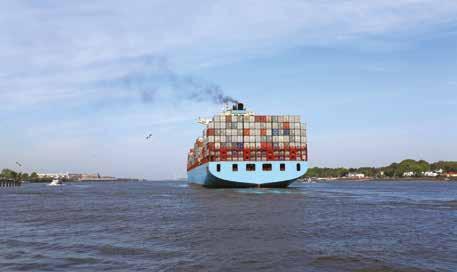
Hecla says: “Taking into account the ETS phase-in period covering 40% of emissions in 2024, 70% in 2025 and 100% in 2026, and utilising the forward curve in EUAs, our estimates indicate that the shipping industry could be liable for €3.1 billion in 2024, €5.7 billion in 2025 and €8.4 billion in 2026.”
The ETS consultancy joint venture between Wilhelmsen Ship Management (WSM) and Affinity Shipping LLP based its estimates on the EU's Monitoring, Reporting and Verification (EU MRV) dataset for shipping’s European CO2 emissions last year.
The EU MRV regulation requires all ships exceeding 5,000 gross tonnage to collect

and report data on CO2 emissions released to and from EU and EEA ports and will serve as the basis for shipping’s inclusion in the ETS from 1 January 2024.
Hecla notes that the EU data highlights notable segment decreases and increases. It says: “The data showed emissions decreases across multiple shipping segments, including tankers, container
ships, general cargo ships, reefers, Ro-Ros and chemical tankers. The container sector showed the largest reduction, falling by 8.95% equating to 2.3 million metric tonnes of CO2 equivalent (tCO2e) saved. However, passenger ships and LNG carriers logged substantial increases. The former scored highest, with a staggering 118% year-onyear rise equating to 2.8 million tCO2e, the latter recording a 63% increase equating to 2.1 million tCO2e.”
Ajoint UK-EU project to develop retrofit carbon capture solutions and other technologies for ships to reduce their emissions and fuel consumption has got underway, according to the University of Strathclyde.
The Green Marine project, led by the Cyprus Marine & Maritime Institute (CMMI), brings together 10 partners from industry and academia from all over Europe and UK, including the University of Strathclyde’s Department of Naval Architecture, Ocean and Marine Engineering, who share the vision of providing the wider maritime community with effective and efficient ways of onboard retrofitting solutions leading to the decarbonisation of the maritime industry. The other partners in the project are Cyprus Marine & Maritime Institute; Smart Material Printing; Wind plus Sonne GmbH; University Polytechnic of Marche; BlueXPRT; SINTEF; PDM; CalMac Ferries Limited; and Carbon Capture Machine.
The project will run until January 2027 with an EU/UK funding of almost €5 million.
The Green Marine team will develop retrofitting protocols and solutions to enable the future of shipping to be energy and fuel efficient, capture the carbon it emits to deacidify our oceans and have closed air circulation systems that are virus free.
To aid the different stakeholders in their decision making, a software tool catalogue will be made that gathers knowledge on these and other solutions.
The project will demonstrate these tools and the innovative solutions onboard Caledonian MacBrayne (CalMac) vessel/s.
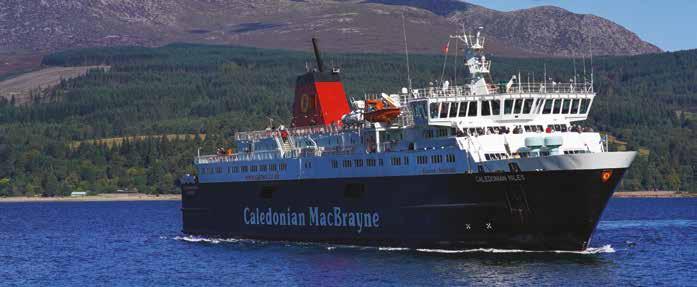
Dr Iraklis Lazakis and Professor Evangelos Boulougouris will lead this effort from Strathclyde, contributing to all technical work packages, especially in the demonstration of retrofitting existing fleets of ships and the exploitation and dissemination activities of the project.
The project objectives are:
• Develop and validate retrofitting protocol tools suitable for adapting engines, flue gas carbon capture and utilisation, and integrated energy saving solutions for ships worldwide.
Develop and validate a software tool containing an up-to-date catalogue of suitable solutions for a wide variety of ship types and operation scenarios.
• Tailor a (nano)particle and virus removal solution suitable for gaseous steams.
• Tailor commercially available gas-gas separating membranes for CO2 and water capture.
• Develop and implement a carbon capture solution based on an alkaline solution with Ca- and Mg from sea water.
Replicate project learnings to all stakeholders.
• Stimulate software tool use and further enrich its data.
• Cooperate with global marine community of ship owners, operators, shipyards and equipment providers.
• Firmly position the retrofitting, software tools as a sustainable solution, offering a realistic and competitive new alternative in the Carbon Capture Utilisation and Storage (CCUS) market.
Dr Lazakis said: “Shipping contributes a small extent to carbon emissions globally therefore if we can develop solutions that can capture these emissions, we can accelerate the climate neutrality of existing fleets.
As part of Green Marine project, the different technologies will be tested and verified onshore first for their marine application and based on the results, a demonstration of the technology will be performed onboard one or more CalMac vessels.
This will take place towards the end of the project including a full process and consultation period with Classification Societies on the feasibility and risk assessment and qualification of the application of these technologies onboard the vessel/s.”

The Egyptian Government and authorities have granted independent marine fuel supplier Peninsula a physical bunker supply licence to operate in Mediterranean ports.
Having been selected by the local authorities as one of the first international companies to be given a licence to function as a bunker supplier back in February 2022, Peninsula says it has commenced operations. The products to be offered are VLSFO, HSFO 3.5% and LSMGO - all according to ISO 8217:2017 specification.
John A Bassadone, CEO of Peninsula said:
“We want to thank all the authorities and especially the Egyptian Government for this opportunity to operate in the Suez Canal. We have been working closely with them for over a year and a half to ensure that we are in a position to build the local bunker market beyond historical levels. Port Said has huge potential for growth, and we feel that our track record and dedication to quality, along with our growing network in the region, will create an attractive proposition.”
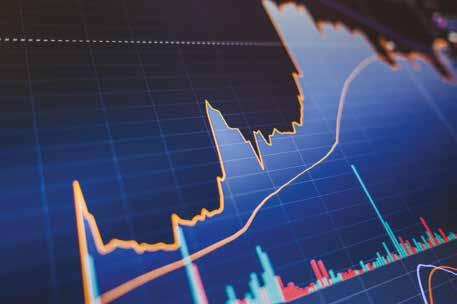
The International Energy Agency (IEA), in its recently published annual medium-term outlook for the oil industry, says it expects bunker demand to grow by only about 0.1 million b/d by 2028. The outlook covers five years ahead and includes the fundamental aspects of the industry, from demand and supply to refining and trade, plus a view on the outlook for Brent crude oil prices.
The IEA forecast seaborne trade to increase by 2-3% p.a. over the next five years.
Commenting on this, bunker trader and fleet manager Integr8 notes: “Ordinarily this would give a strong push on the overall size of our market, up from around 4.4 million b/d this year to around 4.9 million b/d by 2028. However, like everywhere else, we know there is a huge drive towards
greater efficiencies in our industry as part of the commitment towards ‘net zero’. With phases 1 and 2 of the EEDI kicking in during 2015 and 2020, and phase 3 starting in 2025, the shipping fleet is increasingly more efficient. The net result is bunker demand is forecast to rise not by 0.5 million b/d, but by around 0.1 million b/d by 2028. Nonetheless, the size of our market is likely to be relatively stable over the next 5 years (unlike the gasoline market and road diesel markets, which are in decline).”
World Fuel Services to begin bunkering operations in Jamaica. World Fuel Services (WFS) is to set up new bunkering services in Jamaica, working with Scott Petroleum, a major distributor of petroleum products and services throughout the Caribbean.

Monjasa supplies in Singapore. Global marine fuels supplier Monjasa has commenced physical supply operations in the Port of Singapore.
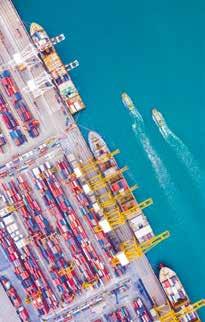
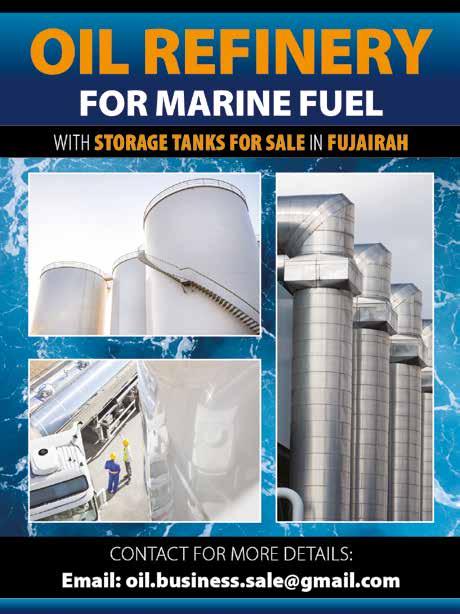
Monjasa says that it is “already a wellestablished trading partner to the Asian shipping community with three offices located in Singapore, Shanghai and Ho Chi Minh City and supplying 1m tonnes of marine fuels across the Asian region yearly”.
A statement adds: “Coming from 15 years as a trading company in Singapore, Monjasa is all set to embrace this new opportunity of controlling tonnage as well.”
Monjasa expects its new Singapore operation to consist of a total of three tankers during 2023.
WFS says: “The creation of a physical supply network for bunker fuel supply in Jamaica, a major bunkering hub in the Caribbean, will combine the experience, expertise, and resources of two industry leaders, providing an unparalleled level of service to World Fuel Services customers in the region. Principal petroleum fuel products available will include high-quality straightrun VLSFO 0.5%, LSMGO 0.1%, and HFO 2% produced by the Petrojam refinery in Kingston.”
IBIA notes in a recent statement that the accelerating pace of the energy transition in shipping makes it essential that the industry provides support to the people who are part of this journey.
Training remains a key priority for IBIA as we move into a greener and more sustainable future addressing the needs of future manpower training and the futureproofing of the existing workforce.
To further the cause of a skilled and competent bunker workforce IBIA and GREEN MARINE have signed a cooperation agreement to develop a methanol bunkering training programme, with support from the Methanol Institute.
The cooperation agreement aims to provide for existing and future crew operating on bunker tankers and bunker surveyors to ensure they are competent and ready for methanol bunkering on a larger scale. The plan is to commence the training in Singapore first and expanding globally in 2024.
In the first instance, IBIA and GREEN MARINE have worked together with the crew from the supplying tanker and the bunker surveyors involved in the methanol bunkering pilot in Singapore, identifying and plugging the training gaps and competency needs prior to the pilot.
“IBIA's strategic focus on training is driven by the impending transformative changes in the maritime industry, especially concerning alternative fuel options for achieving environmental targets by 2030 and 2050. We are committed to equipping our members with essential knowledge and skills to navigate this evolving landscape successfully. Our exciting partnership with GREEN MARINE allows us to expand bunker-related courses, enriching educational opportunities. We are grateful for the Methanol Institute's endorsement, which reinforces the importance of our training initiative and the dedication of industry leaders to a wellprepared maritime workforce. Through strategic training and partnerships, IBIA strives to steer the maritime community towards a greener and more sustainable
future, fostering a cleaner, responsible, and resilient shipping industry,’’ said Timothy Cosulich, Chair of IBIA.
“GREEN MARINE’s methanol training curriculum is based on practical knowledge gathered over a decade of experience working on methanol dual fuel vessels. Our methanol specialists are captains and chief engineers with first-hand knowledge of working with and the safe handling of methanol as marine fuel. Their experience includes services from methanol system design integration consultancy to newbuilding construction supervision, technical management, and operations. Our methanol training curriculum is supplementing baseline regulatory training requirements with practical, experiencebased learning,” said Morten Jacobsen, CEO of GREEN MARINE.
“We applaud GREEN MARINE’s ongoing efforts to support the development of methanol as a marine fuel, now together with IBIA, effectively creating the ‘gold standard’ for safe handling and bunkering. These are still early days for alternative
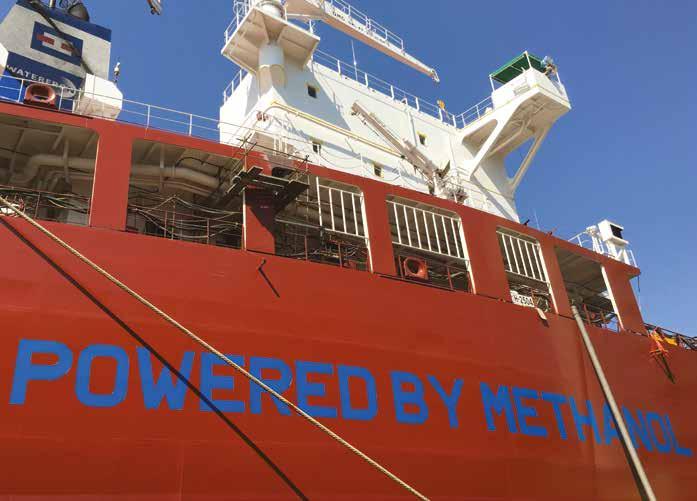
fuels, making it a necessity to collaborate on fundamental elements for their safe and efficient integration with the maritime supply chain, bunkering and on-board handling. Such partnerships allow us as an industry to go further, faster, as we transition to a lower emissions environment,” said Chris Chatterton, Chief Operating Officer, the Methanol Institute.
Methanol conversions
Technology group Wärtsilä has been contracted by Swedish ferry operator Stena Line to carry out and convert some of its vessels to operate with methanol fuel. The conversions will include the fuel supply system and engine modifications, as well as integrating the new installations with the ships’ existing systems. The contracts were booked as order intake by Wärtsilä in June 2023 and the conversions are scheduled to take place in 2025.
Converting ferries for methanol fuel will enable them to be compliant with various existing and upcoming regulations, including the Carbon Intensity Indicator (CII), FuelEU Maritime, and IMO 2050 GHG reduction target.
"As we continue to implement our strategy to decarbonise all our operations, we see methanol as a viable alternative fuel that will help us achieve this ambition. Wärtsilä has proven its capabilities to carry out the necessary conversions. This was shown eight years ago when they converted the Stena Germanica to operate with methanol, and our experience from this ground-breaking innovation has been very positive," said Ian Hampton of Stena Line.
"We have had close cooperation with Stena Line for many years and we are pleased to be supporting them again in this important conversion project. Like Stena Line, Wärtsilä is committed to making decarbonised shipping operations a reality, and we have invested heavily in developing our engine portfolio to be capable of utilising carbon neutral and zero carbon fuels," commented Roger Holm, President of Wärtsilä’s Marine Power business.
The full scope of Wärtsilä’s supply package will include fuel tank instrumentation and valves, transfer pumps, low pressure pump

skid, fuel valve trains, methanol fuel pump units and the automation of the system, engine conversions, and automation upgrade for the engine control room.
Major container line AP Moller - Maersk (Maersk) has ordered six mid-sized container vessels with dual-fuel engines and able to operate on green methanol.
Yangzijiang Shipbuilding Group will build the six 9,000 TEU vessels for delivery in 2026 and 2027. The shipowner now has 25 methanol-enabled vessels on order with the first due for imminent delivery as World Bunkering went to press. The global order book for methanol-enabled vessels has passed the 100 mark.
“With this order, we take another step in the green transformation of our fleet and towards our target of becoming net-zero in 2040. As with all our other vessel orders for the last two years, these ships will be able to run on green methanol,” says Rabab Boulos, Chief Infrastructure Officer at Maersk.
Analysis from SEA-LNG, a coalition established to demonstrate the commercial and environmental benefits of the LNG pathway, shows the lifetime fuel costs of meeting key European decarbonisation targets for shipping through the LNG pathway are expected to be roughly half that of the methanol or ammonia pathways.

Building on recent work by the Mærsk Mc-Kinney Møller Center for Zero Carbon Shipping (MMMCZCS) projecting fuel costs for alternative marine fuels out to 2050 and using long-term price benchmarks for ammonia, methanol and LNG as a marine fuel, SEA-LNG has calculated the cost of compliance with FuelEU Maritime regulations for a typical 14k TEU newbuild container vessel coming into operation in 2025.
FuelEU Maritime requires vessels to reduce the intensity of greenhouse gases (GHG) produced by their energy consumption in coming years against a benchmark of the fleetwide average in 2020.
SEA-LNG argues that grey versions of ammonia and methanol start at a significant disadvantage to LNG. The additional GHG emissions involved in producing ammonia and methanol from natural gas means that respectively these grey fuels emit 47% and 14% more GHG emissions than VLSFO on a well-to-wake
basis. Fossil, or grey LNG, offers up to 23% immediate GHG emission reductions compared to VLSFO on a well-to-wake lifecycle basis.
“What this means,” SEA LNG argues, “is that owners opting for LNG-fuelled vessels will be able to meet the reduction targets until 2039 without needing to blend their fuel with low-carbon bio-LNG or renewable synthetic e-LNG. By contrast, owners of methanol and ammonia fuelled vessels will need to include significant proportions of a green fuel immediately to meet the regulations, vastly inflating their fuel bills.”
Assuming an average fuel burn for the typical 14k TEU newbuild container vessel of 146 tonnes of VLSFO equivalent per day (as per Figure 2), a methanol-powered vessel would require a 14% green fuel blend to comply with FuelEU Maritime in 2025 at a fuel cost of almost US$ 55 million per year, assuming the use of biomethanol. An ammonia powered vessel, if such a thing existed, would require a 33% green fuel blend to comply and face a fuel bill of about US$ 80 million per year if using e-ammonia. LNG by contrast would require no blending with a fuel bill of just over US$ 20 million per year.
By 2040, LNG would require a 14% green fuel blend and annual fuel costs are expected to reach around US$25 million, assuming the use of bio-LNG.
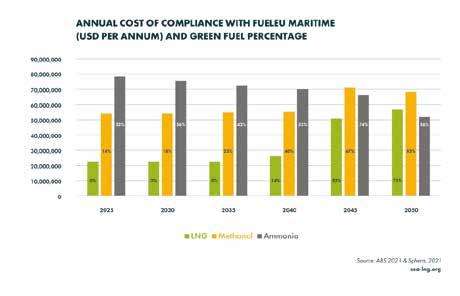
Methanol’s green fuel blend requirement will have increased to 40%, resulting in an annual fuel bill of just over US$ 55 million assuming the use of biomethanol - the effects of the increased volume of biomethanol required offset by the falling costs of the green fuel. For ammonia the blend ratio will have increased to 53% with a blended fuel cost of approximately US$70 million – the effects of the increased volume of e-ammonia required more than offset by the falling costs of the e-fuel. By 2050, SEA-LNG analysis shows that all three fuel options will have significant blends of green fuels in the form of bio- and e-fuels and we expect to see a convergence in overall fuel costs.
In summary, this simple analysis shows (as illustrated in Table 1, above) that the LNG pathway to compliance with FuelEU Maritime offers massively lower fuel costs than both the methanol and ammonia pathways, particularly in the first 15 years of the vessel’s life – a period critical for vessel financing decisions. The methanol pathway is approximately 2.5 times more expensive and the ammonia pathway 3.5 times more expensive.

Similar analysis can be undertaken for other sectors and while the absolute numbers will be different the cost ratios for the different pathways will be similar.
Commenting on the analysis, SEA-LNG COO Steve Esau said: “Our analysis shows that lifetime fuel costs of achieving net-zero emissions through the LNG pathway are expected to be roughly half that of those for methanol and ammonia. This underlines the importance of understanding the implications of the journey to net zero as well as the destination. LNG offers GHG reductions today and a low cost, incremental solution for decarbonisation.”
SEA-LNG says it is currently developing a cost of compliance calculator that will enable ship owners, investors, charterers, and operators to explore the commercial implications of different fuel choices in complying with EU and IMO regulations.
LNG bunker vessel Independent supplier of “clean fuels” Titan, has signed a long-term time charter agreement with the Italian maritime transportation group, Fratelli Cosulich for the new 8,200 cubic metre capacity LNG bunker vessel, Alice Cosulich.
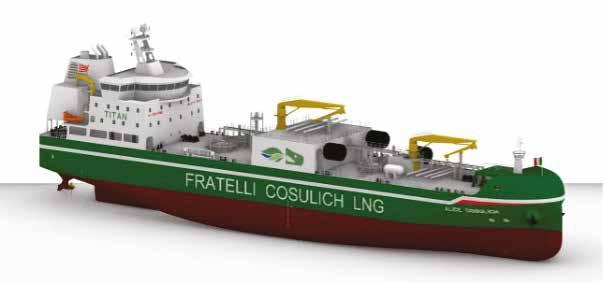
The Alice Cosulich will join Titan's fleet in the fourth quarter of this year and will operate in Europe. The modern vessel has an LNG and liquefied biomethane (LBM) bunkering capacity of 8,200 m3, as well as smaller parcels of biodiesel going forward.
Michael Schaap, Commercial Director Marine at Titan commented: “This longterm agreement allows the companies to collaborate closely as the Alice
Cosulich will further enhance our LNG and LBM bunkering capabilities in the fast-growing European market. We like the design consideration of the vessel as we deem it fit and compatible with a lot of our current and future customer vessels.”
“Our comprehensive LNG supply infrastructure allows the shipping industry to start delivering on decarbonisation now. Both LNG and LBM are available today and enable ship operators to reduce emissions straight away. We believe in a multi-fuel future, and - thanks to our team’s specialist expertise - we will supply other clean fuels when they become feasible.”
Timothy Cosulich, CEO of Fratelli Cosulich Group added: “I congratulate Titan on effectively adding our Alice Cosulich to their growing fleet of LNG bunker vessels. As Titan continues to lead the way and establish new benchmarks in the maritime fuel industry, we are proud to be a part of their journey and enthusiastic about this cooperation.”
The risks of using ammonia as a fuel can only be mitigated if effective technical and operational safeguards are implemented, a new study finds

Ajoint study into ammonia safety onboard ships undertaken by the Lloyd’s Register (LR) Maritime Decarbonisation Hub and the Mærsk Mc-Kinney Møller Center for Zero Carbon Shipping (MMMCZCS), has found that a range of mitigation methods, from ship design to crew training and operations, are required to keep toxicity risks to crew within published tolerable limits.
Recommendations for Design and Operation of Ammonia-Fuelled Vessels based on Multidisciplinary Risk Analysis is described as the most comprehensive study to date of the effectiveness of risk mitigation measures in three ammonia-fuelled vessels – a container ship, a tanker and a bulk carrier.
The report notes that, seen as one of the most promising alternative fuels for the maritime energy transition, ammonia can be combusted with almost no carbon dioxide (CO2) emissions. However, it cautions, using ammonia as a shipping fuel can create potential safety hazards, including toxicity. It is crucial for shipping’s stakeholders to understand the risks of ammonia as a shipping fuel and the safeguards that can be implemented to reduce them to tolerable levels.
Using Quantitative Risk Assessment (QRA) analysis, a powerful data-driven method that allows users to assess risk in a quantitative and granular manner, the joint study has been able to identify vessel design and operational measures that would reduce ammonia risks to a tolerable level.
The QRA provides recommendations for design and operation of ammonia-fuelled vessels to embed higher levels of safety for crew. Recommendations included lower storage temperatures to reduce safety risk; provision for two or more separate spaces containing different groups of equipment that could leak ammonia; monitoring and minimising of access to and length of time spent in spaces containing ammonia equipment; ventilation outlets from spaces containing ammonia equipment placed in a safe location, adequately separated from areas accessed by crew; and installation of multiple sensors of different types to detect ammonia leaks.
To complement the QRA, a second section of the report summarises insights from an analysis of human factors, considerations that will be impacted by a transition to ammonia fuel use. These include competence and training needed to improve safety on ammonia-fuelled vessels; safe work practices and standard procedures that need to be implemented through systematic change management programmes; and effective occupational health safeguards, such as personal protective equipment (PPE).
Dr. Andy Franks, Senior Decarbonisation Risk Specialist, LR Maritime Decarbonisation Hub, said: “The global energy transition drives a move from fossil fuels to alternative energy sources, which inevitably brings about new safety challenges and the need for shipping to manage more complex hazards. Our
approach to understanding and mitigating the risks of ammonia as a shipping fuel incorporates both a quantitative datadriven approach to ship design as well as a human factors approach to address crew safety. Through these two approaches we provide practical insights that will support the industry in managing safety risks to crew within published tolerable limits.”
Claus Winter Graugaard, Chief Technology Officer, Onboard Vessel Solutions, Mærsk Mc-Kinney Møller Center for Zero Carbon Shipping, said: "To enable sustainable and scalable new energy pathways such as ammonia as a marine fuel, we must advance technological developments. However, in the eagerness to transform, we must do so without compromising safety and reliability, by employing a strong risk-based change management approach. Care of our seafarers and strong safety management are imperative. This study has given us deep insights into risk and will provide critical understanding and intelligence to help guide the industry towards safe application of ammonia as a marine fuel.”
The two decarbonisation centres have been involved in several ammonia projects. LR is undertaking key feasibility studies into using clean ammonia to refuel ships at the worldscale ports in the Pilbara region of Western Australia. The MMMZCS and its partners are jointly conducting a feasibility study to establish a supply chain for the provision of green ammonia ship-to-ship bunkering at the Port of Singapore.

Swiss marine power company WinGD has entered into a collaboration agreement with ship owner and operator AET and maritime academy Akademi Laut Malaysia (ALAM), both part of Malaysia-based MISC Group, to develop technology and training for ammonia engines.
The agreement will see the partners work towards the potential introduction of X-DF-A ammonia-fuelled engines on vessels which would be among the first ammonia dual-fuelled tankers in the world. The project timeframe is in line with WinGD’s previously announced roadmap, bringing the first engines for Suezmax or Aframax tankers into service from 2025.
Zahid Osman, President & CEO, AET said: “I am pleased that we were able to formalise the collaboration with WinGD to develop the required ammonia engines and training materials that will help seafarers to safely manage the new generation of zero emission vessels. The outcomes of this collaboration will support AET and MISC Group to deliver on our commitment to deliver more energy with lower emission.”
WinGD will develop a crew training syllabus and support its implementation, preparing some of the first seafarers in the world on ammonia-fuelled vessels to handle the new fuel and engines with confidence. The arrangement will provide the opportunity for ALAM to train its seafarers and supervisors on the operation, maintenance, monitoring, repair and health and safety procedures specific to the new engines.
Rudolph Holtbecker, Director Operations
WinGD said: “This cooperation between engine designer, shipowner and training institution marks a powerful push towards realising the potential of ammonia as a maritime fuel. As well as preparing our engines for integration within a key vessel type, the training developed under this project will also feed into the knowledge pool needed for operators and their crews to confidently, safely and efficiently operate these new fuelled vessels.”
Ammonia release mitigation system approved Technology group Wärtsilä’s new Wärtsilä Ammonia Release Mitigation Systems (WARMS) has received approval in principle from classification society DNV. The approval in principle covers its use on ships fuelled by ammonia with the DNV Class notation gas fuelled ammonia or on gas tankers fuelled by ammonia with the DNV Class notation GF NH3
The system mitigates the risks associated with future fuels, such as ammonia, which can be hazardous to both health and the environment unless handled and stored with great care. With WARMS, typical emissions comprise nitrogen (N) and water (H2O), with ammonia (NH3) emissions less than 30 ppm. However, Wärtsilä says, “in most cases NH3 emissions are close to 0 ppm.”
“Ammonia can be an important part of the future maritime fuel mix, but we need to ensure that with every step forward, safety is at the top of our list of considerations. That is why DNV is so pleased to be able to award this AiP to Wärtsilä for their innovative new Ammonia Release Mitigation Systems (WARMS). With the Gas
Fuelled Ammonia notation, we set out to offer a practical path for realising ammonia as a zero-carbon fuel option. And we are delighted that Wärtsilä is working with us to demonstrate to their customers that this solution is being developed in line with the most technically advanced rule set in the maritime industry,” says DNV – Dalibor Bukarica, Head of Section, Piping Systems & Alternative Fuels at DNV.
In announcing the launch of WARMS, Ole Fjeld, Product Line Manager, Inert Gas Systems Offshore, Wärtsilä Gas Solutions said: “We can assume that regulations will become even more stringent as ‘best available technologies’ are developed to enable the global acceptance of future fuels. WARMS is designed to comply with both existing and anticipated legislation and is an important element within Wärtsilä’s decarbonisation journey.”
WARMS is designed for accurate and continuous monitoring of emissions. It features staged and controlled combustion, minimal energy consumption and waste, and a compact footprint. WARMS offers a green and safe alternative to venting pure ammonia, diluting it with air, or bubbling it in hazardous dirty water tanks.
Among numerous reports of biofuel bunkering stems around the globe, Banle Energy has carried out its first such operation in Hong Kong. The CBL International subsidiary partnered with ASB Biodiesel (Hong Kong) Seven Seas Oil (Hong Kong) to deliver its first B24 biofuel stem in early July. Inspection and testing company Saybolt monitored the process to ensure both quality and quantity.
A Banle Energy statement said: “In line with our direction focusing on ESG, we are committed to promote biofuel, an ESG related product, in an effort to reduce GHG emissions.”
The company's Chief Executive Officer and Chairman, Teck Lim Chia said: “B24 biofuel bunkering operation in Hong Kong is a significant step forward for our contribution of environmental sustainability and for the shipping industry's efforts to reduce carbon emissions. This sets the stage for the Hong Kong bunkering industry to use biofuels to play its part for decarbonisation.”
Meanwhile shortsea ro-ro specialist United European Car Carriers (UECC) has completed the delivery of “sustainable biofuel” in the port of Vlissingen, in
collaboration with Dutch biofuel provider GoodFuels and vessel owner NYK. This was the first time a UECC time-chartered vessel, the Emerald Leader, has been bunkered with biofuel.
UECC says: “The successful biofuel bunkering operation was made possible through the close partnership between UECC, GoodFuels, and NYK.”
GoodFuels’ biofuel is said to reduce CO2 emissions by up to 90% compared to conventional fossil fuels and is sourced from renewable and sustainable feedstocks that are certified as 100% waste or residue. These sources do not compete with food production or cause deforestation.
"This momentous delivery of nextgeneration biofuel represents another significant step forward in our sustainability journey," said Mr. Daniel Gent, Energy and Sustainability Manager for UECC.
"We are proud to partner with GoodFuels and NYK to bring this innovative and environmentally friendly solution to our customers. By bunkering biofuel for the first time on a UECC time-chartered vessel, we demonstrate our unwavering commitment to reducing our carbon footprint and providing cleaner transportation options."
The utilisation of advanced sustainable biofuel on the Emerald Leader, which operates on UECC's North South Trade, connecting the Eastern Mediterranean with Northern Europe, is expected to significantly reduce the carbon intensity of UECC's operations.
In another 'first', ExxonMobil successfully completed a commercial marine biofuel oil bunkering in the port of Singapore in April 2023. Evergreen Line’s vessel, The Ever Ulysses, received ExxonMobil’s marine biofuel oil blend via a ship-to-ship transfer in Singapore waters before heading to the discharge port.
The biofuel used was a combination of a conventional 0.50% sulphur fuel with up to 25% waste-based fatty acid methyl esters (FAME). The resulting blend meets ISO 8217:2017,1 apart from FAME content, which complies with EN 14214.2 ExxonMobil is already supplying marine biofuel oil in the Amsterdam-RotterdamAntwerp (ARA) region and Singapore, supporting the marine industry’s commitment to reducing GHG emissions.
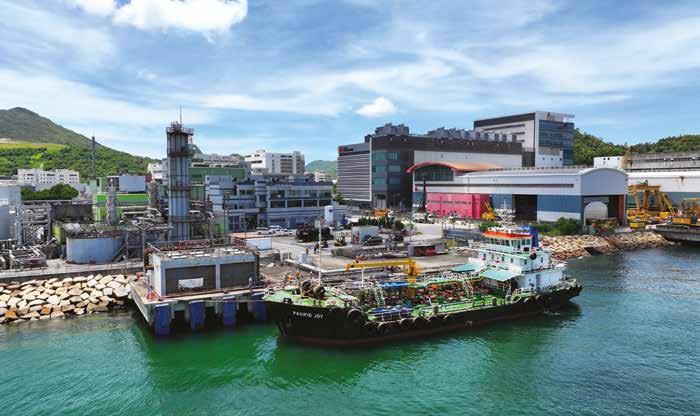
Eergy storage systems provider Corvus Energy's BOB (Battery-On-Board) system has received Type Approval from DNV. Corvus says its BOB is a standardised, plugand-play battery room solution available in 10-foot and 20-foot ISO high-cube container sizes and is designed for easy integration with existing ship systems.
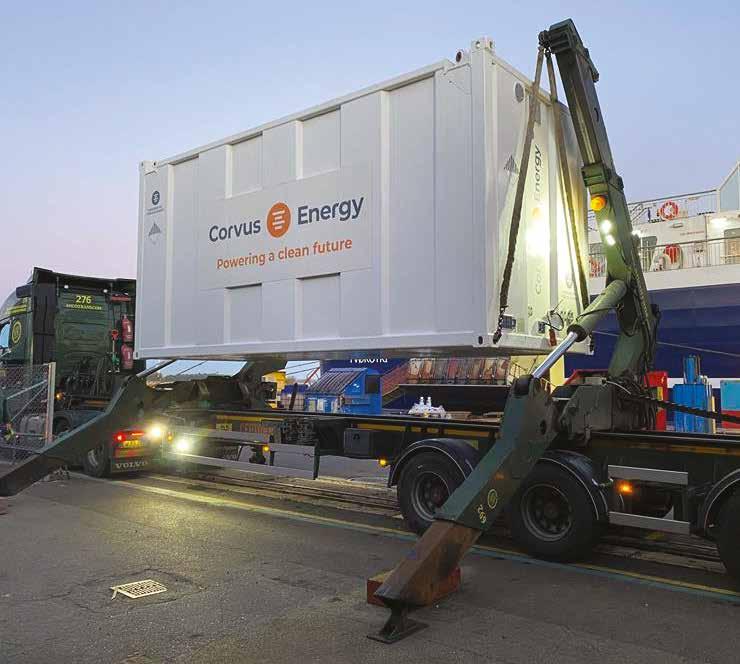
The A60 battery room container comes with batteries, a battery management system (BMS), HVAC, Thermal Runaway Exhaust, in addition to firefighting and detection systems.
According to Corvus, BOB provides a safe, compact, and space-efficient solution for housing batteries on board a ship, either on deck or below deck.
Multiple containers can be combined to create larger energy storage capacities, providing scalability based on the ship's energy requirements. It also integrates with all power management systems. Corvus says that this flexibility makes it easier to adapt the system to different ship sizes and power demands.
The standard shipping container dimensions are intended to make transport less complex and more predictable, as it provides easy storing, stacking and installation. Corvus says that off-hire and installation time can be significantly reduced as the battery room is fully tested before it arrives at the shipyard.
Corvus's Chief Commercial Officer Halvard Hauso asserts: "Ship integrators, yards and owners want to minimise interfaces and potential complications onboard. With a pre-approved battery room solution, you ease the classification process, you have limited interfaces, and all surrounding structures and systems can be prepared prior to delivery. We believe containerised solutions will be an important part of the ongoing transition towards cleaner and more sustainable maritime transportation due to scalability and the ability for new business models like “power-by-the-hour” and leasing options.
A 100% private and independent company, operating uninterruptedly for 22 years in one of the world’s top 3 bunker hubs, Fujairah, OMTI has been providing top-tier service to its clients who seek a reliable and flexible counterpart in the Gulf.
Strategically located offices in Fujairah, Dubai, Singapore and Greece, offer 360° view and contact with the majority of the world’s ports and clients without any delay or disruptions.
The company’s trading team, most of which are with OMTI since its establishment, guarantee continuity in the quality of service and supplies. A longstanding network of business partners worldwide make OMTI a one stop shop for any bunker requirement anywhere in the world. In Fujairah, OMTI’s physical operations are equivalent to the company’s legacy. Operating a young fleet of SIRE and Oil Major approved barges, OMTI guarantees that charterers and owners can pride themselves on supplying their vessels via the best available barges in the region.
Complimenting the company’s supplying operations, a floating storage of
75,000MTs allows for seamless loading – supplying – loading cycles that are completely independent from terminal congestions and shortages providing OMTI and its clients the flexibility and peace of mind every shipping company desire. Neighbouring ports of Kalba and Khorfakkan compliment the supply options and cater to the schedules and routes of its clients.
All the above, coordinated by a senior operations team with a combined experience of over 150 years that has been with OMTI since its inception, allows OMTI to remain the supplier with the most supplies performed in Fujairah year after year.
Supplying all distillate and residual grades of bunkers with experienced barge crews and officers, OMTI pioneered in supplies of high quality VLSFO since the IMO 2020 regulation was enforced and continues to do so today with all grades.

Since April 2022, OMTI, reached a strategic agreement with Fujairah Engineering Company (FECO) which is the sole Fuel supplier in Salalah, Oman. Operating the
port’s bunker terminal and the only bunker barge in the area, FECO has delivered Fuel and MGO to 240 vessels at the anchorage and berths of the busy port since April 2022 with volume increasing steadily.
Always looking ahead, OMTI & FECO are already in a position to handle and supply the Biofuel requirements of its clients. With the facilities and the relationships already in place, tested in a span of 2 decades, the next milestone of bunkering carries OMTI’s guarantees.

Oil Marketing & Trading International
Tel: +971 4 4350500
Fax: +971 4 4350505
E-mail: bunkers@oil-marketing.com
https://www.oil-marketing.com/
Based and focused in Angola, ATH is a physical bunker trader delivering tailored solutions to maritime clients across the globe
ATH Trading is an independent, privately owned commodity trading company that commercializes crude distillates of marine use: MGO and VLSFO.
With extensive experience providing reliable bunkering services, ATH is owner of the vessel ATH Lemba (6000 DWT), available for freights in the WAF region and for the local bunkering activity in all ports of Angola.
ATH has a diversified portfolio of clients ranging from international fishing fleets, general cargo companies or international oil companies.
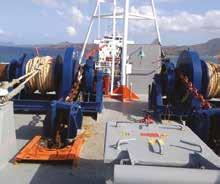
Angola is set to become one of the next bunkering hubs in the WAF region due to four key points:
1. Angola produces an excellent quality of light sweet crude oil containing low volumes of Sulphur (<0.5%);
2. Angola is in a privileged position to attract the maritime traffic of both South Africa – Lomé and Continent –Middle East routes;
3. Low port call costs and availability to receive bunkers at berth;



4. Increase in volumes in the near future with the incorporation of up to 3 more refineries.
ATH is driven by the objective of providing the best tailored bunkering solutions to clients at the highest standards.
We guarantee product quality and quantity – from sourcing to delivery and offer the best competitive prices
Email: bunker@ath-trading.net

GREEN FUELS Group is India’s largest integrated bunker supplier with a fleet of 13 barges positioned at various ports across East and West Coast of India. The group owns and operates the barges through its sister companies namely GENESIS PETROCHEMICAL & LOGISTICS, SUPREME MARINE BUNKERS, KESARI MARINE SERVICES, INDHAN ENTERPRISES. With over 2 decades of experience, we have built our edge over the competition by providing seamless service experience to our clients and deepen our market share. The company has diversified into cargo imports to meet the ever-increasing demand of our clients for bunker fuel availability on continuous basis at critical Indian Ports.
The core pillars of strategy have been the operational efficiency and safety at the highest level by owning and operating majority of the logistical chain. This has helped us maintain our long-standing
business relationship with Major Bunker Fuel Suppliers, Ship Owners, Charterers, Trading houses. The company is aiming to have its own vessels at all Indian Ports to deliver the Bunkers under the direct control and monitoring of Green Fuels.



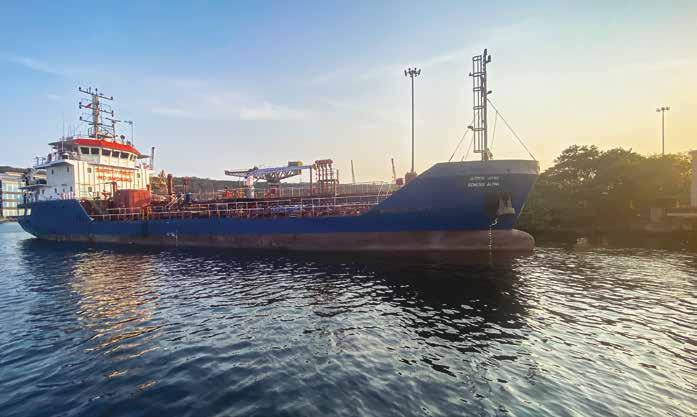
Green Fuels Group recognizes the importance of sustainable practices in the maritime industry, and as a responsible company, we are dedicated to working closely with key stakeholders to lower carbon footprints. Through collaborations and strategic partnerships, we aim to develop and promote cleaner and greener alternatives in marine fuel and lubricant solutions.
At Green Fuels Group, we are driven by a passion for operational excellence, innovation in service and customer satisfaction. With our investments in world class barges and tankage terminals, we are committed to building strong relationships,
and continually adapting to the evolving needs of the Bunker Industry.
www.greenfuelsbunker.com
ORGANIZACIÓN TERPEL is a company that sells Fuel in Colombia for automobiles, aircraft and vessels. It also produces lubricants with international operations in Panama, Ecuador, Peru and the Dominican Republic in the aviation market.
In Colombia, we are market leaders in liquid fuels and natural gas retail. We also have the largest chain of gas stations and network across the whole nation.
We have a highly qualified team that makes our operations fast and safe for every customer.
The team of Terpel gathers 3,000 partners in five different countries: Colombia,

Peru, Ecuador, Panama and Dominican Republic who commit every day to hard work and service, to keep industry and transportation moving. Our team is highly qualified and specialized in making our operations reliable, fast and secure for each of our customers.
Our team is constantly innovating our products to offer the best quality and price for you at all time. Therefore, we offer proposals that provide value to our customers at each service station, airport and maritime ports.
Our bunker business is located in Colombia and Panama where we deliver by barge, truck and pipeline. We provide marine diesel for passenger ships, fishing vessels,



tuna seiners, dredges, general cargo ships, tugboats, and logistics support vessels on the high sea.

We offer Marine Gas Oil and marine lubricants with the best quality and the best prices, in the principal terminals in Colombia and in Panama.
We are proud to have earned the trust of our customers by offering quality products as well as constant innovation at the best price for you.
If you need us, please contact us at bunkers@terpel.com and check our web page www.terpel.com
AT YOUR SERVICE!
Come with us as we continue to fulfill our dreams
The company has made significant strides in this area, including the development of a methanol fuel supply system, Exhaust Gas Cleaning System and Carbon Capture, Storage and Utilization System. These milestones demonstrate Headway's commitment to providing sustainable solutions for the maritime industry. With a focus on innovation and technology, Headway continues to push the boundaries of what is possible in the pursuit of a greener future for shipping.
Headway recently made history by becoming the first Chinese company to provide a Methanol Fuel Supply System. This was achieved through securing an order for the Methanol Duel-Fuel LowSpeed Marine Engine testing platform built by Dalian Marine Diesel Co., Ltd. (DMD). The order includes a customized fuel supply solution that covers major methanolpowered engines including MAN 9G95MELGIM, 7G80ME-LGIM, 7S60ME-LGIM, and 6G50ME-LGIM. The collaboration with DMD represents a major milestone for Headway, demonstrating the company has won approval from major alternative fuel-powered engine manufacturers and making them the first Chinese solution provider to receive orders for Methanol Fuel Supply System.
Headway Technology Group will offer a comprehensive “One-Stop Solution” to DMD, that comprises Methanol Fuel Supply Skid, Auxiliary Heat Exchange System, Nitrogen Generation System, and Control & Safety System. The entire system is set to be delivered by late 2023. Independently developed by Headway Technology Group, OceanGuard® Methanol Fuel Supply System is adaptable for both ocean-going and inland waterway vessels. The system has completed the initial prototype tests in the laboratory and is currently on the joint-test verification on an independent test platform.

With a global service network, prompt technical support and maintenance services, DMD has earned a reputation as one of the top-level suppliers powering tens of millions of gross tonnages around the world.
Furthermore, Headway Technology Group has established itself as a thought leader in marine decarbonisation through its research development and pilot test in different situation.
Dalian Marine Diesel Co., Ltd. (DMD) is a premier marine engine manufacturer in China, renowned for manufacturing the complete range of MAN and WinGD LowSpeed marine engines.
In tune with the commitment and conclusion of maritime industry, as stipulated during MEPC 80 and hereafter, the industry progresses further toward decarbonisation, hashtags such as “Low Carbon”, “Net Zero” and “Green Shipping” are gaining traction due to advancements in technology, industry development and regulatory improvement. The milestone represents a significant step forward in the pursuit of maritime decarbonisation and underscores the Headway’s commitment to providing reliable and sustainable solutions on alternative marine fuels for global customers.
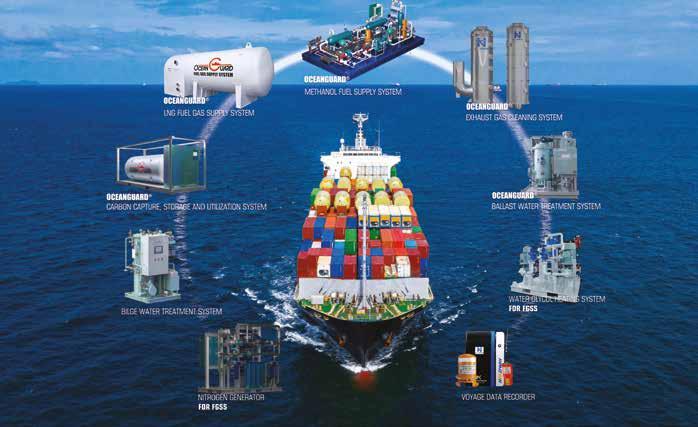
Bulk Inspection Services provides a unique and truly independent world-wide inspection, Ship to Ship transfer, blending programs & Blending Control, Bulk Terminal Audits, Bunker Surveys, Pipelines transfer control, Loss Control Investigation, Analysis and Certification services and Dry Cargoes etc. Inspection is carried out by experts in the field. Analysis is quick and efficient. And certification is universally recognized by all major oil, trading and shipping companies, insurance underwrites, by anyone with a financial interest in the shipment and for whom qualitative and quantitative control affects commercial success.
Bulk Inspections Services is having double certification: ISO 900: 2015 and ISO 17025: 2017

Mr. Miezan Niamke (below) is currently the CEO of Bulk Inspection Services . He is a member of executive committee of the Group. He has 32 years experience in petroleum inspection, Ship to Ship (STS) operations, Laboratory, dry cargo and managerial position prior to joining Bulk Inspection Services. He understands the commercial implication of the services they provide.
When you succeed, we succeed; high stakes are played in the world of international commerce. Crude Oil, Petroleum Products, Minerals and vast array of Dry bulk commodities are tradedsourced from every corner of the globe to be shipped to every other. Their sedentary progress exposes your commercial interest to varying fiscal and financial controls, systems and procedural methodology, geography and climatic conditions-even the cultures and habits the affect your shipment from one destination
• We understand the commercial implication of the services we provide
• We minimize financial risk through inspection
• We maximize returns and profitability by controlling quality
• We enhance your commercial success through the services of Bulk Inspection Services
Bulk Inspection Services specialized in inspection both onshore and offshore (STS) operations and testing of: Crude Oils,
• Fuel Oils & Gas oils
• Kerosene & Jet Fuels
• Liquid Gases Edible Oil and Fertilizers
• Dry cargos (cereals, minéralesmaganasse etc)
Additional services include:
• Bulk terminal audits

• Blending programs
• Blending control
• Bunker surveys
• Pipeline transfer control
• Loss control investigation
• Pumps Calibrations, Flowmeters & Ship tanks certification

At Bulk Inspection Services people count - literally. Recruitment is conducted at the highest level and training ongoing. Management it recruited from their area of operation but induced into Bulk Inspection Service’s philosophy of dedication and service centrally, at Head offices. Regional staff – mostly French West Africa and Central Africa zone are local to their inspection territories and constantly updated on the latest systems and techniques.
Investment in high technical standards and regional expertise is essential for surveys to be effective and Certification to be conclusive.
Our recruitment and training programmes are second to none. All managerial development is controlled centrally from Bulk inspection Services.
Pre-shipment certification ensure a smooth transactional passage for documentation, insurance valuation and import licensing. The costs and penalties of cargoes lying off or held up in dock because of inaccurate, incomplete or unacceptable paperwork can be as high as the delays are long before they are finally secured for shipment, Bulk Inspection Services inspectors conduct exhaustive checks to ensure that the goods, their containment and the paperwork that is to direct their passage, all conform to contractual specifications.
Tel: 00228 9004 5813
Email: ops@bulkinspectionservices.com www.bulkinspectionservices.com
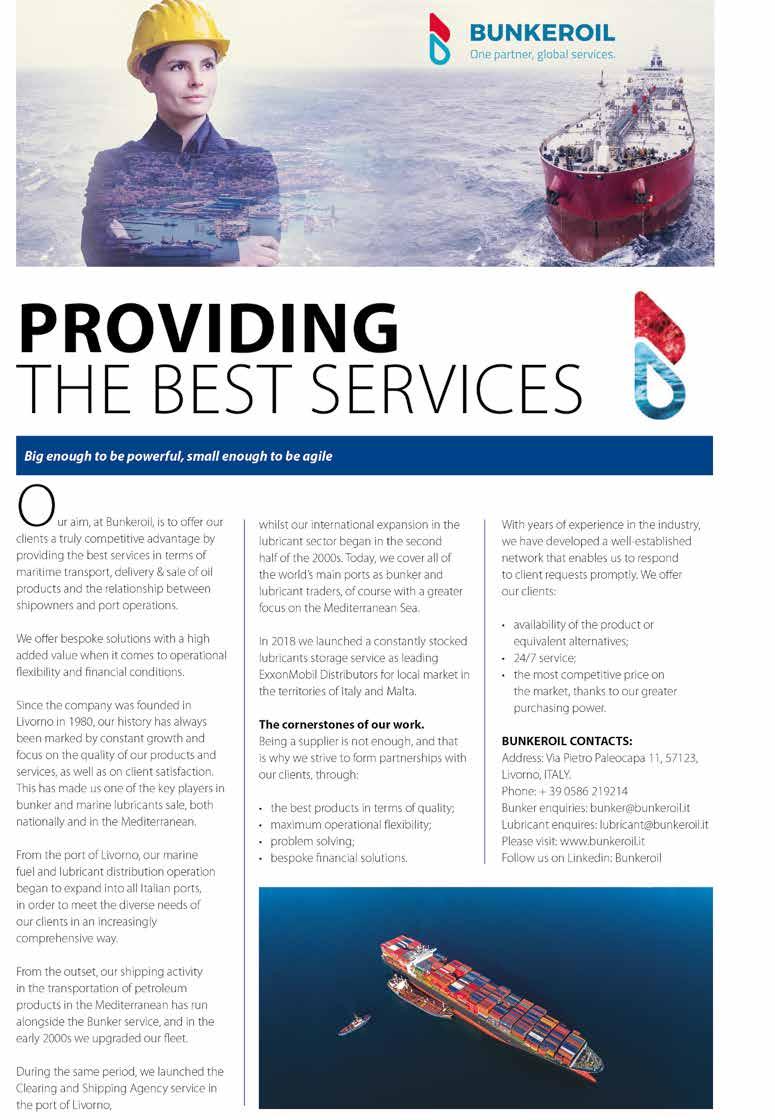
Based in Cape Verde, strategically located on the main maritime routes between Europe, West Africa and the Americas
ENACOL, offers high quality fuels and lubricants and ensures efficient delivery service to all types of vessels:

Guaranteed Marine fuels quality according with ISO 8217: 2017 standards:
• LS MGO Max 0,1%S (constant availability)
• IMO 2020 Compliant Fuel Oil with max 0.5% Sulphur Content
• Competitive prices in the region
• Safe and efficient supply service
• Fleet compliant with international standards: MARPOL, SOLAS, ISPS and ISM
• High quality lubricants in partnership with GALP-LUBMARINE
Enacol can deliver bunker fuels to international fleets in Cape Verdian main ports of Mindelo (alongside berth and anchorage) and Praia (service alongside berth only) by barge, truck or pipeline.
Mindelo have been reinforcing its position as a recognized and specialized “bunkeronly” port due to its perfect anchorage conditions for a safe and efficient quick turnaround bunker operation without congestion, bad weather or security risks.
The port, supported by an international airport nearby and quality hotels for accommodations, offers a wide range of
maritime services, such as crew changes, spare parts supply, ship chandling, sludge disposal, fresh water, among others.

We look forward for your enquiries!
Phone: (+238) 5346065;
Mobile: (+238) 9968405; (+238) 991 5964
E-mail:
bunker@enacol.cv I energia@enacol.cv www.enacol.cv
Orion Bunkers has grown over the years to be a trusted name in the bunker industry, which has been achieved through the provision of exceptional levels of customer service.
We are fully certain that it is the people involved in the business that make the difference, and this is why our team always goes the extra mile.
We have developed and earned a first-class reputation and built a close and trusted relationship with suppliers and customers alike.
Having vast experience in supplying both grades of marine fuel (VLSFO & LSMGO), Orion Bunkers has recently inked exclusive deal with the local refinery for supply of LSMGO to the ships calling at port Karachi and Bin Qasim.
As VLSFO price in Karachi is very competitive compared to other ports in South Asia and Middle East, we are excited to share that gas oil price would also be very competitive.
So, ships can take both products at berth during cargo operations and bunker only call service is also available.
Therefore, lets grow together!
Email: info@orion-bunkers.com
Website: www.orion-bunkers.com
Tel: +92 21 35292523 – 24
Direct: +92 21 35292527
Mob: +92 333 5045048
Orion Bunkers provides round-the-clock reliable and cost-effective bunkering services. We believe that the fuel industry relies greatly on people and companies that consistently offer reasonable, accurate and efficient services
Established in 1998 and licensed by the National Petroleum Authority as an Oil Marketing Company in Ghana, EGL has grown steadily in both the Retail and Commercial Sectors. EGL operates as a wholly owned subsidiary of Mocoh Ghana Limited and boasts of a dedicated team of skilled professionals.
Over the years, EGL has solidified its position as Ghana's preferred physical bunkering supplier, providing marine bunkering services to vessels operating in various maritime sectors. With a commitment to efficiency, safety, and environmental responsibility, we cater to the refuelling needs of ships ranging from cargo carriers to cruise liners. As a trusted bunkering partner, we ensure timely and reliable delivery of quality fuel products, adhering to international standards and regulations.
Fuel Products:
We offer a comprehensive range of marine fuel products, including Marine Fuel Oil (RMG 180) and Marine Gas Oil (MGO/DMA), meeting ISO 8217:2010(E) specifications.
Our fuel products comply with IMO (International Maritime Organization) regulations, meeting the required sulfur and emission standards.
Delivery Capacity: Our strategically located bunkering terminals enable us to efficiently serve vessels at the Tema and Takoradi ports in Ghana by both Bulk Road Vehicles and expipe onshore. Best of all, we do not place restrictions on quantities ordered.
Quality Assurance: We implement stringent measures to ensure that our delivery and sampling methods comply with Annex VI of MARPOL 73/78 regulations to maintain consistent product quality.
Safety Measures: Safety is ingrained in our bunkering operations, and we strictly adhere to industry best practices and safety guidelines. Our bunkering team undergo rigorous training to handle bunkering operations safely and efficiently.
Environmental Responsibility: As an eco-conscious company, we are committed to minimizing the environmental impact of our bunkering activities.
Our adherence to low-sulfur requirements helps reduce emissions, contributing to a cleaner maritime ecosystem.
Compliance and Certifications: Our bunkering operations comply with all relevant international and local regulations, and we hold the necessary certifications and licenses to conduct bunkering operations in compliance with industry standards.
By choosing Engen Ghana Limited as your preferred bunkering partner, you can be assured of efficient and environmentally responsible services backed by our team of dedicated experts who are ready to fulfill your maritime bunkering needs.
www.engen.com.gh


With bunkering remaining one the core service for vessels visiting British Gibraltar Territorial Waters, Gibraltar Port is now also open for bio-fuel deliveries - in fact, a number of supplies of bio-fuels have already been carried out in the port, these being the first of what we hope will be many such operations as we look to expand these services and meet demand as it ramps up, John Ghio – CEO and Captain of the Port commented, adding that ‘this was just an example of how Gibraltar Port continues to evolve its many services to meet sustainable and environmentally driven improvements within the maritime world’.
Gibraltar’s Maritime Services under the umbrella of HM Government of Gibraltar, has also been able to attend a number of prestigious face to face events in the last 10 months, as well as hosting some of its own.

These included a very successful Gibraltar Maritime Day in London event in February and Gibraltar Maritime Week in June, with delegates from all over the world visiting Gibraltar. Feedback from both events has been extremely positive with a number of potential partnerships and business opportunities being developed since.
Vijay Daryanani, Minister for the Port commented ‘Wherever we go and whomever we talk to, Gibraltar continues to enjoy a high reputation in maritime circles adding that HM Government of Gibraltar’s Maritime Services approach of continuous engagement with the key players in the maritime industry is an important tool in keeping Gibraltar at the forefront of minds and direct engagement and face to face marketing continues to be the cornerstone of the Port of Gibraltar’s marketing strategy.
He added that HM Government of Gibraltar now looked forward to participating in London International Shipping Week where, under the umbrella of Gibraltar Maritime Services, they will be hosting a very prominent reception to be held on the rooftop of the IMO building in London with a very high calibre list of guests who are leaders in their industries offering the opportunity to expand on why Gibraltar is considered a Centre of Maritime Excellence, especially in relation to bunkering activities as well as the many other legal, financial and customer-focused services provided by our excellent local agents.
Q4 2023... NOW OPEN FOR BOOKINGS
The marine fuel market has become much more complex due to both the expanding limits on sulphur in fuel and the shipping industry's transition to net zero. We look at how additives are being used in today's market.

While impending bunker licensing in key ports is a major issue for players in the conventional marine fuel sectors, moves towards decarbonisation are becoming increasingly obvious.
The recovery from Covid 19 has not been without setbacks but trade flows and bunker volumes are broadly back to previous levels. However, the commitment to net zero is already beginning to change the industry as new fuels come onto the scene.
IBIA News, Views & Analysis
Plus: Interview – Industry News – Environment – Testing – LNG –
Lubricants – Innovation – Legal News – Equipment and Services –Diary – Event Previews & Reviews
5TH IBIA AFRICA BUNKER AND SHIPPING CONFERENCE
ACCRA, GHANA
The 5th IBIA Africa Bunker and Shipping Conference is a highly anticipated event that will take place in Accra, Ghana from 5 - 7 September 2023. It will bring together industry specialists from the African region and around the globe to discuss the latest developments and challenges in the energy and shipping sectors. With Accra's status as a key maritime hub in West Africa, attendees will have the opportunity to explore opportunities and challenges related to the industry in the region. The conference will cover a range of topics related to physical supply chain, financing the marine industry, future fuels in bunkering, bunker quality and quantity, and regulatory issues. Attendees will also have the opportunity to network and learn from leading experts in the field. For more information:
https://ibia.net/event/ibia-africa-bunker-and-shipping-conference/
LONDON INTERNATIONAL SHIPPING WEEK
LONDON, UNITED KINGDOM
Since its inception in 2023, London International Shipping Week (LISW) has grown consistently and is set to become an even bigger event in 2023, when the shipping world is once again able to meet in person.
For more information: https://londoninternationalshippingweek.com/
SINGAPORE, ASIA
IBIA 2 DAYS BASIC BUNKERING COURSE (SS600:2022 & SS648:2019)
We aim to provide participants with a solid foundation in the bunker industry and its processes, per the guidelines outlined in SS600:2022 –Code of Practice for Bunkering and SS648:2019 in Singapore. This will include instruction on technical and operational principles related to mass flow meters, system integrity, sealing requirements, and processes, as well as emphasising the importance of personal safety, the necessity of personal protective equipment (PPE), and safe boarding practices. In addition, we will provide solutions for resolving disputes and conduct workshop activities and present case studies to enhance the overall learning experience of the participants.
For more information: contact noraini@ibia.net / siti@ibia.net
TRANSPORT EVOLUTION AFRICA FORUM AND EXPO
DURBAN, SOUTH AFRICA
The 11th annual Transport Evolution Africa Forum & Expo, the continent's premier port, rail, and road event, takes place in Durban, South Africa in 2023. This event unites local, regional, and international stakeholders involved in planning, investing, and supplying Africa's transport infrastructure. Amidst an industry transformation driven by digitisation, climate change, and structural changes, the event showcases the latest projects, products, and networking opportunities to shape the industry's current and future outlooks. Focused on partnership development, knowledge sharing, and project expansion, participants collaborate to initiate new projects and implement visionary objectives. For more information: https://transportevolution.com/
SINGAPORE, ASIA
IBIA 2 DAYS ADVANCED BUNKERING COURSE (SS600:2022 & SS648:2019)
This program offers advanced knowledge and skills for utilising SS600:2022, SS524:2021, and SS648:2019 in the workplace. Its goal is to enhance industry professionalism and improve workforce competitiveness and employability. The program provides formal qualifications recognised by the industry. It creates opportunities for workers to advance their careers through structured training and progression pathways. This measure enhances the career prospects of workers in the bunker industry.
For more information: contact noraini@ibia.net / siti@ibia.net
The prominent ARACON bunkering conference returns to Rotterdam on 19-20 October, providing a comprehensive and candid overview of the marine fuels and shipping sectors. Drawing major bunker suppliers, barging companies, shipowners, and managers from the ARA region and Northwest Europe, the 2023 event promises engaging content, lively debates, and exceptional networking opportunities. The conference culminates in a reception and dinner at the exquisite Royal Maas Yacht Club.
For more information: https://www.petrospot.com/events/aracon-2023
IBIA ANNUAL CONVENTION 2023
DUBAI, UNITED ARAB EMIRATES
Join us at the IBIA Annual Convention 2023 in Dubai, IBIA’s premier Convention curated for the bunker and shipping industry, offering a comprehensive program packed with insightful presentations, engaging workshops, and networking opportunities. Themed "Steering the Industry Towards Transparency: Navigating the Future of Energy," the convention will tackle key issues such as sustainability, regulations, technology advancements, and market trends that shape the global industry. Open to all industry stakeholders - ship owners, bunker suppliers, traders, brokers, maritime professionals - the event offers valuable learning opportunities, fosters strategic partnerships, and contributes to shaping a sustainable and prosperous future for the bunker and shipping industry. For more information: https://www.ibiaconvention.com/
PROPULSION & FUTURE FUELS CONFERENCE 2023
HAMBURG, GERMANY
Join the 44th Motorship’s Propulsion & Future Fuels Conference from 21-23 November 2023 in Hamburg, Germany. This prestigious event, chaired by BIMCO's Deputy Secretary General, Lars Robert Pedersen, will delve into the steps towards 2030 and 2050, highlighting the future of fuels and efficient propulsion technologies. Drawing over 200 attendees from around the globe, including influential operators managing a total fleet of 5,100 ships, the conference promises insightful discussions on decarbonisation financing and cutting-edge alternative fuels. For more information: https://www.motorship.com/propulsion-andfuture-fuels-conference/buy/pff-2023-delegate-bookings
MARITIME WEEK AFRICA
CAPE TOWN, SOUTH AFRICA
Maritime Week Africa, managed by Petrospot, returns to Cape Town, South Africa. This event unites essential bunker buyers and suppliers, along with ports, refiners, regulators, and other paramount maritime professionals. Together, they spotlight the distinctive challenges and opportunities inherent to the African bunkering industry.
For more information: https://www.petrospot.com/events/mwaf24

IBIA ANNUAL DINNER 2024
LONDON, UNITED KINGDOM
Join us for the much-anticipated IBIA Annual Dinner 2024, set to take place on Monday, 26 February 2024 at the luxurious Grosvenor House Hotel, Mayfair, London. A pivotal event in the bunker industry's calendar, this evening serves as a tribute to our valued members and their esteemed guests, offering an exceptional opportunity to network with industry leaders and decision-makers. As we return to the iconic Grosvenor House, prepare for an unforgettable evening of celebration, shared successes, and promising connections. Join us to honour the spirit of the bunker industry and shape promising futures at the IBIA Annual Dinner 2024.
For more information: https://ibia.net/event/ibia-annual-dinner-2024/
• Marine bunkering Operations
• Barge capacity 880 m3
• Delivery from 10 m3 to 880m3
• Certifications: Quality ISO-82172017 / Marpol Procedures

Atlantic Energy was founded in 1999 and has been fully concentrating on selling bunkers to vessels.

Our Marine fuels and Services consist of Low sulfur Fuels oils, Liquified Natural Gas ( LNG), Distillate Marine Fuels , Lubricants with Truck capacity 36m3

We manage with local vessel agents for the whole supply chain - from our terminal to vessel.
Deliveries are made by own barge inner le Havre and Rouen Port (24/7 365 days a year) and we are able to supply by truck in all French ports.
